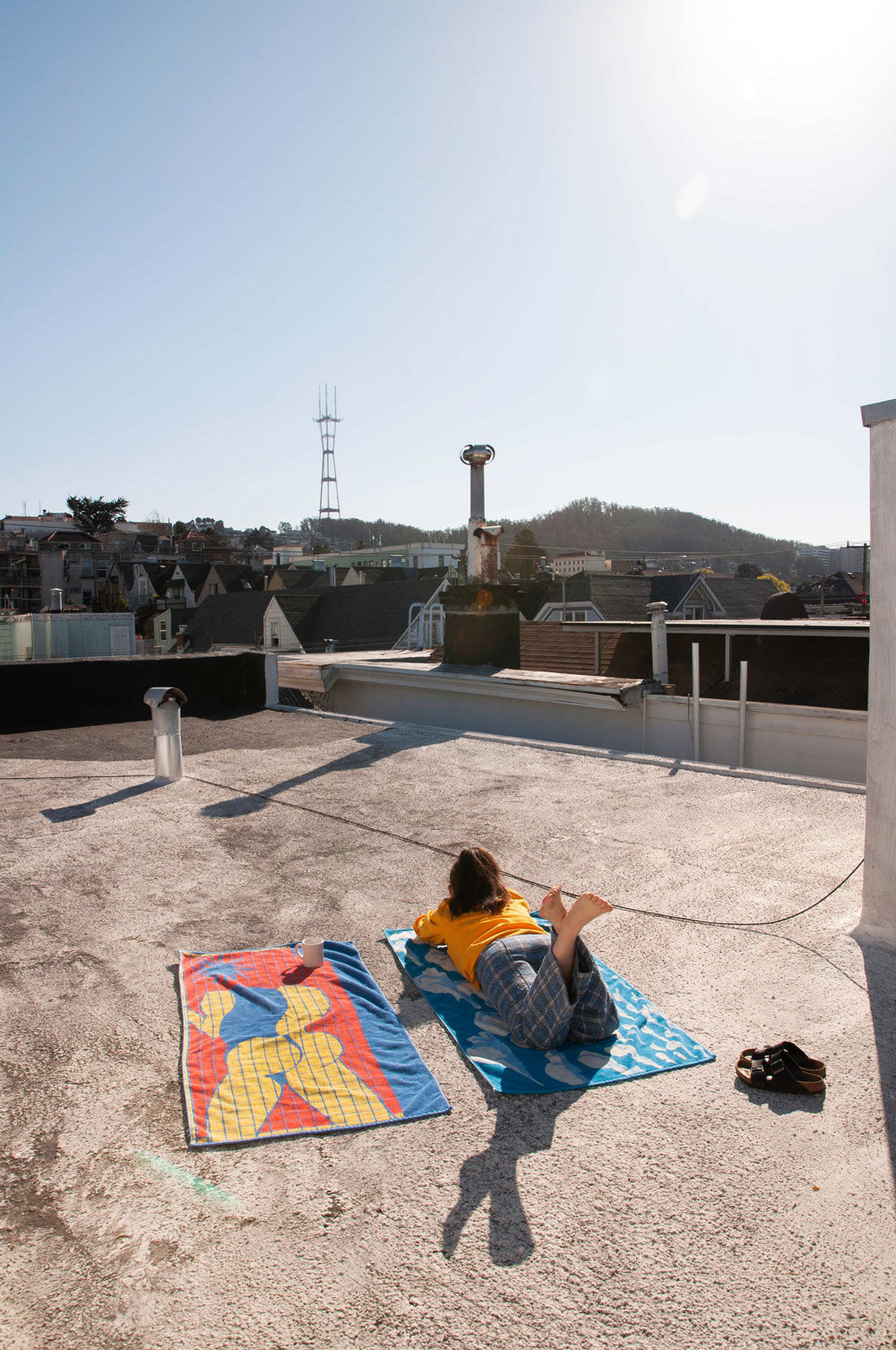
Usable artworks in terrycloth
Cotton towels
For the beach or the home
Designed by rising artists
Jacquard-woven in the USA
And never mass-produced
Limited editions for art lovers
And gourmet bathers alike
With other sunshine essentials,
Home goods, and plunge gear
Handmade by our talented friends

A project by Jessica Thornton Murphy
In San Francisco, California
Made possible by:
ARTISTS
- Mark Ochinero
- Tyler Cross
- Rachel Kaye
- Chelsea Wong
- Rob Moss Wilson
- Kidtofer
- Lena Gustafson
- Charlotte Beavers
- Oliver Hawk Holden
- Maria Paz
- Lukaza Branfman-Verissimo
- Momo Gordon
- Wardell McNeal
- Yulia Zinshtein
- Solange Roberdeau
- Daisy Sheff & Karen Barbour
- Craig Calderwood
- Tate Kim
- Aaron Elvis Jupin
- Molly Bounds
- Lucy Stark
- Natalie Bessell
- Sanaa Khan
- Elana Cooper
- Annie Duncan
- Gabriel Kasor
- Rainen Knecht
- June Gutman
- Anjelica Colliard
- Trey Flanigan
- Lance Rivers
- Vincent Jackson
- Morgan Corbitt
- Bailey Anders
- Ocean Escalanti
- Matt Carignan
- Jeffrey Sincich
- Gina M. Contreras
- Elle Willson
- Nayeli Perez
- Jessica Thornton Murphy
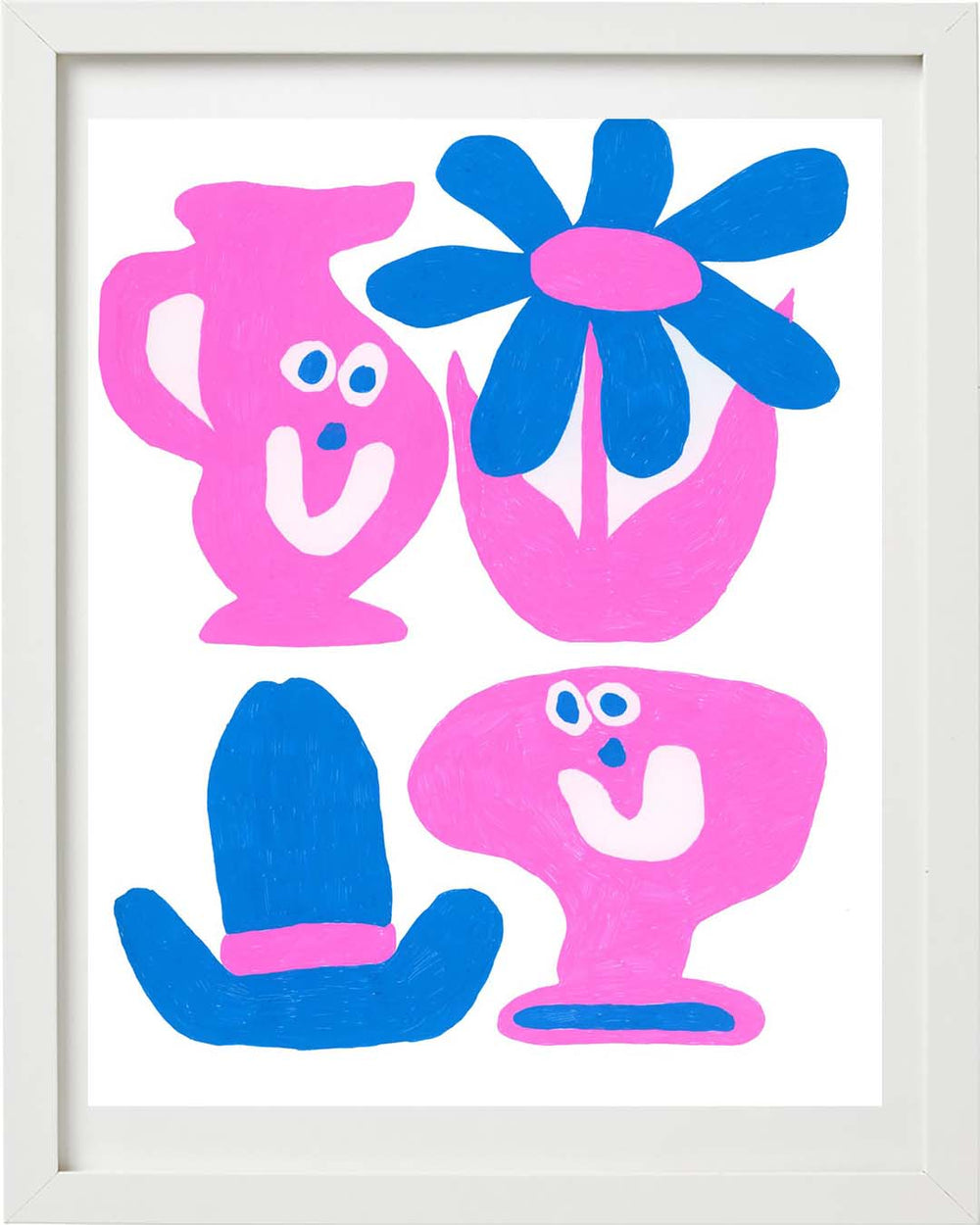

Friendly Assembly | August 2020
Mark Ochinero is a Bay Area-born illustrator and photographer currently based in San Francisco. His work captures the humor and irony of everyday life and objects: whether he's using a camera, gel pens, crayons, or ceramics, Mark always offers a playful change of perspective.
Find more of Mark's work:
Mark's InstagramMark at Legion Projects
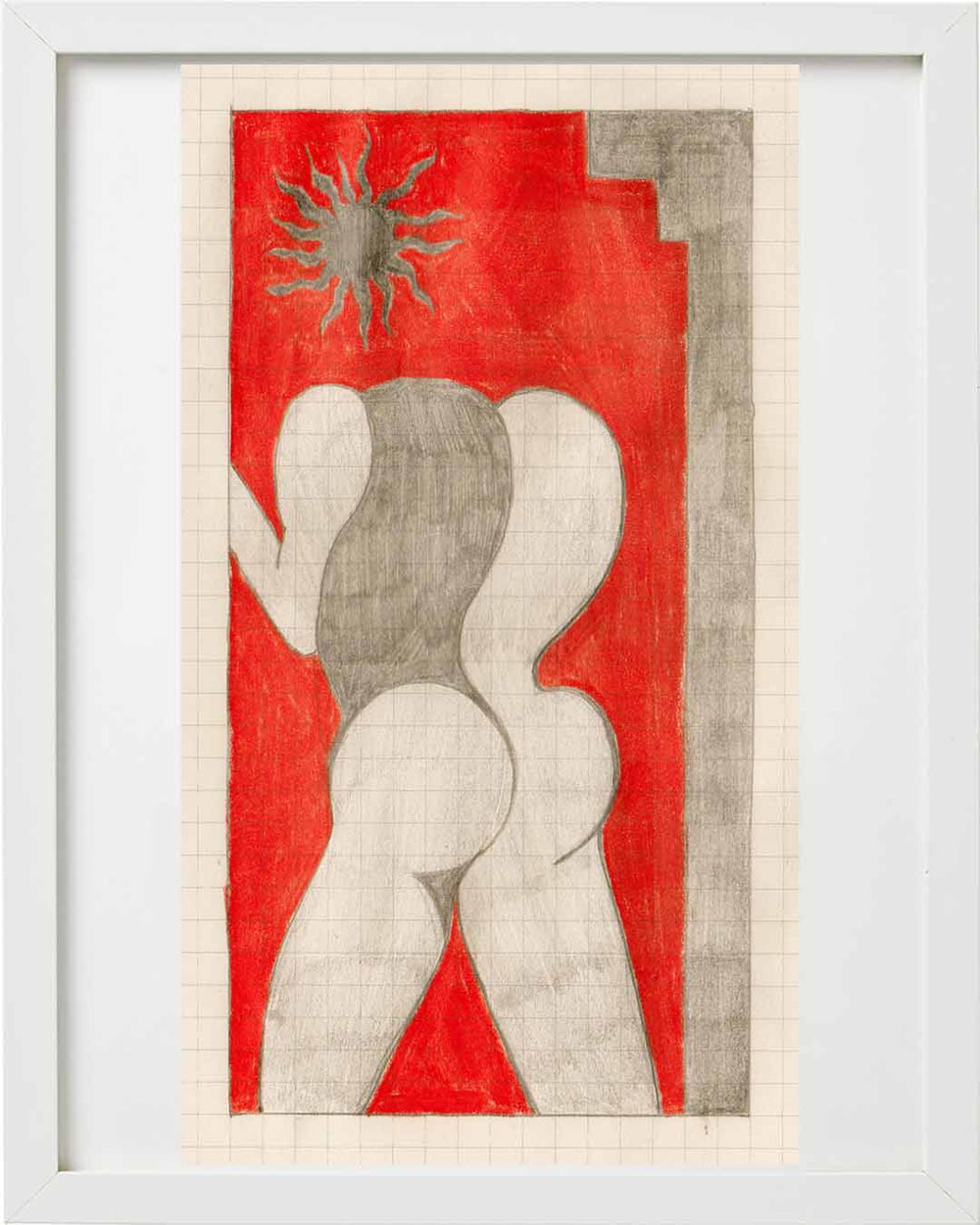

Sun Buns | June 2020
Tyler Cross is an artist based in Oakland, California. Although he is best known for the ceramic sculpture he makes in collaboration with his boyfriend, Kyle Lypka, Tyler maintains a focused solo practice of sculpture, painting, and drawing which poetically explores his fascination with the complicated relationship between art and functionality. Using a private language of color and shapes, echoes of which dance fluidly from his flat to three-dimensional works, Tyler constructs paradoxical artifacts and the abstracted landscapes from where they came.
Find more of Tyler's work:
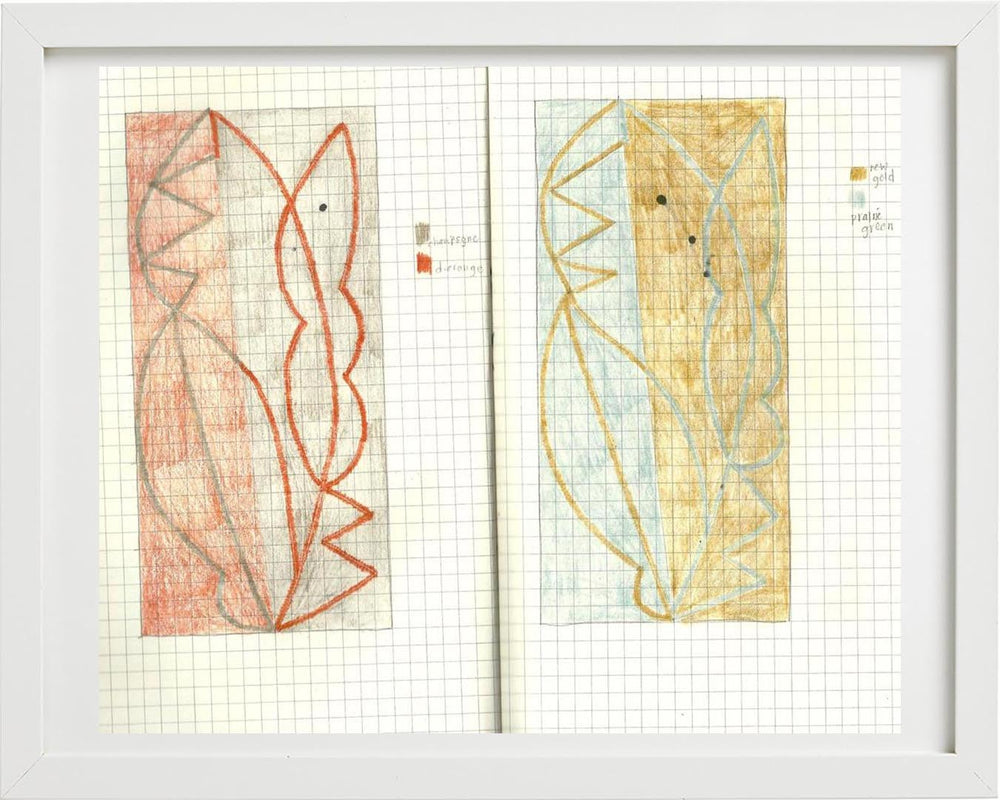

Wavy Blades | September 2020
Rachel Kaye is an artist based in San Francisco, California. Her love of fashion and textiles has informed a meditative study in collage, pattern, and movement where her paintings come to life in vibrant melodies of color and shapes.




A conversation with Rachel from Plunge Rag Vol. 2:
PLUNGE: I remember taking your collage class at Case for Making ages ago. Do you still work in collage at all?
RACHEL: Every now and then. For a long time collage was always this thing for me when I felt I was stuck in painting or drawing. It’s like cooking in a way, it is immediate, instant gratification. I could make these quick loose things and then they would help me. For a while I would make paintings off of them, then they just became this way to keep myself active.
What is your daily practice like?
I’m probably in [the studio] on average 30 hours a week. Then I feel like things ramp up with a show. I used to be a night worker and I’m not so much anymore because I’m just tired from having kids and I want to get a good night’s sleep, but that being said when I have deadlines I’ll come here at night too and get extra hours in. Something that switched in the last couple years is the paintings and drawings clicked together. I feel like they were always two separate bodies of work and now I’ll make a lot of drawings that then I can scale up for paintings, which feels really good. I feel I have a line of process to get to the paintings.
So are you finding that you’re doing more painting than you ever have?
When I had that show at Part 2 [Gallery], I was definitely painting a lot and then Hawaii kind put the brakes on that, which was unfortunate because I had all this momentum.
Is that just because you were limited by your materials?
Yes. I just couldn’t bring canvas, I didn’t have a big enough space, painting is so messy… and just the functionality of making drawings. But I did make bigger drawings though which was cool in the sense of the scale being bumped up.
Do you find that your practice changes when you’re moving around a lot or traveling?
It just always goes back to drawing which is kind of my [default] and I feel like in some ways the drawing’s always stronger because I never stop. I love drawing but it is frustrating as a painter when I do want to push the paintings and I have to stop and go.
Do you think that’s why the paintings and drawing have meshed?
Maybe. I think it’s more when I started working in bigger blocks of color. For 10 years now I’ve been making these colored pencil drawings and they were so heavily patterned in the beginning, and then all the pattern slowly kept getting whittled out, and suddenly now the forms are more important, which makes painting more accessible for me. Painting a heavily patterned painting felt more laborious than gratifying, so I’d make one or two and be done. Now I see endless ideas in the paintings. I guess it took 10 years for the two to click for me.
I’ve noticed a lot of movement and emotion in your work and it often feels very lyrical. There also seems to be some allusion to music in your show titles, like Loop Melody and Song in a Room. Do you listen to music while you work?
I go through phases of listening to a lot of music and then for a while, like during the last election, I listened to a lot of the news and then I completely shut out the news and I’ve been listening to a lot of books. I guess when I look at the pieces as a whole, that’s when I start to think about the rhythm between them and the repetition of shapes and the movement that you see that’s the thread between them.
Can you talk about where some of your shapes and forms come from?
Definitely the environment… like for [Drawings from the Pacific at Sarah Shepard Gallery] I was in Hawaii -- I did all the work there so I was alway thinking about the place. Literally you look out the window and it’s just an incredible landscape, really cinematic. I usually make quick sketches, then when I find something I like, I start to really slow down and play and work out compositions before I get a drawing going. So there it was much more about natural environments, but before I was in Hawaii I would often find shapes in debris, like when I was working in the garden, or my kids cutting up stuff… it was really domestic for lack of a better word. [I was] always home and so that’s how far I saw things, and then [in Hawaii] I would go on a hike and I would see things. I sometimes photograph things but they never turn out how I like and I prefer the memory of remembering something, so I’ll try and capture a shape and then play around with it and it’s a loose interpretation of that memory.
There’s a nice inner-world-versus-outer-world conversation, and then you’re finding these really beautiful moments, studying them, and then working them out in your painting. That’s really lovely. In thinking back on your career as an artist, are there moments that you feel were really pivotal?
The JB Blunk Residency was probably the most pivotal, even though it was simultaneously a really hard time. It’s something that I think a lot about because my work did a major change around that time. When we got there, we’d landed in Inverness [California] from New York and I think it was really pivotal in the practice of just being an artist. We had a stipend, so I wasn’t hustling. Also, I grew up in the suburbs and always lived in the city, so being in a remote place changed me. I never knew how much I would love living tucked away in nature. But I didn’t really make anything big when I was there… major growing pains. Leaving New York coincided with my work doing a 180, so I didn’t know what I was doing, I was trying to make paintings; they weren’t working. And in the end, the last two weeks, I started making these drawings based off of an actual pattern. I made six of them or something and I left with, “I can do something with this”. Basically, those last drawings that I made, I still see as the thread to where I am now.
So it seems like the residency shook you up in a way that allowed you to explore.
Yes. I basically went there and was like, “I’m not making that work, but I don’t know why.” It was really stressful because here I am being told I can work and I don’t know what to do. Also, being there with [Jay] who is always super prolific, he was there and ready to work, he made a boat, he made a bunch of paintings. I would pretty much be in the studio crying, “this is so hard, is it done for me?” Anytime you read anyone’s autobiography, there’s rarely a case where an artist isn’t confronted with those moments. However when you are in it, it’s hard to see how you’ll get past it.
Totally, and those moments can be really important for the work to progress. Do you ever find yourself stuck now?
I’m lucky I haven’t been stuck for a while. Honestly, strangely, the pandemic was really productive for me and I’m excited for where the work will go next.
Do you find that you’re most interested in the process of making work or the outcome or something in-between?
I think both. Painting is so much of the experience of painting in itself. There are many moments in making a painting that can feel magical and unexpected. I’m so process driven in my practice that I need those moments to feel excited in the studio. Sometimes I know a painting is done but I’m not even sure I like it. I often ask myself how do I make a painting that has that same immediacy (as the drawings), and also have the medium integrity that I want — it sounds very “beginner”. But isn’t the goal to have that feeling, like a child who makes something with such immediacy and stops with the same fierce intention. The brain’s thought isn’t leading, it’s visceral.
It seems like keeping a “beginner’s mind” is really important to many artists I’ve talked to for growth, not getting stuck in a certain way of making, and not having an ego about being at some level where you can’t move backwards to explore new things.
People who are artists can think in a different way. They don’t think in yes-or-no answers. They don’t think something’s a failure because it wasn’t done right. You constantly are failing and that’s how you get on with it. To me being in that mind-state of learning is so valuable because it’s a fucking crazy world! And there’s not just “one way”.
Can you talk about your path to first becoming an artist? Did you go to art school?
Yes, CCA for undergrad. I never went to grad school… maybe one day.
Were you always creative growing up? Was there creativity around you?
I was but I was not a good drawer. My mom was always sewing but she’s by-the-book, and my dad was always fixing things. It was very practical, utilitarian creativity. I was obsessed with dance as a kid. I danced until I was 16 and then when I stopped, I was like, where do I put my energy? I had a really good art teacher in high school. I always liked those classes, but there’s those kids that have that innate gift of perfectly rendering whatever it is they’re looking at and I wanted to do that, so I started taking classes at community college. I’d go to the local art center and do all the figure drawing sessions, I was really formal in my training. I wanted to be able to master the figure and that’s how it all started.
Do you feel like you got what you wanted out of art school?
I think so. Some of my closest friends are people from the CCA, and I think so much of being an artist is finding community of people to support you because it’s such a lonely field.
How did you make the leap into a career as an artist after school?
I just always had a side hustle. It was always like, how can I make good money and not work full-time so I can be working in the studio?
Even then, were you always making art?
Yeah. It would ebb and flow. I’d have really prolific times and then not-so-prolific times. In the last three or four years I’ve just been really head-down and consistently making work.
Do you ever find it difficult to tell people what you do?
Yes. Something that drives me crazy is people will be like, “How did you get all this work done?” It’s a job. I work. So much about motherhood gets tangled into that too, which if I had a normal job, no one would question.
It’s so interesting because at the same time, being an artist is very glorified somehow.
There was a really good quote which I don’t know verbatim, I think it was something someone said to Picasso or something: be a freak in your studio, and just live your normal life… Which resonates because my life looks conventional in marriage and home life or whatever. But it’s not, because we’re both artists and are working for ourselves and making money… I could look at paintings all day. Painting is like… you start with nothing. It’s a complete illusion of the world. To me nothing is more interesting than making something out of nothing. I’m a painter’s painter in that way. There’s so much magic there and there’s a reason it’s still being made — because it’s endlessly fascinating for the maker. Maybe the work is nothing new in the history of painting and maybe it is, but it’s not about that. Sometimes the most interesting stuff happens just when you’re making the work, it’s not always when it’s a finished thing.
How does making art make you feel?
I mean, it makes me feel like everything. Some days, it’s really good and some days I’m like, “What am I doing?” Sometimes things feel really fast and then things feel a little slow. A lot of times drawing is really calming for me, grounding and centering. Yes sometimes, it feels like everything…
☺
SINCE THIS CONVERSATION RACHEL HAS COMPLETED A MURAL FOR GOOGLE, HER LARGEST TO DATE. IT’S 32 FEET TALL AND WRAPS AROUND THE EXTERIOR OF AN ELEVATOR SHAFT. SHE AND HER FAMILY ARE HEADING BACK TO MOLOKAI FOR THE SUMMER AND SHE’S EXCITED TO MAKE WORK THERE AGAIN.

CHECK OUT RACHEL'S PLAYLIST ON THE PLUNGE SPOTIFY PAGE ~
Find more of Rachel's work:
Rachel's Instagram
Rachel's Website
Rachel in Luxe Magazine
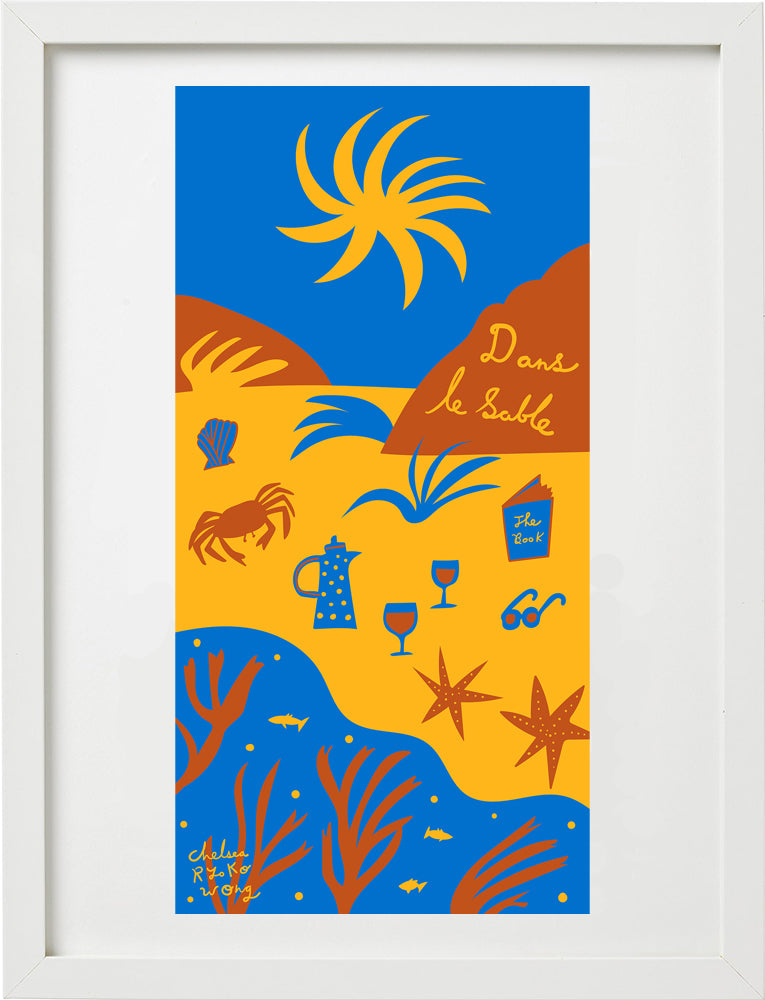

Dans le Sable | October 2020
Chelsea Wong is a painter and muralist whose work reflects a deep love of her San Francisco, California community. Celebrating diversity and color and infusing happiness and joy, Chelsea creates flourishing scenes (both real and imaginary) that share some of life's best moments.

Chelsea has infectious, positive energy and it makes you want to hang out with her forever. We chat about how she shares her studio with a dear friend named Jared Silbert who does graphic design and painting.



Q & A With Chelsea Wong
Chelsea has infectious, positive energy and it makes you want to hang out with her forever. We chat about how she shares her studio with a dear friend named Jared Silbert who does graphic design and painting.

PLUNGE: How often are you here working?
CHELSEA: Well, it depends. For shows, like every day. If it was my choice I would be here Monday through Friday and have weekends off. Ideally I’d be here five days a week solid. When I come here I come in at like 11 and I leave at 11… It’s an all-day thing. They have a daughter, the people who own this building, and their daughter thinks I live here. All I need is a fold-out bed and I pretty much would live here.
So you’re making art full-time then?
Yeah, I work one day a week though, I’m working at Bi Rite.
At what point did you make the transition from a full-time job to a full-time art practice?
A couple years ago, something like that… 2019… because I was working full-time in tech at Craigslist. I worked there full-time forever and it was soul sucking. And then I had the offer to do [a] Facebook mural and they wouldn’t give me the time off so I was like, okay great I’ll quit. And that was that. And then my mom was like, if you don't go full-time now you’ll never know…
So you kind of just dove in?
Yeah I was like, if it doesn’t work I’ll just get another job, it’s fine. I have some job skills, I’m not gonna go broke or hungry or whatever.
So when did you come to San Francisco? You’re from Seattle, right?
Yeah, Seattle born and raised. I came here for a guy, like all good stories. I did apply to college and was like, I’ll probably get in to CCA. So I moved here without knowing and I got accepted… So I moved here in 2007.
Did you get what you wanted out of art school and does it inform your practice now?
That’s such a good question. I do think the answer to it is yes. I feel like I should probably be considered an art school success story, but even to this day I still don’t know if I think people should go to art school and pay a lot of money for it. I’m very torn on that. A lot of people, you can just tell that they’re not going to be successful within art afterwards… you just know. And then for me I do feel like I’m an exception, which is sad, but I did get what I wanted out of art school because right now I’m living my dream. I don’t feel like that would have been possible if I hadn’t gone to art school and I don’t really know if art school prepared me for life after. But I don’t regret it at all; I loved every minute of it. I do think the amount of loans people take out to go to art school… it’s insane. Honestly I had a lot of regrets after I went to art school and I wondered what life would have been like if I had just become a marketing person, this or that.
What do you think was the key to making it work for you? Why do you think you were successful when others weren’t?
Well… I always tell people: never quit making art. I worked at a storage facility for a long time, like in a trailer, and I was still making art during that time, I made art when I was traveling, I made art when I was working in retail, I made art when I was working at Craigslist. The ball was still always rolling even when I was working full-time.
Do you ever find yourself in a creative funk or block?
A little bit, yeah. Right now, actually. After a show, always… I worked 24/7 for this show in New York. I had to say no to a lot of stuff, I worked so hard, didn’t have any days off, coming home at midnight or 1 am… I do feel a little bit sad after shows like that because I have all this momentum going…
And then it just stops?
Yeah, and even though the show is pretty much sold out it still feels weird to me. I have to find my rhythm again. I like to be busy.
How do you work through those moments?
I just start painting.
So you just force yourself to keep going?
Yeah, I have to. I can get distracted very easily and procrastinate so I have to just sit down and push things out. I try to be very disciplined. It’s very scary for me to not be busy. So goals help me, and I write things down in my notebook, or sometimes I like to take free projects too. Not a lot, I don't like to work for free, but sometimes I like to do things that feel more like volunteering or an exchange or something. I like to have things lined up.
So you kind of answered this in other ways, but how does making art make you feel?
Oh, it feels like water, it feels like air. I get so sad when I don’t make art or I’m not in the studio. I really do want to just paint. I’m trying to figure out how to do less of my own administrative work or say no to projects. But I do like to have many things going on at once, so sometimes the administrative stuff is helpful, cause I’m like, ooh now I gotta write an email! But even when I go camping I’m like, oh I need to go to my studio…
Do you work from photographs or memory?
I have to give myself the license to not do things true-to-life because I know that realistic painting isn’t my super talent or whatever. If you’re not a good realistic painter like I’m not, why the fuck would I try to start? I want to make good things that look good, you know what I mean? Cause I'm my own best judge. I always tell people to know what you're good at and do that until you feel like you can get to the point where you can start trying out new things, challenge yourself, try to do things that are scary. I’m trying to push myself to do things that I see.

Listen to Chelsea's Playlist on the Plunge Spotify Page ~
Find more of Chelsea's work:
Chelsea's InstagramChelsea's Website
Chelsea on Its Nice That
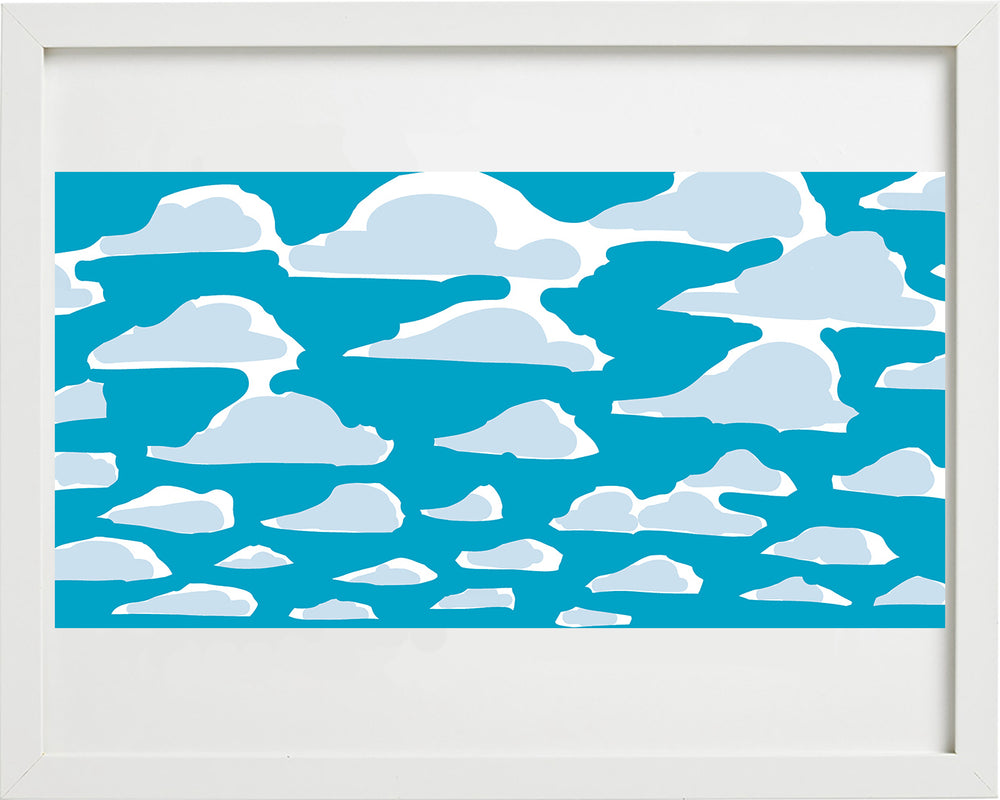

Cumulus Humilis | November 2020
Rob Moss Wilson is an artist based in Martinez, California. His work captures the simplest things that make you feel the best: lying on your back and finding creatures in the clouds, doing cartwheels on grass, swimming in the buff under the warm sun.

"I want people to feel good about being alive"
-Rob Moss Wilson in It's Nice That



Q & A WITH ROB MOSS WILSON

When you’re making paintings do you think about the people who are going to see them?
I think I started out just making work that I would want in my house. And I think that's still happening. Even though when you fill your house with your own paintings it’s usually kinda cheesy and you have to edit sometimes... You can’t really do that.
But when your work is good and you're enjoying what you’re doing, why not live with it?
Totally. Yeah. If you’re making work that you enjoy that’s for yourself and you enjoy doing it, it’s like you’re kind of locked in. That’s actually what you want. And I think I didn’t want to broadcast any big ideas, which I think can exhaust a piece or make it tiring. I didn’t want to leave people empty; I wanted to leave people full.
Are you making art full time now?
Yeah. I mean, I’m not doing anything else so I guess that’s the answer. But I don’t spend all my time doing it.
When people ask you what you do, what do you tell them?
I say I make paintings. And then I say that I make illustration work too, just so that they can get a more rounded picture, I think. If you just tell people you make paintings they go, “What?? How do you do that?” or, “I don’t believe you”, or whatever. So if you add something else on top of it— which is true, I do fill in the gaps with illustration, like for businesses and stuff like this... It’s so passive. I don’t have a portfolio online for people to see or anything. It’s just the instagram.
What else takes up your time? Do you ever swim in the bay nearby? Can you?
I do, but nobody else does. I have some spots... between here and Port Costa there’s some spots with little access points to the water and I’ll go there are dink around a little bit and I think it’s fine. There’s also a pool downtown and I’ll do laps....

Listen to Rob's Playlist on the Plunge Spotify Page ~
Find more of Rob's work:
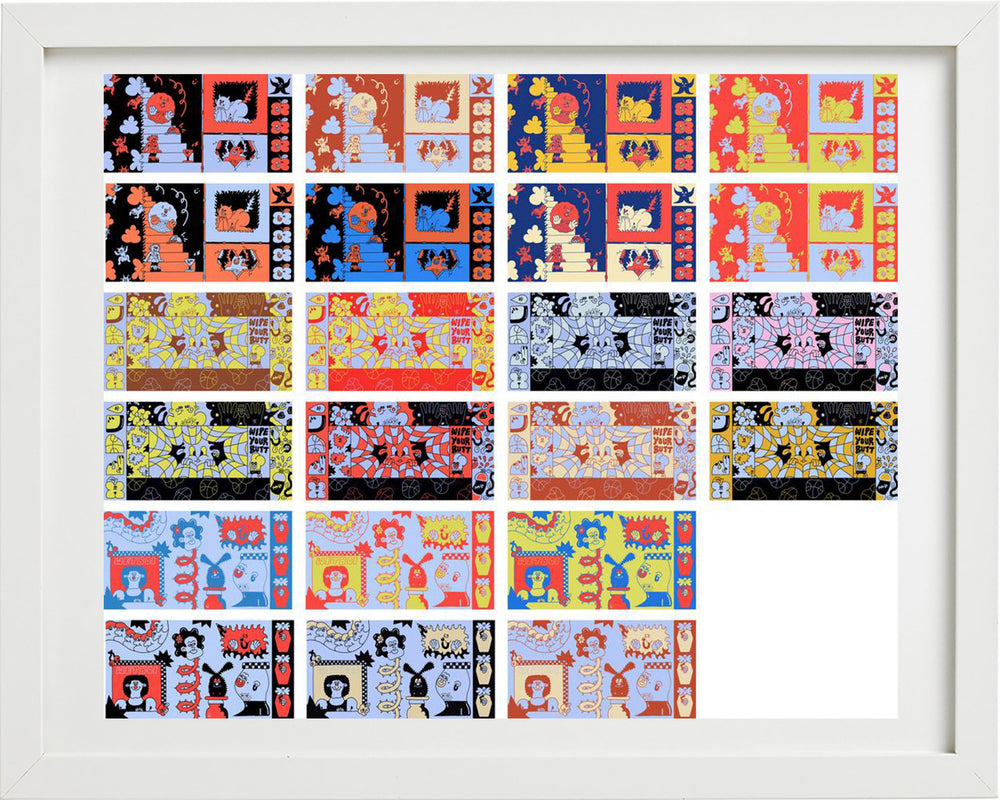

To All The Boys I've Loved Before... | December 2022
Christopher Gale, also known as Kidtofer, is an artist and illustrator based in Oakland, California and originally from Bangkok, Thailand. His work in ceramic, paint, and illustration unabashedly celebrates sexuality, color, and pop culture.



Left and Right photographs by Macayli Hausmann
An interview with Kidtofer from Plunge Rag Vol. 2:
WE MET HIM DURING SEPTEMBER OF 2021 IN HIS WORKSPACE AT CAMPBELL STREET STUDIOS, A SHARED CERAMICS STUDIO TUCKED INSIDE A BEAUTIFUL BRICK BUILDING IN WEST OAKLAND WHICH HE AND FELLOW ARTIST, NATALIE CASSIDY, OPENED AND CO-OPERATE. IT HAS A BIG ROLL UP DOOR, BRIGHT NATURAL LIGHT, AND IS NOW HOME TO SEVERAL CERAMICISTS. WE FOUND KIDTOFER SURROUNDED BY NEATLY ORGANIZED RACKS OF PAINTED BISQUE-WARE OBJECTS, LISTENING TO ALEX G, WEARING A CUTE OUTFIT WITH GREEN PANTS MATCHING HIS NAILS AND SINGLE EARRING.
PLUNGE: I am curious about how the pandemic has changed the way you work because you mentioned you left your day job.
KIDTOFER: I quit during the pandemic just because the amount of work at the time was really taking a toll on me mentally. I decided that in order for me to take care of my mental health (due to everything that was going on at the time) I would need to just take a little break from my job. I was hoping to take a few months off from work since I knew that money would be really tight without a salary job. However, once I started getting unemployment, it actually provided me more than enough to be able to supply myself for rent, food, etc. Instead of taking a full break I ended up just heavily working on my art during that period of time and eventually started a ceramic studio with my business partner, Natalie. Because of that, I was able to just not have any other distractions and just put all my effort into my art fully for a year.
Is it the first time you’ve ever done art full time?
Not really. I started doing illustrations freelance back in 2012. I went to school for communication arts, for broadcasting, at Bangkok University, and during our last year we had to do internships. Basically you have to do three months at any company that’s related to what you do and I was at Channel V which is the MTV of Asia. I was writing scripts about music broadcasting and I was responsible for the western music channel.
That sounds fun.
It was fun, actually. And I was like, I can do this, the pay is shit, but this is the only thing I know how to do. And then during that time I was doing drawings -- I’d been doodling my whole life -- and my colleagues would commission me. After I graduated I did that for about six months. I got a lot of money… well a lot of money for Thailand. My sister then encouraged me to move to the states just because the art scene here is way more diverse and there are just many more opportunities here for art and design jobs in general. So I moved and I had four thousand dollars and I thought that would last me at least a year.
And then you got to the Bay Area...
I was naive at the time (probably still am). I was only 22 when I first moved here. I was a couch boy for like a year. I didn’t pay rent, I was broke, broke, broke and I was like, I’m going to become an artist! And then I realized everybody else is an artist. I just didn’t have any clear goals or directions on what I wanted to do besides doing illustrations. I started applying for jobs. I applied at multiple Bluebottles, didn’t even get an interview. I applied at Whole Foods for, you know, sign art. And I was like, oh, that’s perfect, I can do some drawing. Did not get that job. And then eventually, my last resort was Thai restaurants. I was still doing some illustration work back in Thailand, some freelance stuff. Then I joined a game company and did customer support work and that’s pretty much how I started my design career. They saw that I could do art and were like, Do you want to try doing some UI/UX? And then it just moved from that.
It seems like Instagram has been helpful with getting your artwork out there. How do you feel about social media as a tool to promote yourself?
I think there’s definitely lots of pros and cons about social media. I think what’s great about it is that people get more exposure and are able to have a platform to showcase their work outside of the physical world — like galleries and art shows. however, one of the cons is that your [number] of followers suddenly became this social measurement/quality on how “amazing” this art is and we kinda use the followers and likes to validate what is good art and what is not so good. This is what really bums me out because there is so much good shit out there that deserves so much more love from people. That pretty much sums up about how I feel on a daily basis about Instagram. However, I can’t lie and say I don’t benefit from it because a lot of times I get commissioned or invited to participate in art shows through social media. I didn’t really know a lot of people when I moved here so social media was a big help leading me into the community.
You’ve been producing a lot of work since you’ve opened this new studio, as far as I can tell. Are you enjoying having and running this space?
I do enjoy running the studio with Natalie and having a community here, especially when it’s ceramics. It’s nice to be surrounded by people that have similar interests as you, but also all of us at the studio have totally different styles. It’s great to get inspired from people around you. However, running the space sometimes can be a bit stressful when it comes to managing because I don’t operate well in that type of way. I tend to work better when I’m alone in my own element doing my own thing, I guess.
Bossing your friends around is not fun.
And potentially you could destroy friendships too, if things go sideways. So when I first started Campbell Street Studios with Natalie, I was a little bit nervous about that because we have a good relationship and I didn’t wanna do anything that would jeopardize it. I wouldn’t do this if it wasn’t with Natalie, honestly. She’s probably the best person in the world, She’s a very smart, kind and such a giving person. If it wasn’t her, I’d be nervous. Also I’ve had weird dynamics with people at a community studio in the past so that part was a bit spooky. However, everybody’s been great here -- that aspect hasn’t been an issue. But sometimes I feel like I’m just here working on my stuff and then I realize later like, oh wait, rent’s due… But that’s a minor part I don’t like.
It’s so great that you’ve created a community here. Your open studio events are so fun too.
Yeah, I think it’s a good way to have social events to bring people together. In West Oakland we have so many art studios around and so many creative people, but we also have to understand where we are representing, and that this is basically gentrification in a way. So with that, what can we do with this space beyond just having the space to create? Maybe we’ll have a day where people in the neighborhood can come in and the kids could do some hand-building workshops. We also are aware that ceramics is not the most accessible art practice so it would be great to just utilize the space to introduce people in the area to this. We’re still aiming to do that at some point, but because of the safety issues with our current pandemic situation it’s just been tough to arrange things.
How did you make the jump from illustration and digital art to ceramics?
I’ve always been obsessed with claymation, like Celebrity Death Match and Gumby and all that, so as a kid I wanted to make toys. I’m always fascinated by the people who can turn objects into movement. Illustration is great and fun and obviously that’s where I started so I love that, I try adding some shading, adding little highlights here and there, but at the end of the day it’s still on a flat surface. And I think ceramics was that gateway into [not spending] a lot of time on a computer. Yes, I draw everything by hand but I color in Photoshop because it’s the fastest way I can produce work. I have a day job and I don’t have time to paint. I also feel like my painting is not as strong as my drawing line work. This is my way of creating work but I was like, how can I make that into a more 3-D form without doing 3-D animation, without using a computer, spending more time on digital screens? Especially when my day job was doing that for eight hours straight. I started taking classes at Clay by the Bay and then the transition was easy because I already have my style.
You make a lot of functional ceramic pieces like mugs, vases, and candleholders. Do you find that these sell more easily than sculpture?
For sure. This is probably a very techie answer but I do UI/UX and I like problem solving. And I think for my art, yes it’s sculpture, but I want it to be useful. I don’t want it to just be another piece of art. Does the world really need more shit, you know? But if it’s functional, maybe that justifies it a little bit. It’s kind of like light sculpture that is functional. Most people don’t use my mugs because they’re scared… I think people are afraid because it’s “fragile”, but it actually works, ya’ll. Just give it a chance.
How much time you spend on your artwork now?
If I have an order or if a show is coming up or something like that, then I spend eight to ten hours, sometimes twelve a day. Especially with painting ceramics. It takes three coats on each section to make sure that it’s opaque so it’s very time consuming. And depending on the detail… With ceramics, you make it, you let it dry, then you paint it, then you fire it and then come back and then you glaze it. It’s just a whole thing, but that’s why when I make this stuff I make a lot. So when I come to the studio I try to spend at least three to four hours making stuff so that I can feel like when I’m here I’m just constantly producing. And it’s therapeutic. It doesn’t feel like work. Sometimes it does, but most of the time it’s time for me to go inside my head and decide what’s wrong with you, why are you the way you are, and how do we make things better? Let’s sort this out. [Laughs] Like, let’s have a private meeting while being useful, basically.
Are you disciplined about coming to the studio?
Oh, yeah. This is where I have my own space. Even though I’m sharing with other people it never feels crowded because everybody’s so focused. I try to spend a lot of time here because I know I’m being useful, I like making stuff, and I can avoid socializing a little bit and just be with myself. Back when I used to have a job I spent the same amount of time. I would go to work at 8am or whatever, leave at 4pm, I would get to the clay studio at like 5ish, and then I would stay there until 11 or midnight. That is a little bit more fun for me because I know I’m creating stuff purely for passion and not just trying to sell stuff because I had the security of having a day job, whereas now it’s a little bit different.
How do you think your practice will change when you go back to a day job?
I’ll probably be here a little bit less or not as long. But also, I don’t know what it’s going to be like because we’re working from home now. I might not be able to produce as much.
You have so much great work here right now!
It looks like I have a lot but I don’t really sell my stuff that often. I literally just started selling. If I’m not doing craft fairs you’re not going to be able to buy my stuff because… I don’t know why I don’t do that. Maybe it’s just a fear of not being able to sell them. Or sometimes I don’t want to let them go. And I always promise myself to document every piece. But I never do that, it’s sad...
What part of your process makes you the happiest?
The building part is always the most fun for me because you get to form the shape. I like seeing the skeleton of how it’s going to look. I sketch my stuff with pencils, but I don’t color them, I just sketch some form of shape, some form of pattern that I think would work for each piece but they never really look like my sketches. Sometimes while I’m making stuff I’m like, oh maybe I’ll add this, maybe I’ll do that. So that’s also the fun part. There’s some sort of plan and things to do, but it never looks the way that it was supposed to look.
It sounds like there are a lot of surprises that can happen along the way.
Yeah! And so if that’s my favorite process, my least favorite process is actually painting. I hate color choices. But I feel like it’s justified once everything gets fired and it looks alive. That’s when I’m like, oh okay, this actually is fun. And then you go through the same torturous pattern.
How does art make you feel?
Purposeful. It makes me feel like I have a purpose because this is what I know I can do and what I am confident in and what I can do best. This is what I know that I’m supposed to be doing. It’s not for everybody, obviously. And I don’t know if it’s a common theme for gay people, but I struggle with my identity a lot. For me, it’s just accepting myself. I think my ceramics doesn’t really showcase that, but my illustration gets a little bit gayer. It makes me feel like I have a voice and a purpose. It’s also nice to see when people relate to my stuff or understand what I’m trying to do, or if it makes people laugh, or it might not be their thing but if they can kind of respect or appreciate certain things it’s a little validation. It makes me feel like I’m showing my self and people get to see that.
That’s great. Do you ever find yourself in a creative funk?
With illustration, yes. Not with ceramics. I feel like if I’m stuck, I can still come in and make mugs. I don’t know what they’re going to look like or what the faces are going to look like, but I have my simple shapes that I do all the time so I feel like I never feel stuck with that. But with illustration sometimes I don’t know what to draw and I don’t even know how I get out of it. I think pressure always helps.
Pressure that you put on yourself?
More like time. I don’t do drawings in my house at all whatsoever, I only do them at coffee shops because the idea that I’m using space that someone else needs to use stresses me out. If I work at a cafe or at another office or whatever, it’s like you feel the pressure that something needs to happen within the time that you are given. And especially with commission work, it’s always sort of like... oh fuck this is due tomorrow, I just start figuring out layouts and it just works.
You were in a few gallery shows this year -- is that something you want to do more of?
Yeah. Gallery work has always been a dream for me. I got the opportunity to do Hashimoto, which is kind of funny because it was one of the first galleries that I visited when I moved here. There’s so many cool galleries that are amazing and that I love, but for some reason Hashimoto always stood out to me because the artists they carry in that space have always been kind of similar to me so it had always been a goal. And the other one was Big Gay Art Show, which I worked on with Gem Studio in West Oakland. It was just me being able to do a gay show… it was an excuse to have fun, do shit, and bring in my friends. The content [was] all about how we express our identity. For now my main focus is to push ceramics as my gallery work.
Do you have anything coming up?
My goal is to get my website ready and finally launch it and sell my shit. From there I would like to figure out what my next step is because once I have goals, I feel the high and I keep myself busy, then the moment when I’m actually not doing anything I get kind of depressed. But I somehow manage to find things if they’re not created for me. For example, like with Big Gay Art Show, if people don’t want to put my shit in a gallery, why don’t I just make it on my own and talk to people that have space, you know? We’re planning on doing Big Gay Art Show round two... I definitely want to bring in more artists and I want to take submissions. That’s one thing that’s happening!
KIDTOFER HAS SINCE SHOWN HIS WORK AT SOFT TIMES GALLERY AND WAS IN ANOTHER SHOW AT HASHIMOTO CONTEMPORARY IN SAN FRANCISCO. HE HAS A NEW FULL-TIME JOB BUT IS STILL BUSY MAKING HIS ARTWORK AND IS THRIVING UNDER THE PRESSURE OF MORE TIME CONSTRAINTS. HE’S THINKING ABOUT MOVING TO NEW YORK SOON AND IS EXCITED TO SEE WHAT THE FUTURE HOLDS FOR CAMPBELL STREET STUDIOS. ☺
Find more of Kidtofer's work:
Wetboi | December 2020Kidtofer's Instagram
Kidtofer in Wired
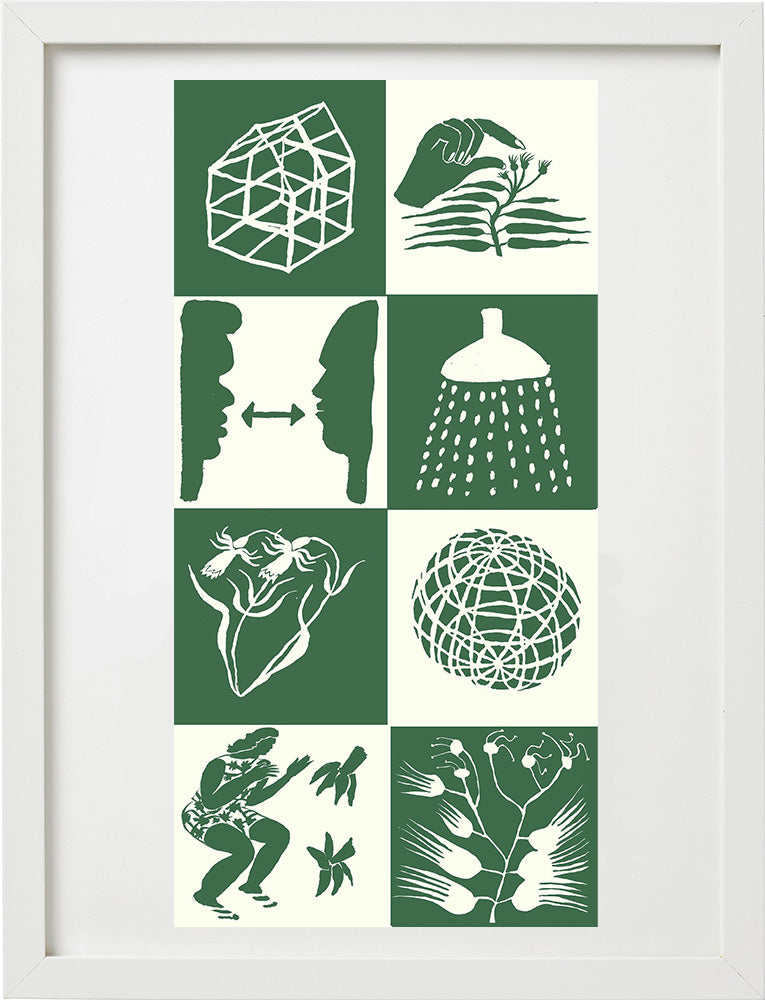

Open Water | February 2021
Lena Gustafson is an artist from San Francisco, California, who’s living and working in the East Bay. Between her multidisciplinary art practice and Night Diver, the collabo- rative press she runs with her partner, Peter Calderwood, Lena keeps pump- ing out incredible work that touches upon transformation, the body, the environment, and connects herself to her community.

She has also been producing a series of artist interviews in a volume of books called Practice that she publishes under Night Diver; Lena photographs artists in the Bay Area and they answer questions about what it’s like to pursue a creative path here. The series was one of the biggest inspirations for bringing Plunge to life – it so simply and beautifully elevates the work and voices of emerging artists.
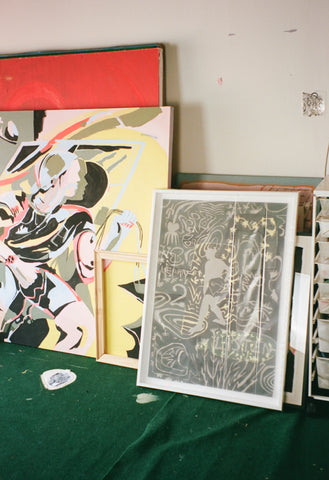


Q & A With Lena Gustafson
PLUNGE: Did you go to art school?
LENA: Yes, I went to the Art Institute of Boston, which is part of Lesley University; it’s really small. Most of my friends were at Mass Art and the Museum School at the time. I lived in Cambridge for four years and then worked seasonally on Martha’s Vineyard for a few years after graduating.
What did you study?
I went for Art Therapy and Illustration. I had a teacher recommend printmaking and became really interested in intaglio and relief printing. During my third year of school I met my partner Pete through some mutual friends and we started collaborating on a lot of screenprinting projects together.
That’s obviously carried through to your practice now.
Totally. That’s how I learned how to paint - by creating images for screenprint. It takes me a long time to feel like I totally understand new techniques in image making. So about four years into screenprinting artwork regularly I was like, “ohh, I think I finally get this” and now it informs the way I approach painting.
Something that I’m really interested in is how to be an artist out in the world and I’m interested in how you got to the stage where you are now. Did you get what you wanted out of art school? Did you create your own path that to followed?
I was pretty deflated about continuing to pursue art in any real way about 5 years ago. I feel like I wasn’t getting something that other people were getting. I didn’t understand how people got shows or were able to afford studio space on top of rent. Around that same time I started the first issue of Practice magazine. I started by reaching out to artist friends or people who I admired online and asked if I could photograph them in their studios and have a mini interview. I think subconsciously the project came from wanting to show other people that I’m excited and inspired by what they’re doing and in the process it became encouraging to myself to continue pursuing painting. Relationships with people and building community has been the most important thing.
What about art and making and your process makes you feel good?
I get most excited by what happens when I let drawing lead mento new directions or concepts. I try to now get too fixated on one style or way of making -I get excited by the act of drawing and how it can lead to new ways of thinking. I feel like it mirrors my personal life and how I am develop ing as a person in the world. Drawing and experiencing life are kind of like two parallel tracks that are influenced by each other, and that’s what I get most excited about, the evolution of those two things feels like a lifelong endeavor. Sometimes it doesn’t make any sense to me why I still want to make images, but I think of it as mirroring inner and personal worlds.

Listen to Lena's Playlist on the Plunge Spotify Page ~
Find more of Lena's work:
Lena's InstagramLena's Website
Night Diver Press
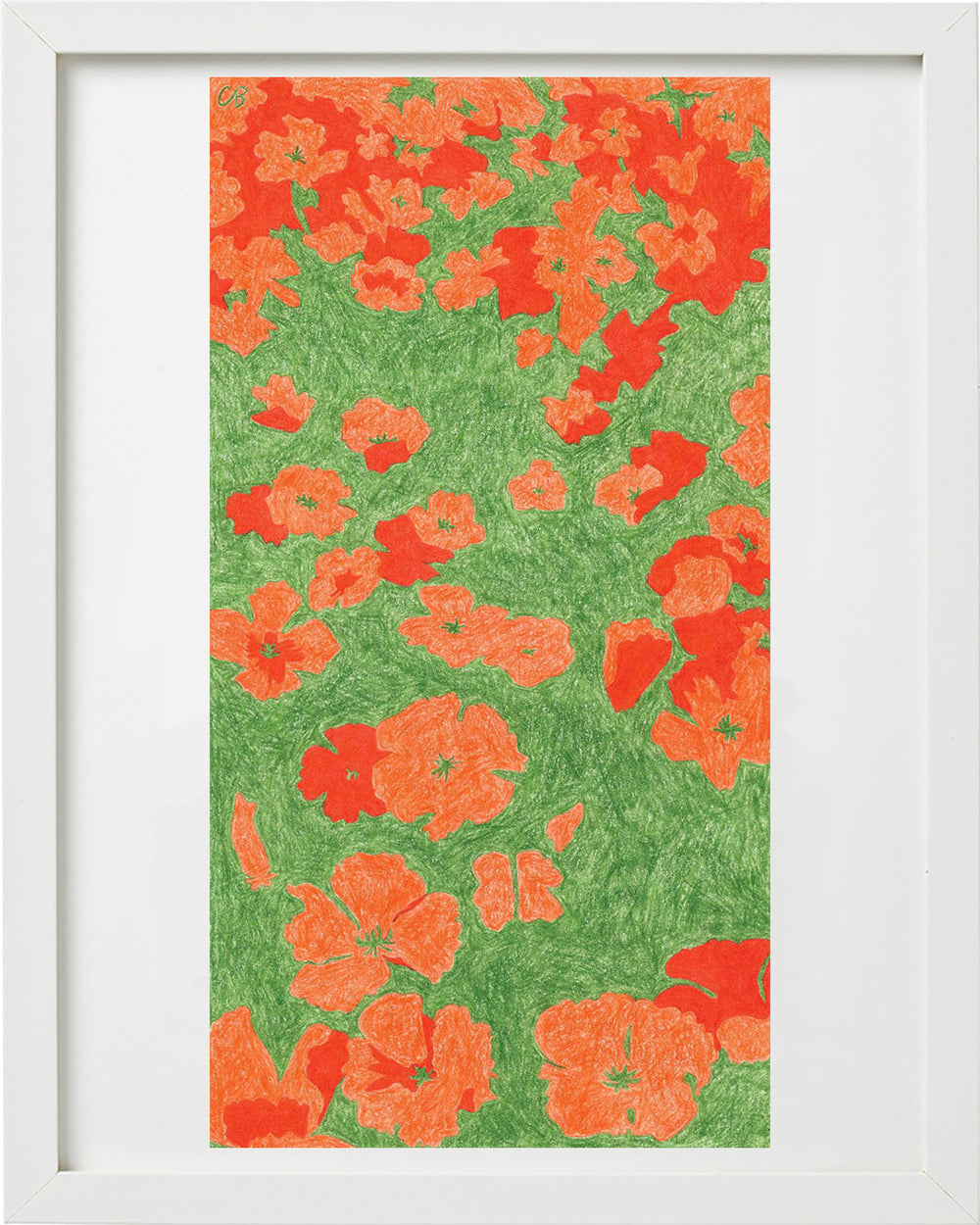

Poppies | March 2021 & Poppies 2 | August 2022
Charlotte Beavers is a California artist currently based on a sailboat floating along the central coast. Her delicate and delightful watercolor paintings celebrate the magical landscapes found all across her home state.
Find more of Charlotte's work:
Charlotte's instagramCharlotte's website
Charlotte on If You Were Here Now
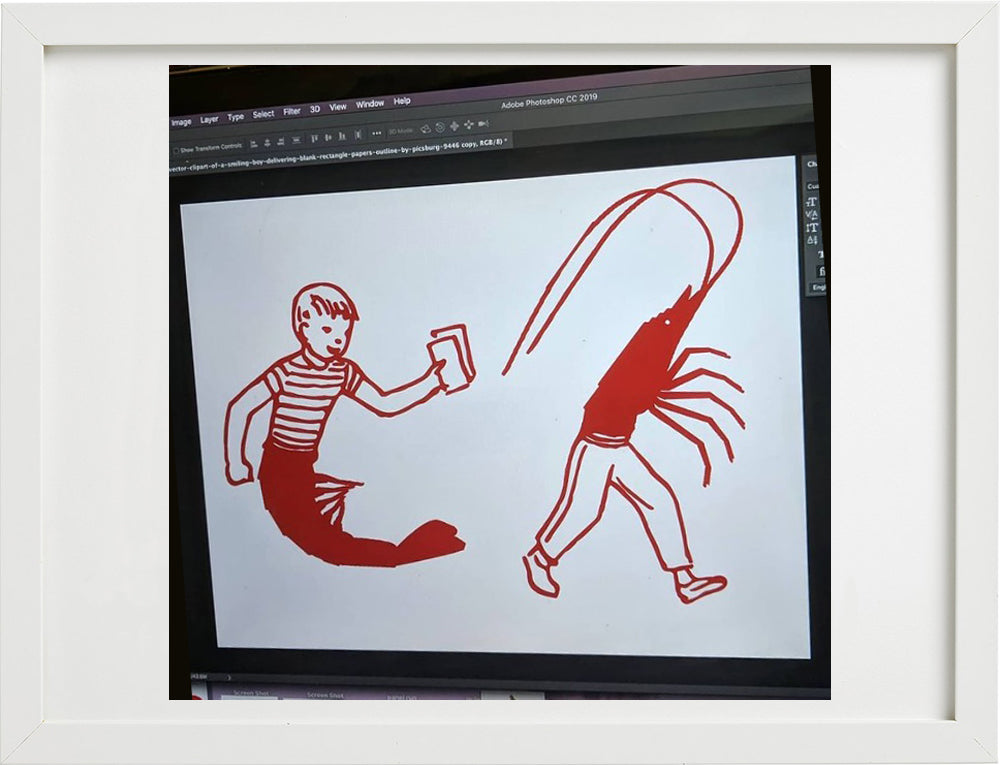

Shrimp Boy | April 2021
Oliver Hawk Holden grew up in a small coastal town in Maine before moving to San Francisco and giving it a go in the arts. He makes humorous, often kinetic sculpture, sculptural paintings, and runs a small art handling company called Expert Art Service.



Q & A with Oliver Hawk

PLUNGE: What are you making?
Oliver: I’m doing more sculptural installation... I have a bunch of mechanized bike pieces where I built foam figures that are pedaling. I have two of those that I’m working on and right now I’m kind of experimenting with if I can make components out of ceramic or if it’s too heavy for a moving sculpture.
A little fragile?
Yeah, if I have to glue a 7 pound ceramic head to a body that’s made out of foam and plywood it’s some risky business... but it’s coming along. And then I’ve been making some more flat works... Still kind of in the portraiture area but I’m trying to go a little bit less figurative with some of that stuff. But it’s usually just people or dogs.
Your flat work feels very sculptural because you do a lot of carving into your panels.
It’s all basically sculpture. I figured out that I could carve reliefs and kinda have that same feel as doing sculpture, cause that’s what I went to school for and am trained in. But I present it like painting... it kinda works for me because I can’t be lugging around 70 pound dog head sculptures. The works are pretty heavy still but it works out better and it’s a little bit more commercial because people don’t really buy sculpture.
Do you find that you sell more paintings than sculptures?
I end up giving away a lot of my sculptures and then I sell my paintings. It’s tough with sculpture because you have to hold onto these things. I built all these sculptures and I was occupying a lot of space in this common area in a shared studio setting. It’s like, cool, so alright I’m gonna put this in a storage unit for six months and then I’m gonna shift it over here, and I’m gonna put it in a friends garage, okay, so I have to tie the boat to the ceiling in the warehouse cause it’s taking up all the space... it’s really ridiculous. They’re bazaar problems to have but recently getting that second space, it’s like okay, I’m gonna pay like 200 bucks more than what I’d be paying for a storage unit to have all this stuff in.
Do you feel like art school helped to get you where you are now?
Yes 100%, it helped me really think about how to think about art. I believe it truly shaped my path and outlook being around other students and the mentors I had at SFAI. A lot of the time teachers were like, “take it or leave it” with the technical stuff, but at the same time I got to be taught by somebody who knows how to paint super well. I went to art school when I was 18, of course I just wanted to make weird characters and stuff... I wish I had a better head on my shoulders back then to be able to focus and learn more from the professors who were really skilled. Now I can set up a whole exhibition myself and if I know what I want to do I can execute it all myself. I feel like art school didn’t really help in that regard. It helped with connections that have led to more things, like a network. Learning how to paint and sculpt and having the space and time to do that was really amazing, but practical fabrication skills I’ve all learned after school. I learned how to weld in school but not structurally. I learned how to work with wood but I was pinning stuff together with little nails. Building a crate is a whole different thing, and making stuff for other people’s shows... you don’t learn that at school.
How do you work through stuck moments and what keeps you going?
I sit and think about it for a bit... get kinda stressed... then I’ll call another artist on the phone and talk about it. That usually works but if not I will try to put a few hours in the studio a couple days a week and work through it. If that doesn’t [either] I put it on pause and start something new.
What part of your art practice or process excites you the most?
I really love being able to come up with an idea and see it come into existence. I usually only do a super rough line drawing and some of the sculptures are pretty technical. I have a fun time making the work itself and solving the puzzle I set forth.
If you had it your way would you be making art full-time?
Yes! I would love to. But it would be hard to do again. I am thinking of applying to Stanford for grad school.... Uh oh... Really trying to make work and think about work that I can make for the application.
What is the path to get there? Any tips/ advice for young artists?
1- You have to put in the time.
2- Try to believe what you’re doing is important work, if you don’t believe it no one else will.
2.5- You are your biggest critic. Most of the time you have the magnifying glass over your issues with your work and nobody else
sees it. So just try not to be too self critical or defensive when talking about your work. Believe in your self have that dumb blind confidence the world has prescribed to the artist character. You don’t have to show that trait off publicly but when you’re making you just have to tap in to that belief that what you’re doing is important enough to be brought into existence.
3- Keep your momentum up, play each success into the next.

Check out Oliver's Playlist on the Plunge Spotify Page
Find more of Oliver's work:
Oliver's WebsiteOliver's Instagram
Expert Art Workers
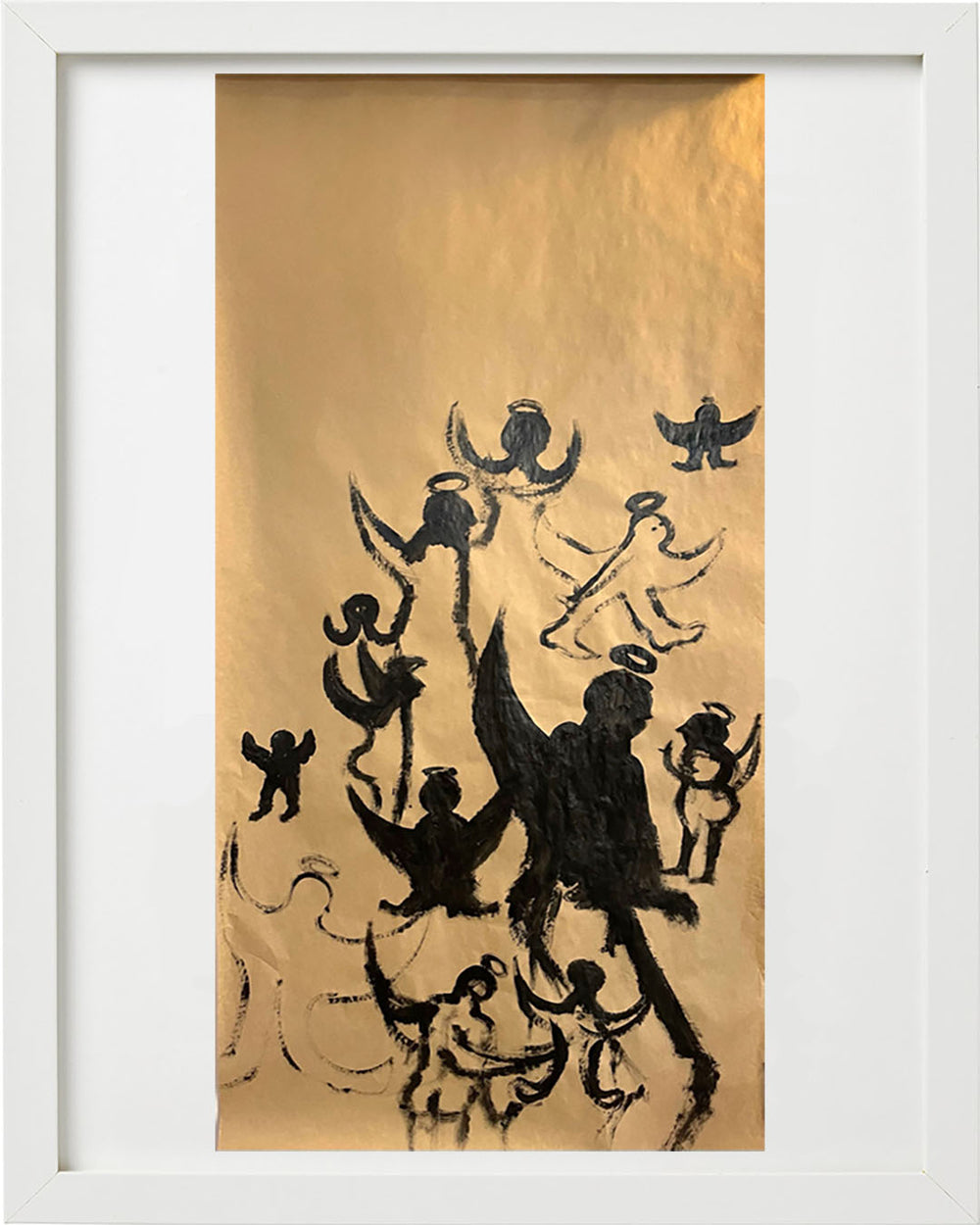

My Angels Are All Of You | May 2021
Paz, born in Quilpue, Chile, is a self-taught sculptor based in Oakland, California.

They paint gripping visions of their past on large ceramic vessels, using bright colors to tell intricate stories of their history, ancestry, and identity.



Q & A with Maria Paz
You are from Chile, right?
I am. I was born in Quilpue and we migrated here when I was 9 months old. We left due to the Pinochet dictatorship. I grew up in Palm Springs.
What brought you here to the Bay Area?
So many reasons, but mainly that it’s a sanctuary city. It felt like a safe place for me to land. And I of course wanted to be where all the artists and queers were. It’s been such a journey, but this place really is a queer haven. I love it. But I am considering moving to New York.
Your work feels like it’s a lot about community. Do you feel like maybe in the Bay you’ve exhausted that in terms of your inspiration?
I feel like there’s so much nectar still to be had here so I don’t feel that way. I think I need to be a little more stimulated by my surroundings. I really love going to shows, and I have so many friends here that are really special people, but I just feel like I’m looking for something that I maybe can’t find here. I think it’s newness! I want to feel like a small fish.
Did you start this kind of work when you studied ceramics at City College of San Francisco?
I didn’t study there, I worked there as a lab tech. I took one class and then I met the head of the ceramics department for City College at Fort Mason. I was making these nose bowls, like cups with noses on them, it was kind of cute but it was bullshit, and he could tell that I was just really excited and inspired. There’s this long waitlist to become a lab technician because you get access the studio and you work six hours a week, but he’ll choose people who he thinks would thrive in the environment. He’s Venezuelan and I think we just really hit it off — he’s now my mentor. Then I didn’t have to take classes anymore and I just learned so much about ceramics, making glazes, recycling clay, general cleanup of spaces, understanding how not to have a ceramic space that is toxic because it so easily can be. I did that for seven years. I learned everything I know from him! Olí Quezada.
When did you decide you wanted to be an artist?
I decided I didn’t want to go to art school and that was a big move for me. Funny enough, I took a bunch of interesting prerequisite classes to prep me, but I knew I would have to wait years to go because I was undocumented and to be able to get funding or a scholarship as an undocumented person is very difficult. I think once I decided that I didn’t want to go to school, that I didn’t want structure in that way, that I didn’t want to be influenced by what my cohort was doing, I was like, alright, let’s fucking do this solo. I’m going to have to go much harder, but what’s the end result after school? What would I want? I want to show in museums, I want to travel with my practice and for my practice, and eventually, my biggest goal is to open an art center for different minorities, for kids specifically. I want it to be a very well-curated, intentional center that works specifically with kids one-onone. Because I never knew — I was gay and undocumented, and I didn’t know that I could make art and that people were going to be interested in what I was saying, or that my vision could become its own thing.
Now with your practice, how do you structure your time? Is it difficult in a live/work environment?
It’s a blessing and a curse. I wake up and make some coffee and then write in my journal for 5 hours. It’s hard when it’s your home, but it is starting to get easier. I notice one of the things I have to do to really get work done is to leave in the morning, even if I go and buy a cup of coffee or go for a run, or something. If I do that, then I can have a super solid day. I’m still figuring it out.
LISTEN TO PAZ's PLAYLIST ON THE PLUNGE SPOTIFY PAGE ~
Find more of Maria's work:
Maria's websiteMaria's Instagram
Maria's interview with YBCA
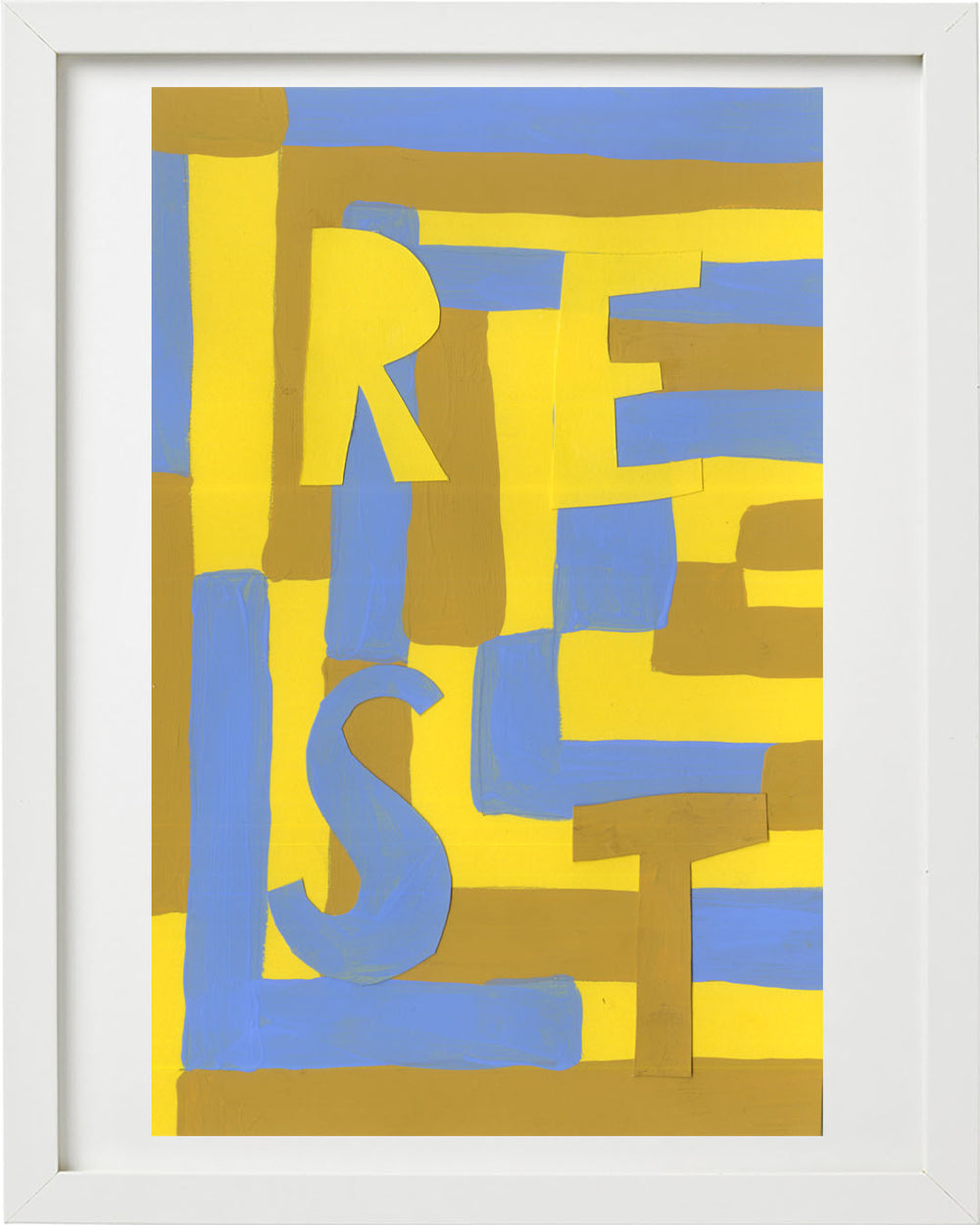

Center Black Rest | June 2021
In support of Headlands Center for the Arts
Lukaza Branfman-Verissimo is an artist, activist, educator, storyteller & curator who lives and works between Ohlone Land [Oakland, CA] and Powhatan Land [Richmond,VA]. Lukaza creates lyrical mixed-media artworks that weave craft, text, and bright color to speak about identity, activism, and community. Their diligent, immersive work is a call to action, reminding us all that positive change and a brighter future is possible through ongoing mutual support and organization.
Find more of Lukaza's work:
Lukaza's websiteLukaza's Instagram
Lukaza's interview on Variable West
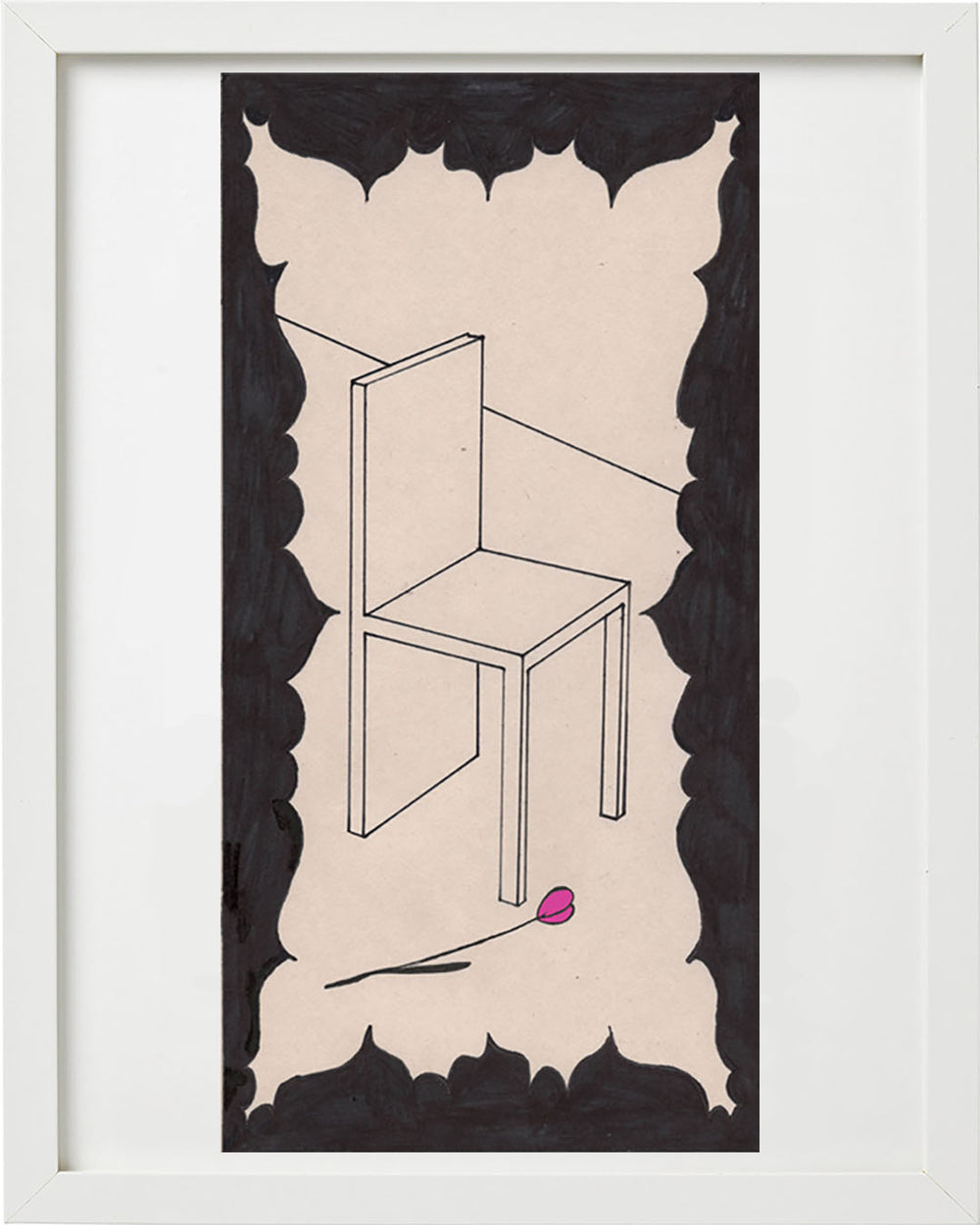

Chair Towel | June 2021
Momo Gordon is a self-taught artist born in Hessen, Germany and now based in Portland, Oregon, USA. Momo is focused on the emotional landscape; Working with graphite and handmade paper, their work explores sentient spaces, hostile architecture, and anthropized objects. In sequential works or standalone pieces, characters often have four walls.
Find more of Momo's work:
Momo's Instagram
Momo's website
Momo's interview with Post-Comics
Momo in So Young Magazine
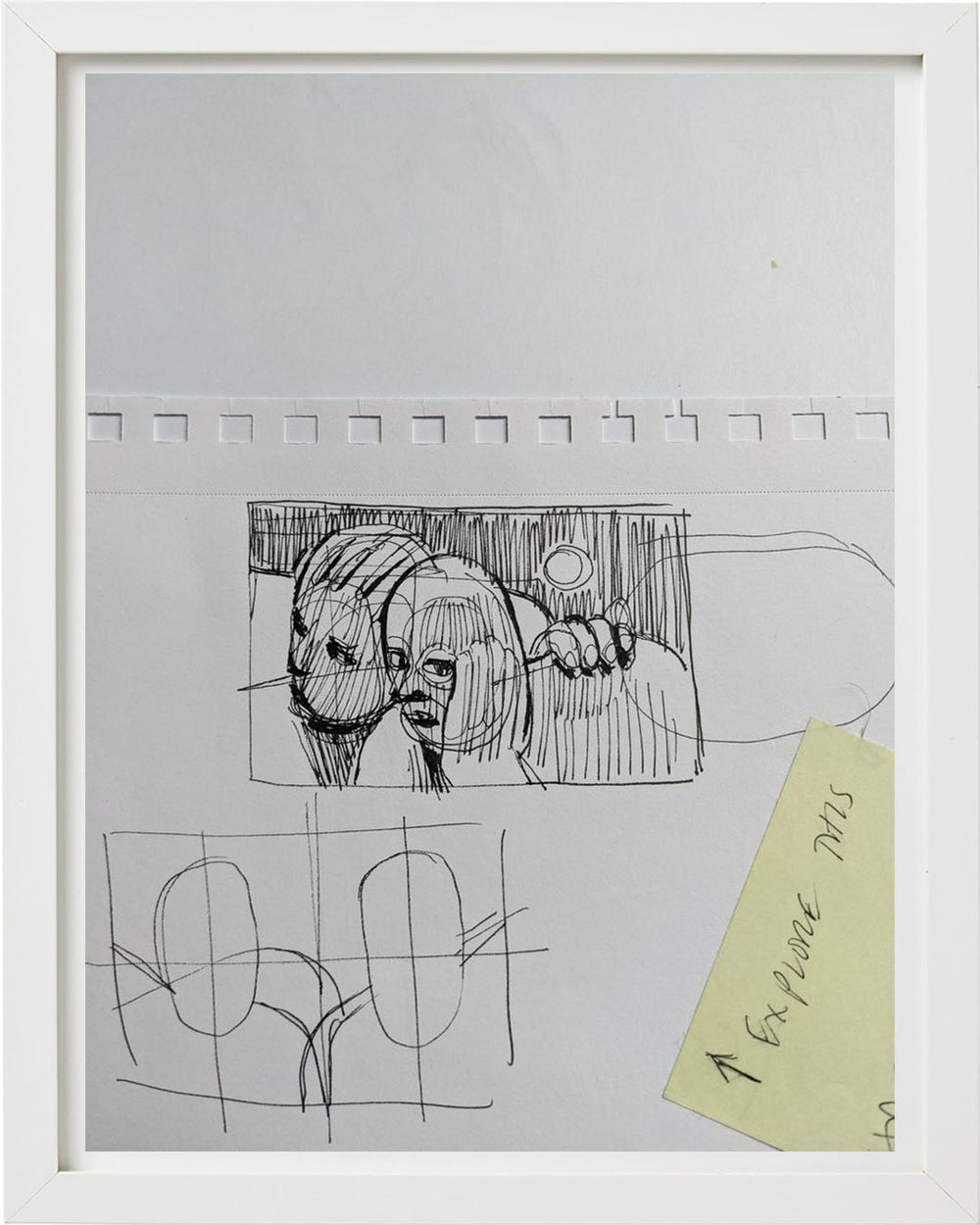

Moon Stories | August 2021
Wardell McNeal is a painter from San Diego who is currently making work in Oakland, California. His background in industrial design informs an introspective exploration of the emotional landscape in sensual color and wandering depths.



Q & A with Wardell McNeal
Plunge: What is the name of your show?
Wardell: Dreaming with Eyes Wide Open, for obvious reasons. It’s just something that I’ve been doing recently. I want to say it’s been present in my work a lot but I think it must be due to me working so much. Sometimes, I’ll even find myself drawing someone sleeping instead of sleeping because I just-
You don’t have time for that.
[laughs] I just dream about sleeping.
Where’d you go to school?
San Francisco State. That’s why a lot of like 3D elements, I do a lot of like solid works.
Yes, your work is very structural, and I can see the design background in it pretty clearly, so knowing that makes a lot of sense. Then it’s interesting that-- not to be so obvious- but your colors are so electric.
Yes. Sometimes I shock myself. It’s like how vibrant things can be or how much stuff influences.
I feel like it is just bound to happen when your life and art is so intertwined. How do you find balance with that?
If I’m balanced definitely just the making and the process of creating, and just sitting with some of these things. There’s a little bit of peacefulness to it because I’m trying to find that piece. Sometimes that piece has a lot going on. It seems a bit chaotic, but I’ll really reduce it down to certain elements that I really honed in on with, but the act of mark-making is therapeutic.
How do you know when a drawing’s going to become a painting? Do you plan?
I draw all the time. Essentially, if you see all these little pages and eventually, I’ll go through and start snipping and cutting and choosing, which I hadn’t done for the shows. It was probably the most work I did for the show was drawing in preparation. Just being mindful of time. I didn’t really have all that. I knew I wasn’t going to have enough time, but if I was prepared enough, and I have done a lot of practice.
I noticed you have a lot of books about color theory laying around, so it’s obvious that you spent a lot of time practicing that. I think I remember from school-- correct me if I’m wrong- but I feel like Josef Albers is somebody who never used black and felt very strongly about never using it and relying on it because it’s a bit of a crutch.
Oh yes. Painting professor when I was really young, probably 20, 21, which is like 20 years ago now. He told us not to use black. Even like here is wet, still makes it feel like it’s popping it. Tooney does the same thing.
It’s also interesting that you can use black in the drawings as well, but then when it’s translated to the painting, you don’t need it.
Yes. The drawing’s really informing how I’m using line weight. It’s probably with a product design background, so I’m using line weight to attract by, to make emphasis, in the color, too so if I want you to look deep into the corner of that person’s shirt, right? Just as deep as to the eye right there, then I’m just going to add a little bit of light across there so that your eye leads from one side to another because I’m leading you around this painting.
Yes. It’s so specific and there’s so much going into it, but when I’m looking at it, it feels effortless.
Like the first time, and there’s a lot of black in there. This is the first time where I start to do it. I started to say, “Hey, you know what? What’s a figure? What’s light? What’s shadow and how far can I take this?” Then from that one and there on, I started to just do. I started to just go, “Okay, I really like what happened here, and I like certain elements. I’m going to keep borrowing from that and then frame my personal relationship with work,” but I definitely use a lot of design techniques.
It seems like you’ve gotten a lot out of your education that’s obviously carried through to your art practice. You did something so different, so that’s always fun for me to see. At what point did you start painting?
Probably soon after I got out of college. I was like, “I don’t really care much about product design, product development anymore.” Just the amount of waste that happened and all that stuff. I was really conflicted when I graduated. I wanted to work somewhere I was really meaningful in terms of my impact of what I was doing versus the impact on society. I feel like art has definitely been something where the connection to the society is a lot closer. Connection to the human experience is a lot closer. It’s like, “Yes, I can make a phone that’s elegant, but who really is married to them? It’s not an heirloom piece. They are not going to hold on to it for their entire life. They’re used to throwing it away.”
Does the majority of your work encompass some facial feature, for the most part?
Probably. I do storyboarding, all that stuff too, so there’s things that I am think ing about when creating a scene, and then how does that translate later on. I’m not that confident still, I’m getting better as I go along, but I really do it here to see if I can do it on this thing. I just haven’t really challenged myself hardcore too much.
They remind me of comics a bit. Do you read comics or do you draw them?
I did and I’m working on a children’s book as well.
You’re clearly very prolific and it’s so cool to see such an abundance of work in so many different styles and pieces of paper and just everything that you’ve done drawing on candles and cupboards and it’s surprising almost that you didn’t really start showing your work until recently.
Yes, recently.
Would you say that you’re mostly driven by this internal need to be making art and emotion?
Yes, and people always say how does that work? I can be on the phone sitting here working and there’s two canvases up and then two weeks later, there’s two canvases that look like this and now people are saying what the hell just happened? What’s going on in there? People are very interested in what’s happening in the background and how I have time to do that. You were just here at 3:00 something in the morning.
Yes. Well, thank you. I feel we should probably wrap it up. Thank you for letting us into your space of choice, your work, and talking. It’s really cool to know more about you and your story and your process in how you’ve arrived at this. Thank you.
Check out Wardell's Playlist on the Plunge Spotify Page ~
Find more of Wardell's work:
Wardell's InstagramWardell's interview with Pt. 2 Gallery
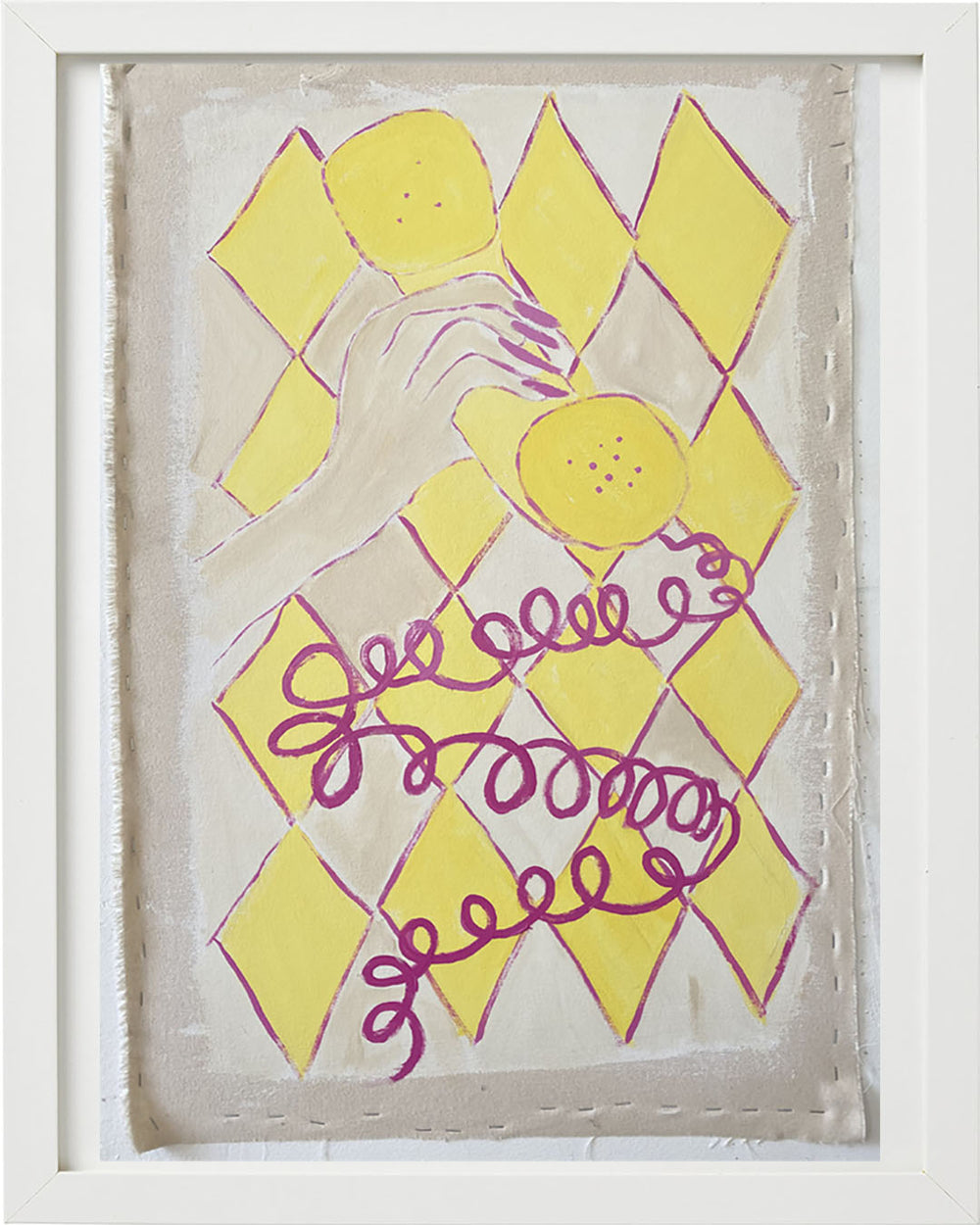

1-800-CALL-ME | August 2021
Yulia Zinshtein is a multidisciplinary artist based in Los Angeles who was raised between Moscow and Philadelphia. Through her paintings, photography, and illustrations she playfully explores themes like the beauty of longing, human connection and nostalgia.
Find more of Yulia's work:
Yulia's InstagramYulia's Website
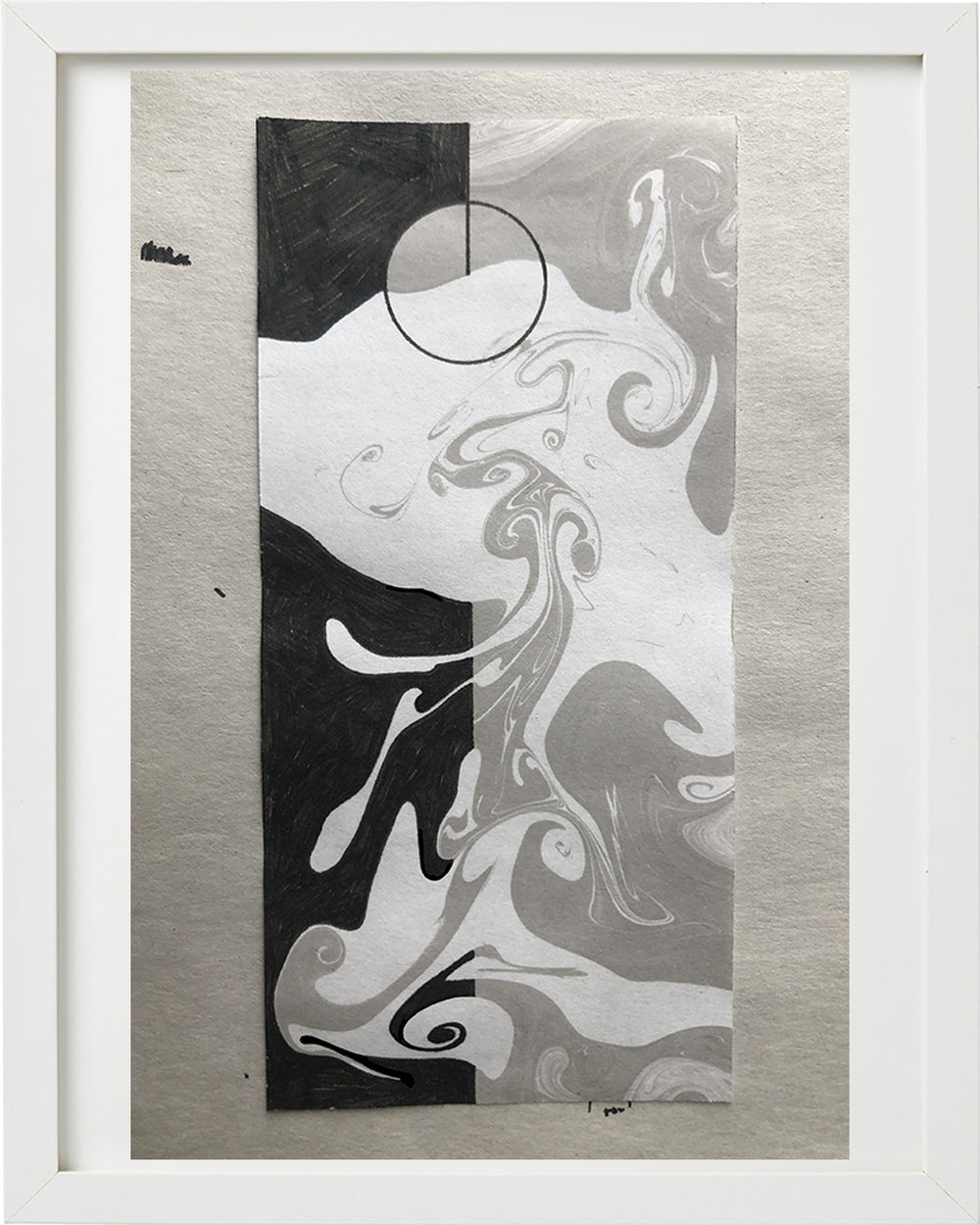

Moonglade | October 2021
Solange Roberdeau is an artist and educator based in Elk, California. Her work focuses on her relationship to materiality and process; a maker deeply connected to the present moment and her practice.
Find more of Solange's work:
Solange's WebsiteSolange's Instagram
Solange at Municipal Bonds
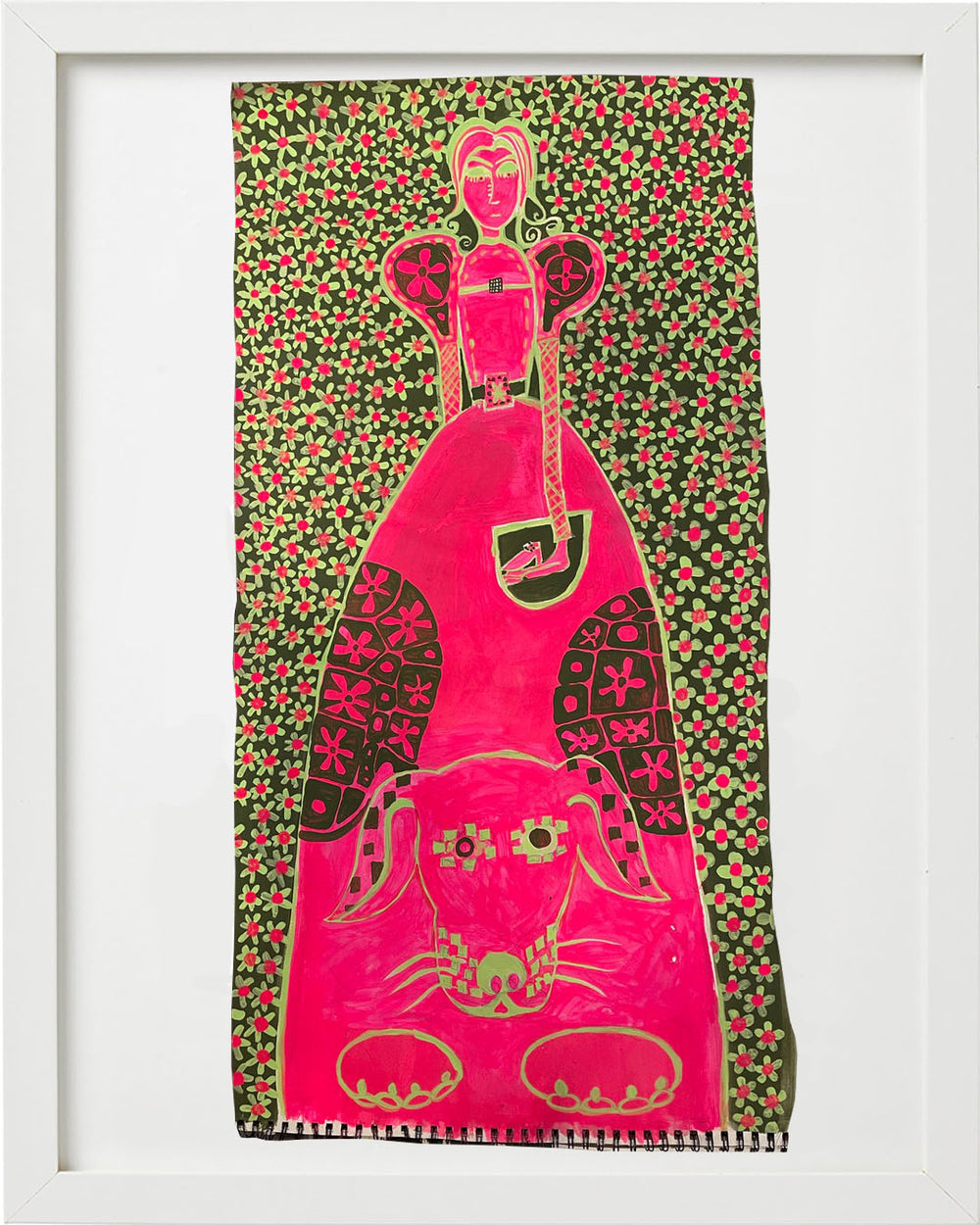

Blinky Dress | November 2021
Karen Barbour and Daisy May Sheff are a mother and daughter pair based in Inverness, California. Both are exquisite, prolific painters whose work dips into the subconscious and summons magical narratives overflowing with wild, fantastical color. Twisted folky fairytales swirl and swell, landscapes appear and disappear, characters spin within scenes that are at once comical and dark. Although they show work separately it is clear Daisy and Karen have influenced each other’s work immensely, making their towel collaboration extra sweet.
Find more of Karen and Daisy's work:
Karen's InstagramKaren's website
Daisy's Instagram
Daisy at White Columns
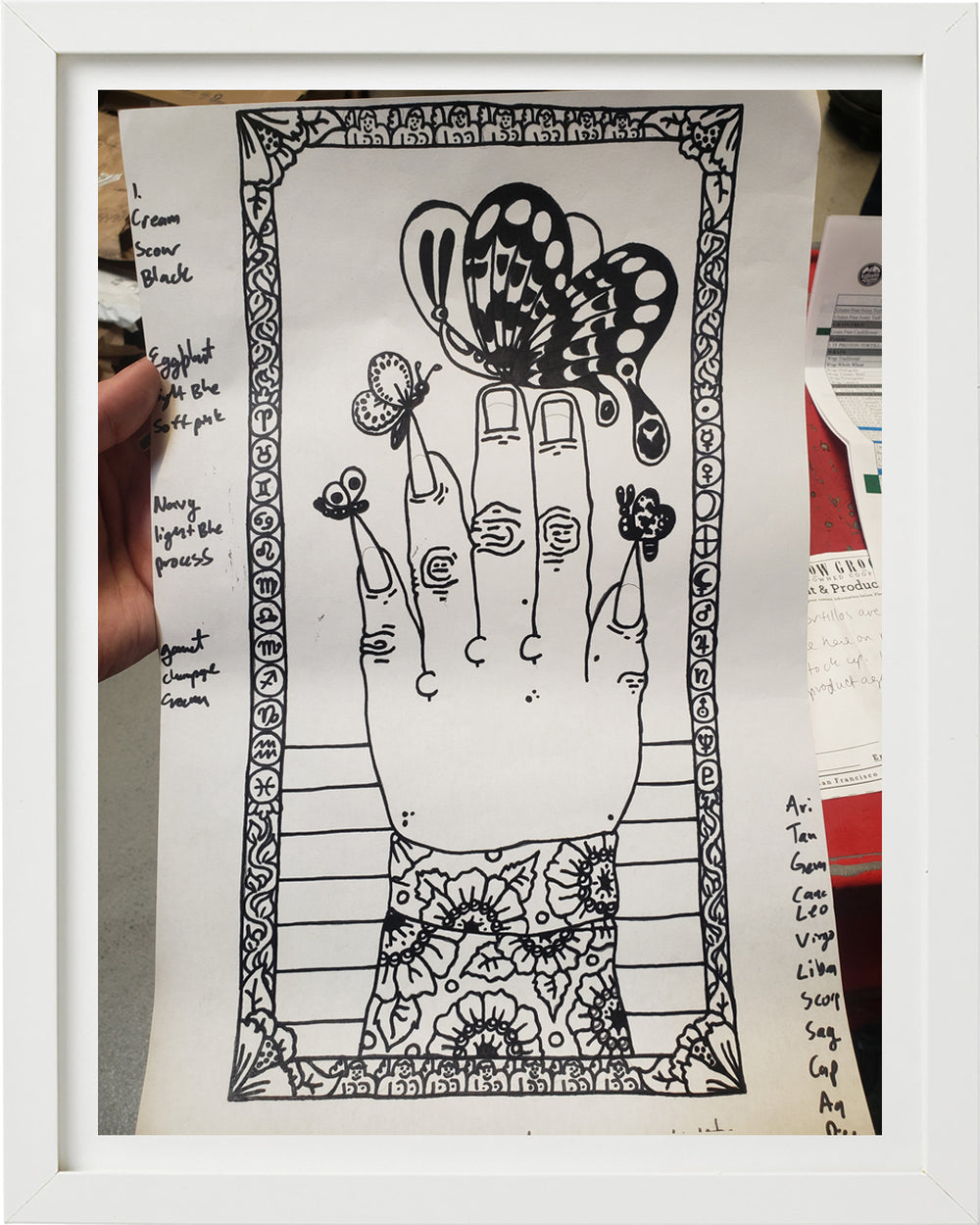

Butterfly Sprain | December 2021
Often using affordable craft materials and found textiles, Craig Calderwood creates thoughtful and wildly intricate, vibrantly colored illustrations that offer a glimpse into their private world. Their artworks incorporate a personal language of signs, symbols, and patterns that are heavily researched and repurposed to narrate visual expressions of "desire, biodiversity, and otherness". Craig is based in San Francisco, California.
Find more of Craig's work:
Craig's InstagramCraig's website
Craig at George Adams Gallery
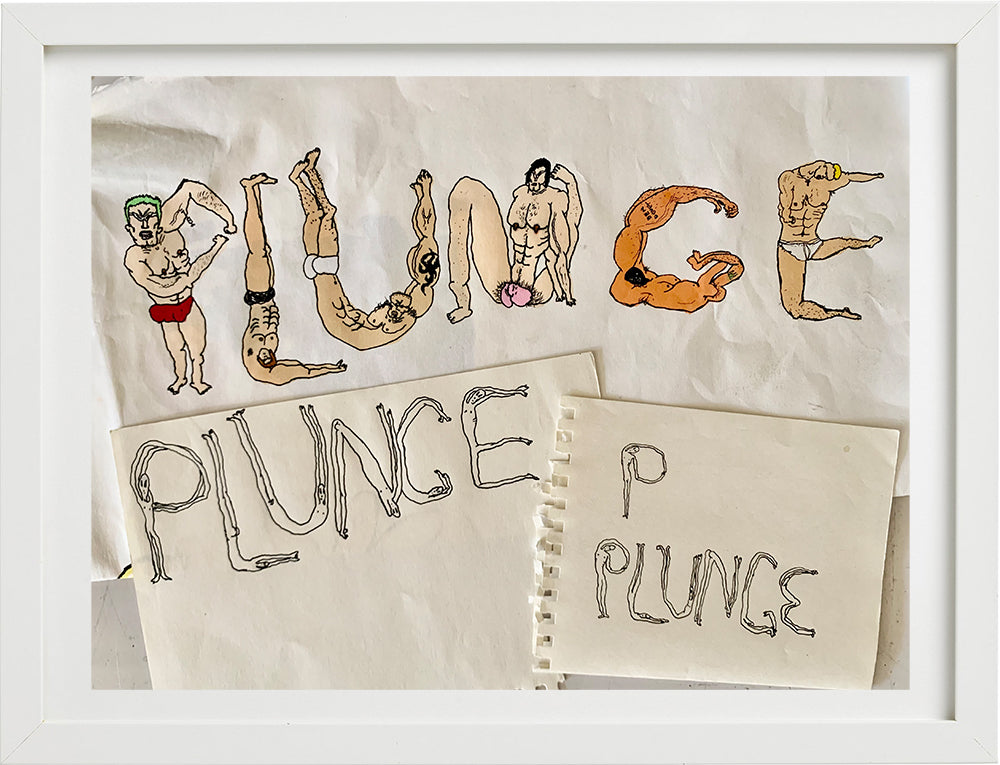


Biota Brine | August 2025
Tate Kim is a mysto artist from San Diego, California, and one of our in-house graphic specialists. He’s one of the most creative people we know, a curious and prolific drawing-maker who’s extra talented on just about every level and makes it all look easy ~ surfing, skating, making movies and animations, art-ing, existing. The world is a much better and stranger place with Tate in it.


Find more of Tate's plunge work:
Picnic & Bugs Tees and hoodies ~ October 2022
Mermaid Caps ~ May 2022
Alien Vs. Predator ~ February 2021
Swimmers Tee and Sweatshirts ~ February 2021
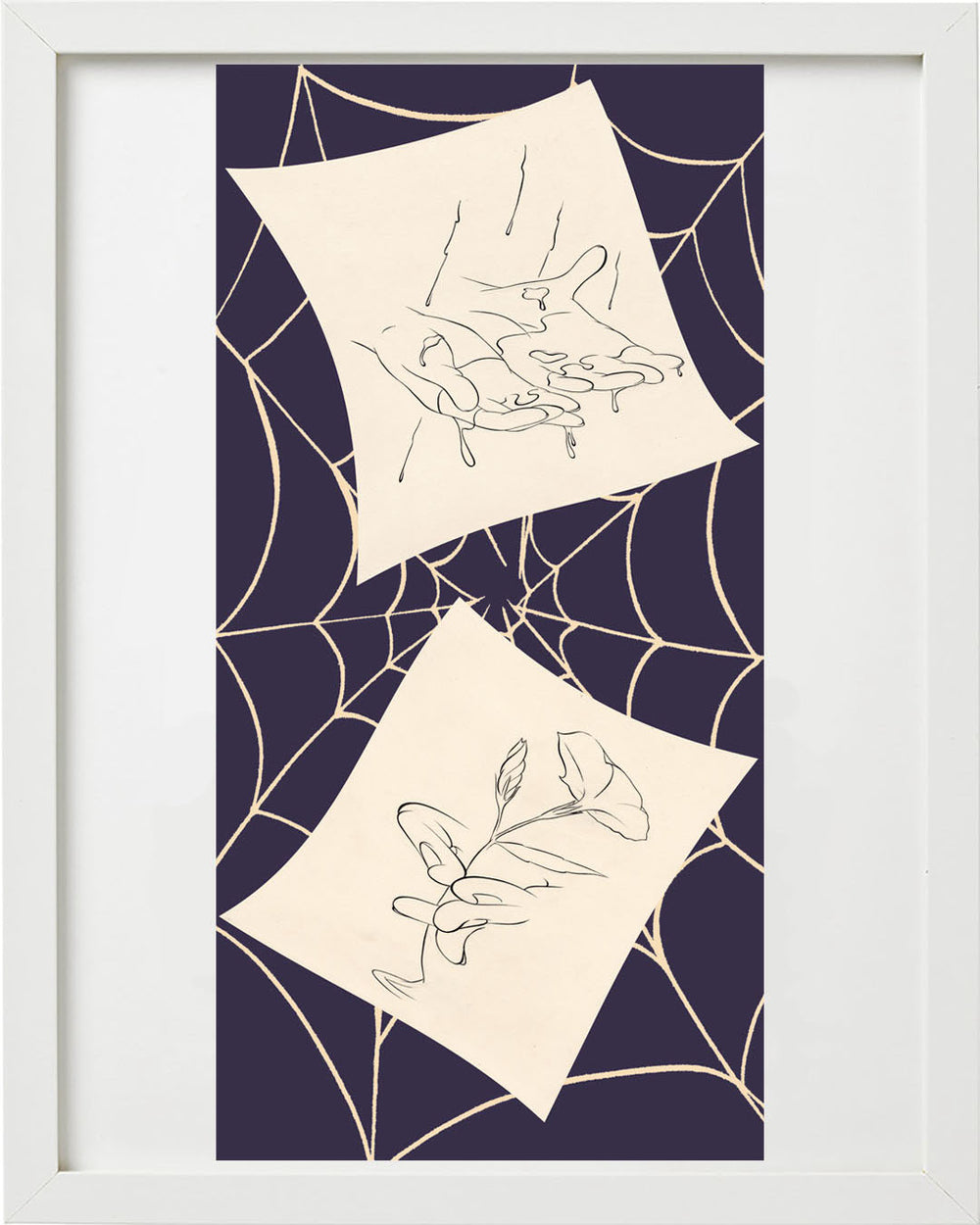

Sticky Everywhere |April 2022
Aaron Elvis Jupin is a painting and drawing maker based in Los Angeles, California. His work grapples with nostalgia, memory, and change; his subversion of symbols drawn from American suburbia and popular culture creates moments that are at once silly, uncanny, and sometimes too familiar.
Find more of Aaron's work:
Aaron's WebsiteAaron's Instagram
Layman's Terms, Tongue Tied at Moskowitz Bayse
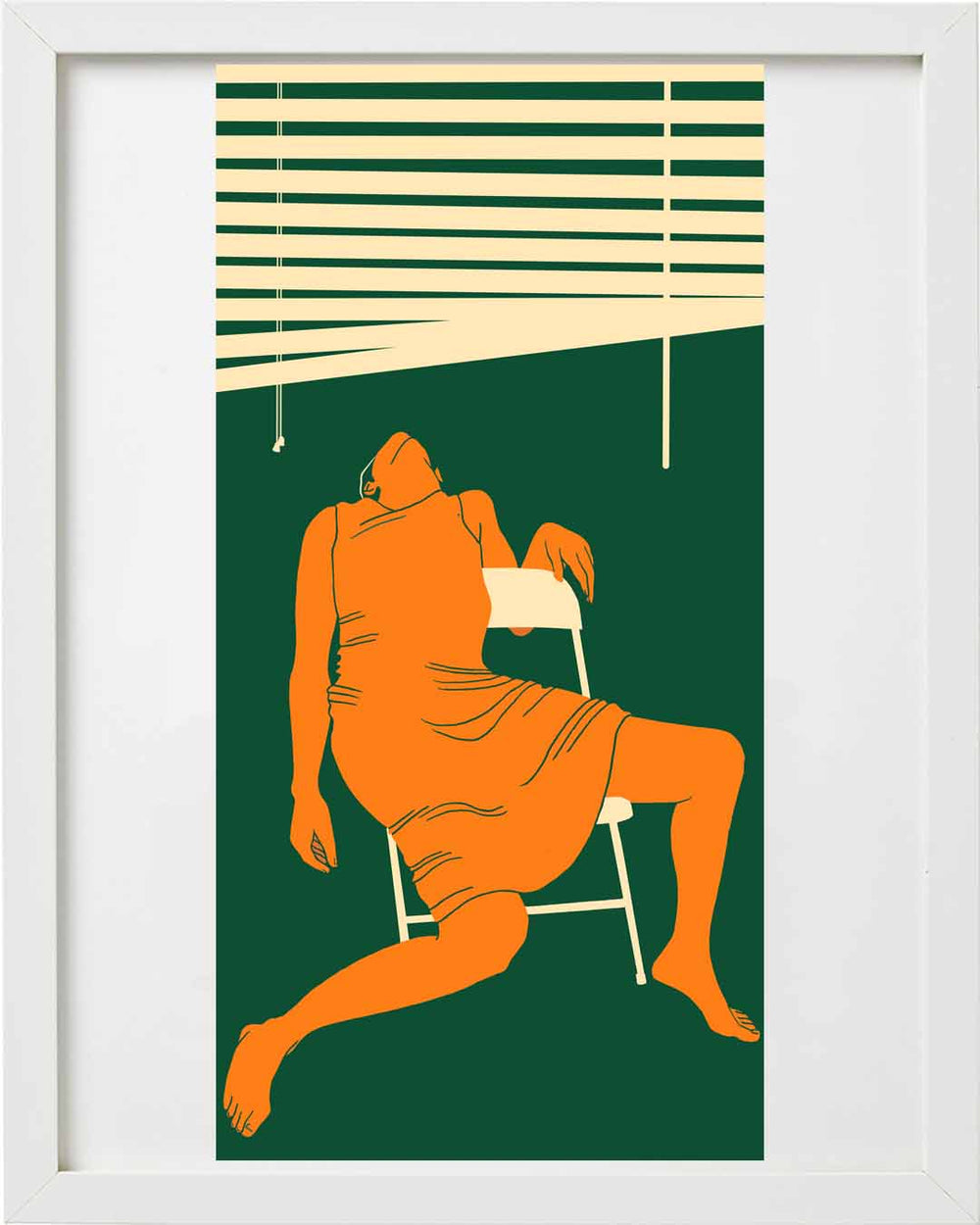

Body Heat | May 2022
Molly Bounds is a painter and printmaker currently living in Los Angeles. Born in Texas and raised in Colorado, she works to communicate the fault in the understanding of human agency. Torn between an aggravated still and a sequence of motion, subjects appear calm but unsettling, caught between frames as their states of being are exaggerated through posture and profile. In less than uncanny portraits, she instead dwells on the likeness of indecision, wavering through urgency, doubt, and complete ambivalence. Forcing viewers into spectating roles, she poses woulda-shoulda-couldas in windows and doorways leading to a purgatory of her design, stuck in an elongated moment where someone needs to make a decision.
Find more of Molly's work:
Molly's InstagramMolly on PLATFORM
Molly in Juxtapoz
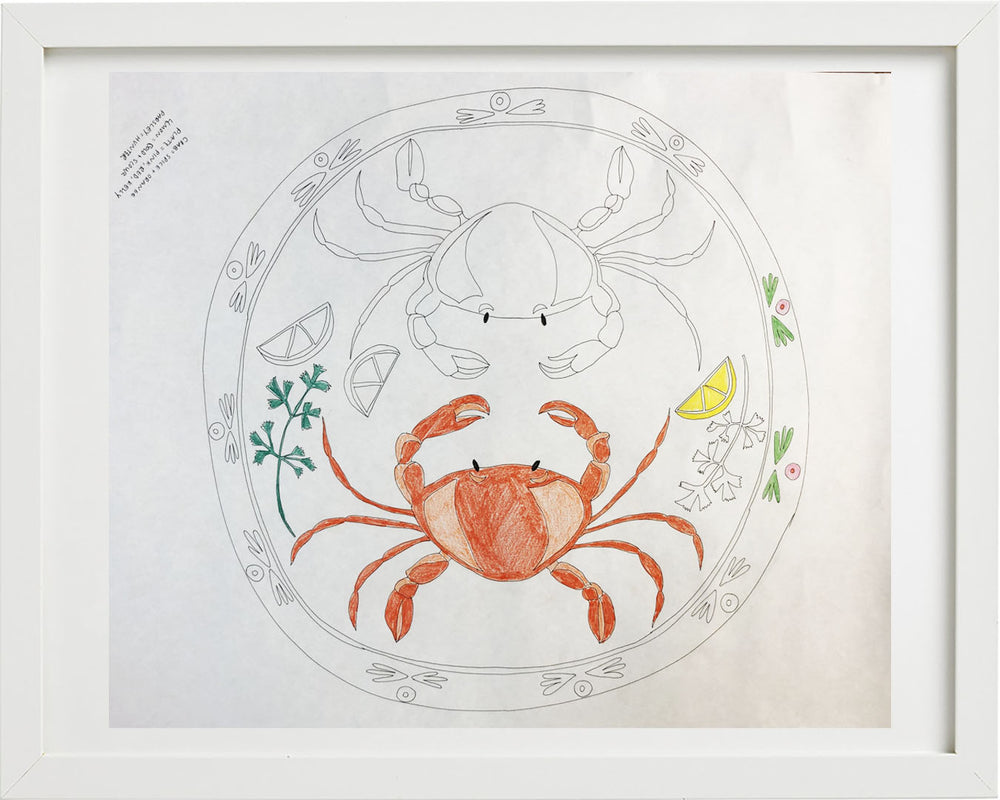

Frutti di Mare | July 2022
& The Reboot | January 2023
Lucy Stark is a painter and printmaker living in Oakland, CA. In her art practice, she documents food and dishes with personal significance as a way to capture and celebrate the euphoric yet fleeting moment right before a meal commences.

From Lucy on her design for our first-ever picnic blanket: “Frutti di Mare translates to 'fruit of the sea' (or seafood). This picnic blanket is inspired by the ocean’s bounty and the experience of dining al fresco with friends. The dishes in Frutti di Mare are based on a picnic I had in Tomales Bay where some friends and I enjoyed fruits, the sea, and plenty of fruits of the sea. For me, the best time at the beach is after a salty swim when the snacks come out. With this blanket, even after the last sardine has been eaten, the picnic never has to end. The oysters will stay chilled, the baguette won’t go stale, and you can pretend you brought more than a bag of chips to the beach."



Lucy was the perfect artist to bring a picnic blanket to life with her bright colors and delicate details that recall those nostalgic feelings of friends, family, tradition, and decadence. Since our first collaboration, Lucy has shown her work at MRKTGLLRY and Mini Mart galleries in San Francsico and continues to build her art practice. She is definitely one to watch.
Q & A with Lucy Stark
Plunge: Where do you make your artwork?
Lucy: Mostly upstairs here, though I definitely get lonely sometimes. I like to make art around other people so sometimes I’ll bring my easel and paints downstairs so I can hang out [with housemates].. I've always dreamed of having a room in my house that is just designated for art and once it was reality, it was like… what's everyone else doing?
Do you tend to work on one painting at a time or do you bounce around?
For the most part I work on one painting at a time. I have a couple paintings that are started that I don't really have a plan for – no one commissioned them and they're not going to a show so they sort of get tossed aside until I get more time.
At what point in your career have you felt the most successful so far?
I mean, not to kiss up, but when you asked me to do the blanket, I was really excited. And to have an experience when I'm not actually producing the work and just designing it was really cool. I love to make things but there was something really amazing to say this is just my design and everyone gets to enjoy it.
In a perfect-world scenario, do you want art to be your only job?
I feel like maybe no, because I don’t want to put too much pressure on myself or my art practice or selling work. There are so many things that I wanna make for me in my home that I don’t necessarily sell or think that people would wanna buy. I like the fact that I have a job that I can go to and not have to worry about linking my financial stability to my art practice. But also I feel extremely frustrated most of the time because I feel like I don’t have enough time to work on my art and I wish I had more time so that things would move quicker. I also feel like so much of my work is for friends or family and I like to keep it that way. I know that’s not necessarily sustainable for a career in the arts but…
I don’t believe the definition of an artist is someone who only shows their work in galleries or makes work for the public.
I know. Sometimes it doesn’t feel that way, though, when you see other people, especially on Instagram, like, “oh, I’m doing this show or that show ''.
How do you feel about sharing your work on social media?
Instagram is definitely the worst. Sometimes it takes me weeks to post something. I try to post paintings right when I finish them and oftentimes it will take me a really long time because I just hate posting. But it’s cool because I've found so many great artists there and so many people have found me. Part of me would love to not have instagram but another part of me wonders what would happen to my art practice. I feel like it is kind of intertwined.
Are you Swedish?
Yeah my dad is Swedish – we actually went to Sweden this summer.
Where did you grow up?
Pasadena
And you came here for school, studied printmaking, and then decided to stay in the Bay?
Yeah, Berkeley. I just never left. Right after I graduated I worked at this summer camp, and then I [went] traveling, and then when I came back I worked for an interior designer, I worked at the Gagosian Gallery in the city – it's no longer there. And then I started teaching art and got a job at Paulson Fontaine Press. I feel like ever since I graduated, I've been more focused on painting but always try to keep one hand in printmaking.
Can you talk a little bit about your relationship with your family, and how food is such an important part of your work?
My mom went to cooking school and food was a really big thing in our family, even before that. My sister and I were always in the kitchen at a young age and I was kind of a picky eater too. It is what my mom and my sister and I bond over: going out to dinner, making dinner… Nellie makes cakes and that’s kind of her art practice too. [She] and I have two very different practices but we definitely help each other and collaborate. And if I'm ever stuck on something I'll ask what she thinks.
She probably understands your work on another level that helps you push through those indecisive moments.
Yeah definitely.
Do you find yourself ever making work that's not about food?
Currently, no. I feel like before I was really into the food, I did a lot of lounging ladies, naked ladies, swimming ladies, like that kind of stuff. It’s kind of funny. I feel like I’ve put myself in this… not a rut, because I’m still very much enjoying it. The only time recently where I do art that's not about food is when I draw invitations if we're gonna have a party.
What else are you excited about?
One of my goals for this year was to do a self portrait and I haven’t done that yet.
Oh yeah? That’s different!
I did a portrait of Nellie and I really enjoyed it. It was so hard.
Are you comfortable in that realm?
Not really. It was just what I felt like focusing on, trying to do figures and faces in my reductive layering style is something I'm really interested in exploring. I want to do more of that, but we’ll see…
Check out Lucy's Playlist on the Plunge Spotify Page ~
Find more of Lucy's work:
Lucy's InstagramLucy's Website
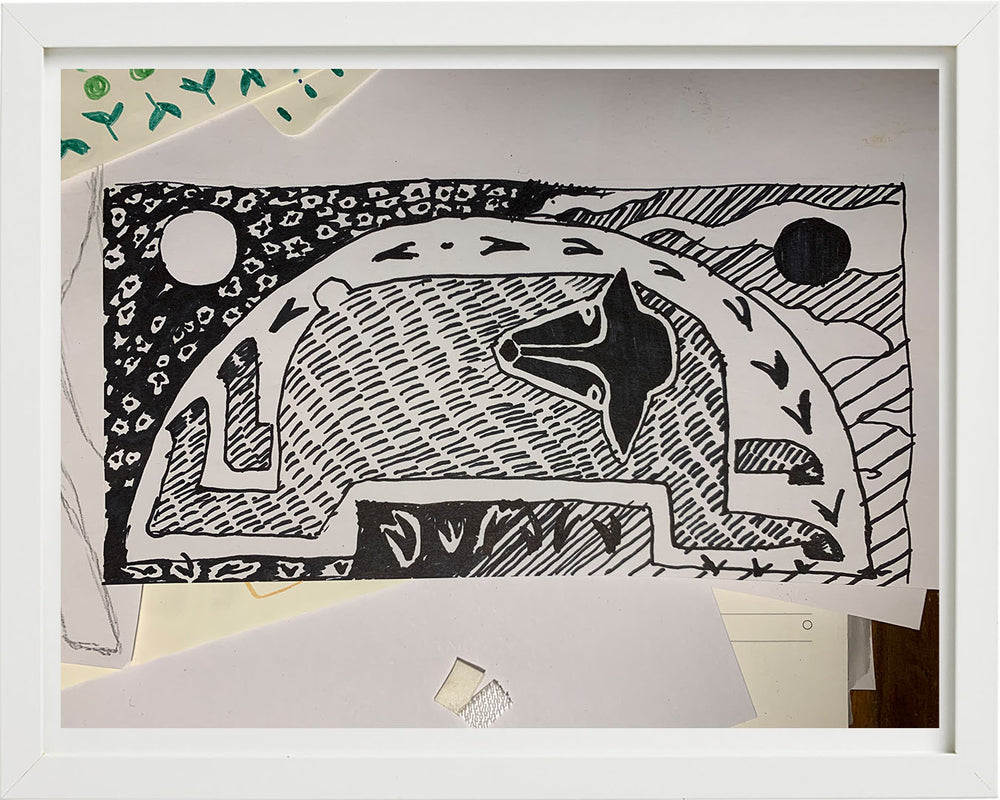

Goat to the Stars | September 2022
Natalie Bessell an artist from La Jolla, California who is currently based in a tiny Australian town called Saint Andrews Beach in the state of Victoria. In her work she uses paint, paper, wood and clay to illustrate our human relationship to the plant and animal kingdom.
Find more of Natalie's work:
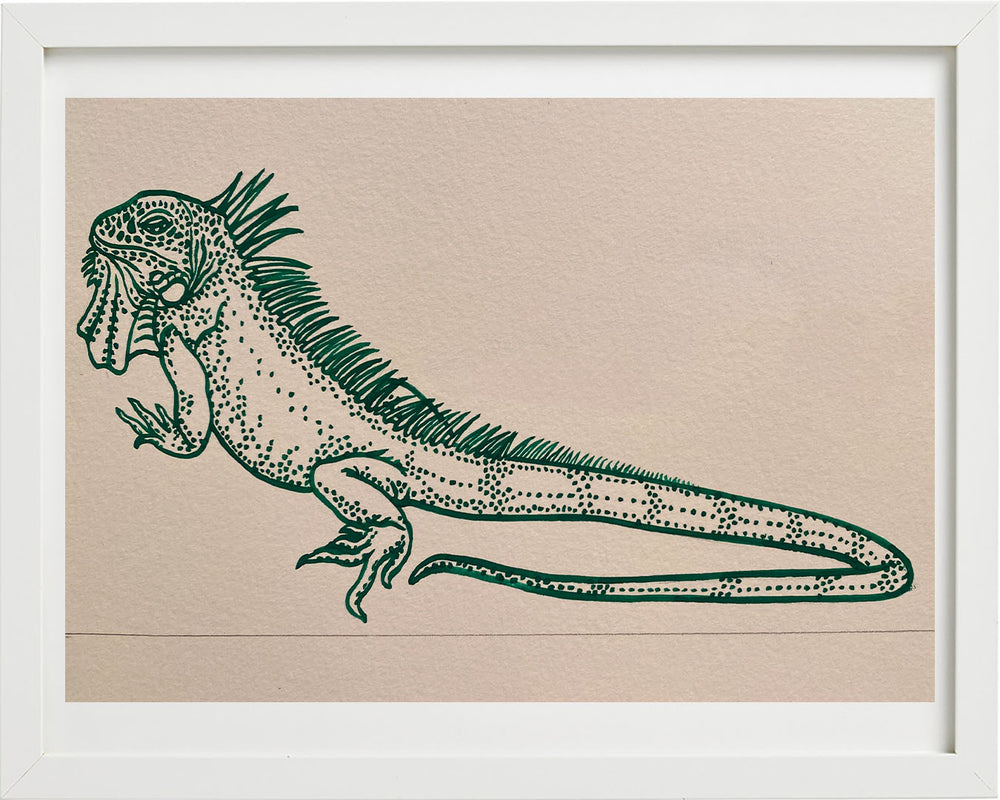

Supreme Sunbather | October 2022
Sanaa Scherezade Khan grew up in the South Bay Area. Her favorite mediums are painting, drawing and printmaking. Sanaa helps run Max’s Garage Press, a community print shop in Berkeley that offers affordable access to a wide range of equipment for traditional fine art printmaking, risograph printing, and zine-making. She is also 1/3rd of Tiny Splendor, an independent press that collaborates with artists around the world (and us!) to share a love for putting ink on paper.

Sanaa is an incredibly talented artist whose fantastical, often humorous drawings of animals, humans, combinations of the two, and so much more come to life in expertly rendered detail.



Q & A With Sanaa Khan
Plunge: Did you start your art practice with printmaking?
Sanaa: Actually, I love drawing and painting. Before I went to college, in high school, I was really into that. Then in college, I took printmaking classes, and I just fell in love with it. That’s where we started wanting to create a studio in a space that people use, outside of school. Then it just grew over the years.
Do you feel like your art practice is inspired by helping other artists?
Yes, totally because I feel like what drew me to the print department was everyone is working collaboratively and seeing what everyone else is working on and you just get a sense of you’re not doing this in a vacuum as much. I feel like painting and drawing is very vague on its own. It’s very meditative and I wish I had more time for that, but print, you have to use all of the same stuff you have to consult people, so I like that.
Community!
Yes. I’m a big introvert, so I like being forced to mingle with people.
How often would you say you’re working on your own art?
It really varies, but I try to always have at least one project that I’m working on and I feel like I’m in a place right now where I would like to be working on it more, but I’m prioritizing working on it like one day a week.
Do you show it often?
I do a lot of group shows when I can. I want to do shows if I feel like it's worth the effort of what I can realistically pull off to my own standard, but not kill myself over. I also like working with people who are doing things I'm really into. It's always nice to work with people who I know in real life or friends of friends instead of trying really hard to apply to a bunch of galleries that I don't know. I also tended to work smaller and smaller over the years, and I don't even know if I could fill a big gallery if I had a solo show or something.
Do you ever work large scale?
I used to, but honestly I feel like with the level of detail that I like to get lost in, I probably would have to give up everything else I'm going to work big.
So do you use this as a studio for your own work?
Yes, for print time especially yes, but also for random odds and ends. I do a lot of drawing and painting at home though, but that's when I need a break from the studio. It’s a mix. I feel like I'm trying to get better at work-life balance because sometimes I'm here for 9 or 10 hours and don't have a day off during the week and that's just because I'm bad at time management. It's not like anyone's making me be here other than myself.
What part of your process excites you the most?
I think I just feel like making stuff is always this really cool magic trick where you get to create something that wasn’t there before and it gets to be exactly how you want it to be. I wish I had better words to describe that process, but that’s the part of it I like the most, it’s just very… very self-determining
Absolutely! And how does making art make you feel? You said it in other words.
It’s very grounding and it very much reminds you of what to be grateful for because you have constant access to making things in the way that you want to. It’s a very good reminder to yourself if you’re depressed or anxious or the surrounding world is overwhelming. It’s just very nice to be able to work on something.
Yes. It’s always there for you. It seems like you’re trying new things constantly in your print practice. What about in your private art practice?
I am constantly trying to just make it a little bit harder for myself with level of detail, or sometimes even though art can be like this very relaxing, grounding, healing thing for me, I do sometimes actually come at it with this self-punishing mindset. I try to be better about it as time goes on, but sometimes you need to get something done faster than you did before and more detailed… Up the ante, which is somewhat a negative thing, but I think I really enjoy setting a higher expectation for myself every time.
Is there ever a time when you’re not able to produce work?
Definitely. There’s definitely been big chunks of time. I would say a lot of COVID [I was ] not opening my sketchbook other than for projects I’d agreed to. I was not drawing in my sketchbook at all. I still feel I’m in that blocked place of not drawing for fun.
How do you work through those moments?
I just tell myself to not worry about it and just not even try to make myself do it because otherwise it’s going to be even less fun, so just giving myself permission to do the stuff that is more of an assignment, and less freeform.
When have you felt the most successful?
I feel like every year we've been really surprised by how well our print sale has gone in December, especially the first years, it just kept exponentially growing and we were shocked because our space is word of mouth and we didn't really put out too much about it. I like seeing how many people come out for that and how many people are really excited about print and how people get in a frenzy about it. It feels really like a success that we’ve been able to cultivate and pass on this appreciation for what print can do, combined with artists that we really like and appreciate, and make that happen. I feel like the print sale always feels like the biggest condensed version of that kind of success.

Listen To Sanaa's Playlist on the Plunge Spotify Page ~
Find more of Sanaa's work:
Sanaa's instagram
Sanaa's website
Tiny Splendor press
Max's Garage Press
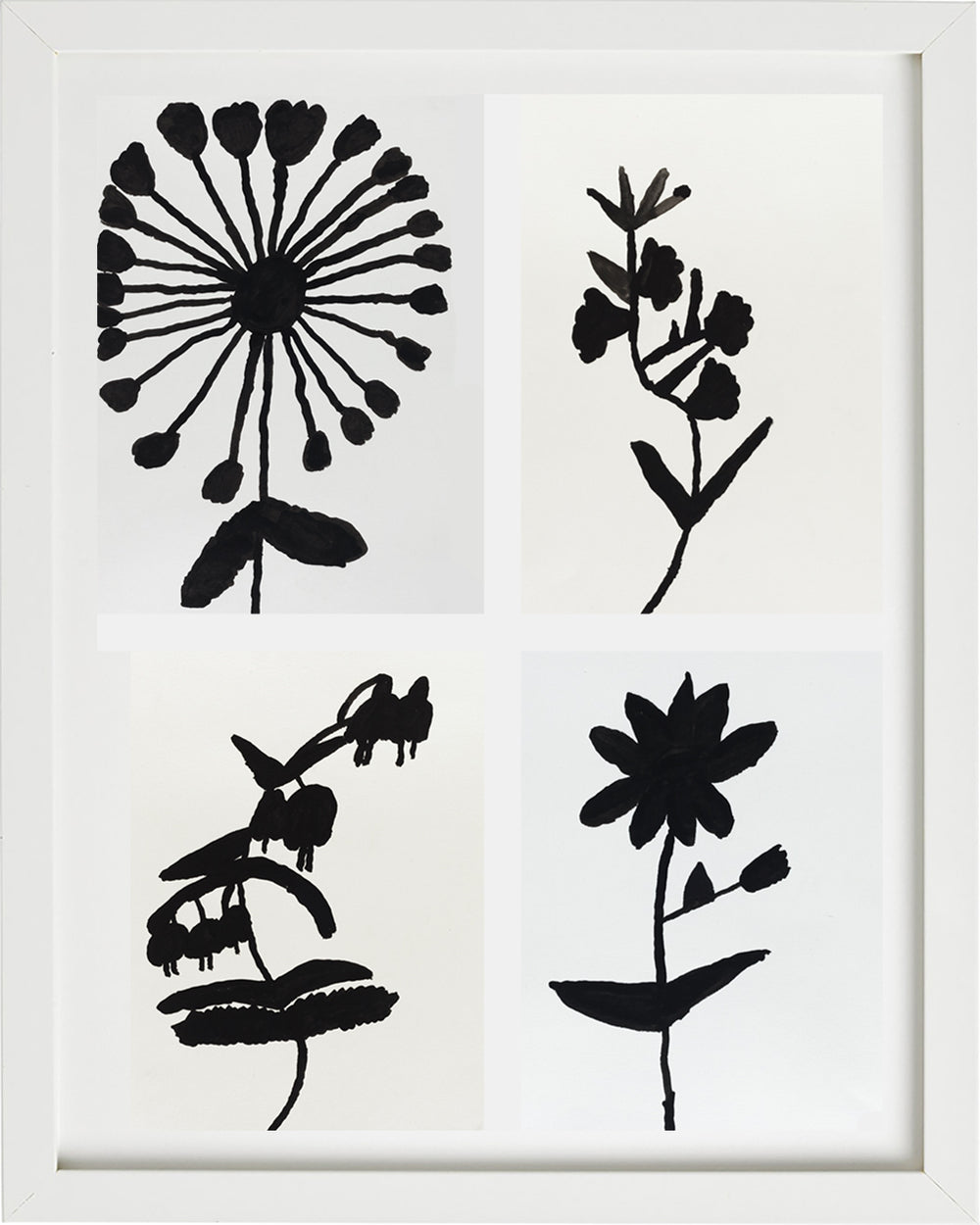

Flower Power | November 2022
Artist Elana Cooper is primarily known for her striking, large-scale floral silhouettes, though animals are also a common subject of her work. Cooper paints in bold strokes, the background in one color and the subject in a contrasting color, giving her representational work an abstract quality. Drawing from a journal of flowers, Cooper has created her modern floral silhouettes with ink, watercolor, acrylic and even as 3-D wood cutout sculptures. We are thrilled to have turned four of her original Flower paintings into an exclusive, limited-edition artwork in terrycloth.
Cooper began working in Creativity Explored's studio in 2013 and says, “I never made art before coming here. I didn't know I had the skills for it!” Cooper's popular floral silhouettes have been licensed by Open Editions and commissioned as large-scale public murals by State Bird Provisions. Her iconic flower designs were re-imagined in large-scale for Of Here From There | De Aquí Desde Allá, an interactive digital installation created in partnership with Ana Teresa Fernández in 2020.
Animations by Elana Cooper courtesy of Creativity Explored.
Creativity Explored is a studio-based collective in San Francisco that partners with developmentally disabled artists to celebrate and nurture the creative potential in all of us.
"Creativity Explored serves 130 artists and has facilitated the careers of hundreds of artists. Creativity Explored artists have seen their work exhibited in museums, galleries, and art fairs in over 14 countries and have earned over $2 million from their art.
Their life-changing programs continue to open doors of inclusion to center the personhood and creative vision of people with developmental disabilities. Most importantly, Creativity Explored is a source of community, empowerment and dignity." (Creativity Explored website)



Q&A with Elana Cooper ~ November 2022
What made you “take the plunge” into an art career/creative life?
I like flowers a lot. I first drew animals and now focus on flowers. When I came to C.E. I began making artwork.
What do you love about Creativity Explored?
It’s fun... I like doing flowers... I’m getting my butt up... Flowers, it’s my favorite thing to do... Painting and drawing animals, first.
You're known for your famous black ink flowers and designs. What is the inspiration for your flower paintings and drawings?
It's fast to do... I look at them on my phone, the flowers. I have a flower A-Z list – Flowers from A-Z website... It’s fun. I look at drawings of flowers in my book or on my phone. The shape attracts me.
Do you like to garden or are there any gardens you like to visit in San Francisco?
No garden at home. I like the smell of flowers.
What are your favorite flowers?
All of them.

Favorite color?
Purple
Do you have a favorite musician or album?
I like disco, Dirty Dancing soundtrack, Michael Jackson, Beyonce, Justin Timberlake, Ariana Grande
Click here to find a compilation of Elana's favorites on our Spotify :)
What are you working on now and what’s next?
More flowers. Working on another flower drawing.
Anything else you'd like to share?
I draw large flowers for a change of pace… I call some of the larger pieces “Crying Flower” because it has drips going down.




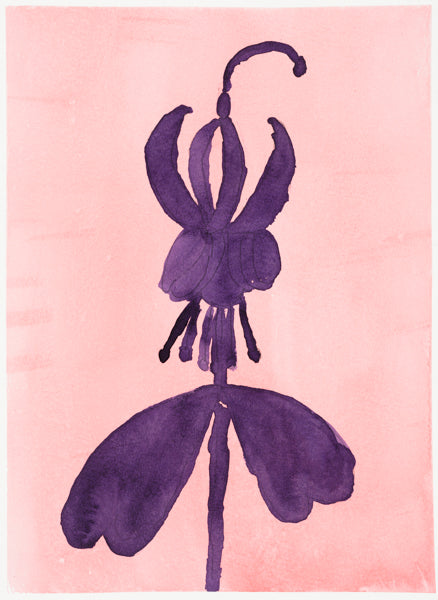
"Since starting at Creativity Explored in 2013, making art has been a way for me to translate and process the way I see the world. When I first started working at the studio, most artists came in 5 days a week. There was so much lively energy in this space, I loved having that community as a regular part of my days. I grew so much as an artist from having the opportunity to get instruction and practice every day in the studio.
When C.E. studios switched to virtual programming during the pandemic, it was a difficult transition for me to make. In a lot of ways, it felt like I was on a long-term vacation; it became harder for me to focus and find motivation, and I missed being a part of the C.E. community. However, after some time, I began to embrace the community-driven model of our virtual classes with C.E. Teaching Artists. Now, in my own artistic exploration, digital art has become one of my favorite mediums.
As many of you probably know, my signature art pieces are floral silhouettes, made from black ink and watercolor on painting paper. I love creating my silhouettes and have an entire reference document of flowers that I choose from each day. Oftentimes, I make flowers that express a lot of emotion, flowers that are ‘crying’, or flowers that are in love. It can be a way to represent myself and bring objects to life.
Digital art has expanded my ability to bring my craft to life. Through ProCreate and digital animation classes, I’m able to turn my drawings into moving pictures. My digital art process begins similarly to my physical process. I start with a base drawing of whatever I can imagine, then, with the help of Teaching Artists Lacey Johnson and Enrique Quintero, I’m able to turn my drawings into adaptable pieces of digital art and animation.
One of my more recent projects is a digital drawing of an ice cream shop, in honor of my dad. My dad loved ice cream, and since his passing, I have been finding ways to reconnect with his memory. When the piece is finished, I plan to draw my dad into the scene eating his favorite snack.
During one-on-one mentorship sessions with Lacey, I’ve really been able to learn and grow as an artist. It's so rewarding to find a new way to express myself in the digital art world. With hybrid programming, I’m able to work on the same art projects at home or in the studio, which offers me more space for inspiration, instruction, and growth." (Elana Cooper and Creativity Explored)
☺

Find more about Elana:
Elana Cooper's profile on Creativity Explored
Shop Elana's available artwork
Elana on Artsy
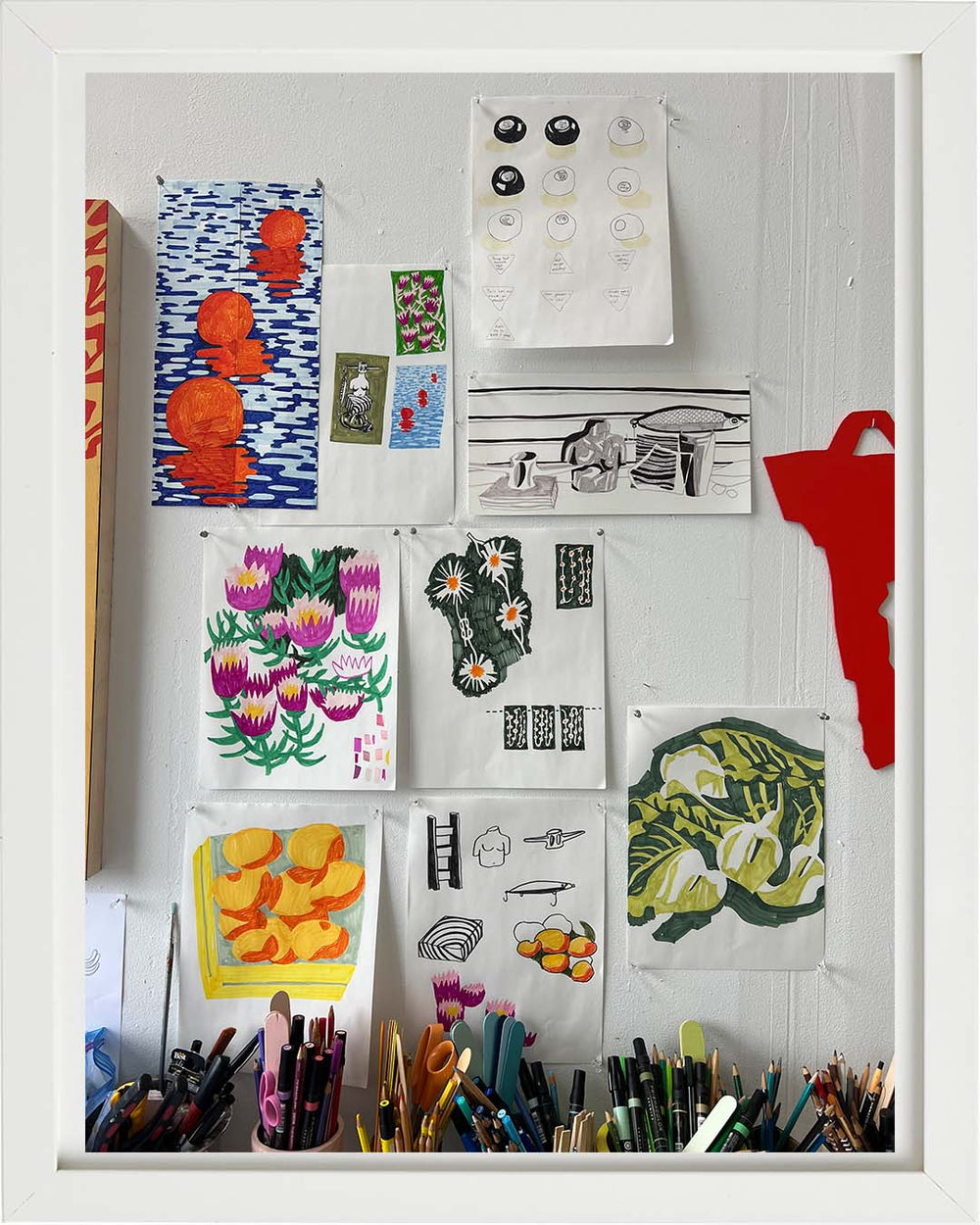

SWIM ZONE & DAISY CHAIN | DECEMBER 2022
Annie Duncan’s work draws from personal narrative and examines the objects, patterns, colors, and people that compose her lived experience. The world conveyed in her paintings and sculptures oscillates between dream and reality, with one foot in each. She explores themes like intimacy and evolving notions of femininity, lingering on the subjects that accumulate to form an archive of emotive, everyday moments.

Annie is a painter and sculptor from San Francisco, where the light and colors of the landscape have always inspired her. She has worked as a teaching artist in residence at The Oxbow School, printmaking teacher at The Putney School Summer Arts in Putney, Vermont, and an emerging fellow at Gallery Route One in Point Reyes Station, CA. She received a BA from Vassar College in 2019, with a major in Urban Studies and a minor in Studio Art. She is currently pursuing an MFA at the California College of the Arts.



Q & A Annie Duncan
Plunge: Have you always made art?
Annie: My dad is an architect so we were always drawing and working on little projects. And I took ceramics classes from a really young age, so I was always making things. And then I think from there it was just a question later like, am I into architecture, design, graphic design…?
And you grew up in San Francisco?
Yeah, I grew up here in the city.
What made you want to come back after you went to Vassar?
Well I kind of circled back during the pandemic and I think it felt really good to be at home and out int Pt. Reyes, too, out in nature. It’s super beautiful. I didn’t really realize but I still have so much community here and I’m reconnecting with so many different people. And actually, I’m really glad I came back.
How far along are you in MFA here at CCA?
This is the second year. It’s only a two year program.
Is all the work that we’re seeing here for school?
Yeah, well at this point the program is kind of just your own practice. Like everything over here, I made over the summer and last spring. It’s such a blessing to have this space. Over the summer I was here working everyday.
Is your MFA in painting?
Yeah, I mean it’s super open. There’s like thirty-five people in the class and everyone does totally different things.
From the looks of your studio it seems like you’re doing a little bit of everything as well.
Yeah that’s what I’m trying to do… Trying to bring it all together.
Your sculptures are very painterly. Was that something that happened naturally or did you have to work towards finding a cohesive style?
Well, when I started making the ceramic objects a couple years ago, I realized [that] with the underglaze you can kind of just treat them like you would canvases. You can really have a palette and paint them in a way that’s much more like painting and less what people think of as clay.
What’s your practice like? What’s a day in the life of Annie?
Oh usually I get here by 9:30. Usually I bike here, which is a good little bike ride. I live over in NoPA, off the panhandle. And then I get here and usually I’ll try and paint all day. Now I am TA’ing at a ceramics class so usually I’ll do a few days a week of clay.
Is your ultimate goal to do art full time?
Yeah I mean that’s definitely the goal. I’d also love to teach. It’s fun to be a student and be a teacher.
What part of the process of making art excites you most?
I think right now I am just really enjoying clay and not knowing where things will go. And I think things work well when I surprise myself. I think that’s been when I’ve been successful. I’m really just enjoying playing right now.
When have you felt the most successful so far?
I feel like right now I’m in a little groove. Not that I’m at my most successful, but I feel like I’ve kind of hit a grind and I’m really excited to be in the studio. And I have a bunch of ideas.
What is it that makes you feel like -- yes, this is working, or things are coming together?
I think when I finish a painting sometimes I just know whether it’s good or not. And it was actually nice over the summer, to not have any feedback from anyone and not really think about that at all.
Is color theory a big part of your practice?
I actually took an Albers color class in undergrad which was really wacky and not at all I was expecting but it was really cool. And now it’s embedded in everything I do.
I’m sure it’s crazy to think that your schooling is almost done.
I know. It is crazy. I’m also like, what am I going to do without this studio? I’m applying to a bunch of stuff right now for after school, so we’ll see what happens… Residencies and a few fellowships… Just gotta cast wide.
It seems like a lot of your path has unfolded through school but what else do you think has contributed to your creative path? Do you have any insight for other young artists about how to be an artist?
I feel like that’s what I’m always asking. I try to show up to everything that comes on my radar, like shows. Especially in the Bay. I meet people that way. Also just getting out — I have a studio in a building which is kind of nice as opposed to a home studio.
Community is so important to being a part of the art world in general. This is something I ask everybody — how does making art make you feel?
A lot. Like I’m doing what I’m supposed to be doing.
That’s great, you’re in the right place. We are excited to keep watching you grow.

Check out Annie's Playlist on the Plunge Spotify Page ~
Find more of Annie's work:
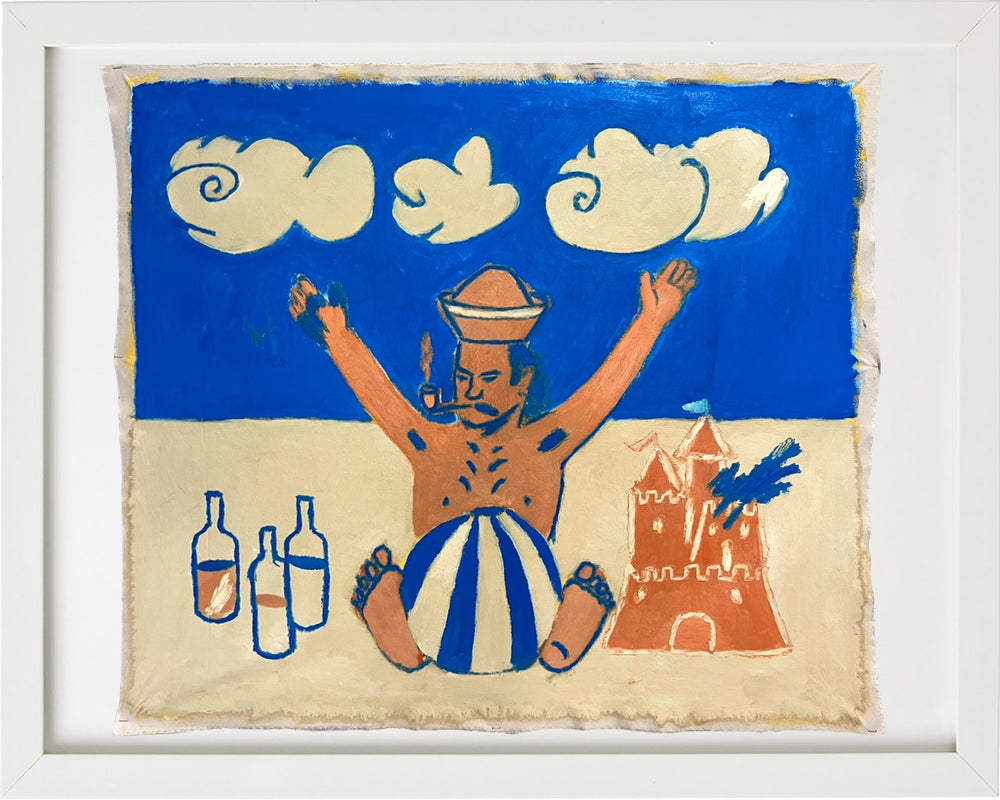

Plunge Man | February 2023
Gabriel Kasor is a prolific artist making paintings in San Francisco, California. Originally from San Diego, Gabriel found his way to the Bay Area and has been forging his path to a promising career in the arts.

Using bold gestures and a variety of colorful mediums -- paint, oil sticks, pastels, etc -- Gabriel creates charming scenes that feel like pages torn from a storybook or fragments of a vibrant dream. His confident, fearless expression is textural, layered and often informed by historical reference... The places and faces are familiar with a touch of magic and the uncanny.
Find more of Gabriel's work here:
Gabe's instagram
An interview with Gabe in Parcel Magazine
Gabe on Artsy
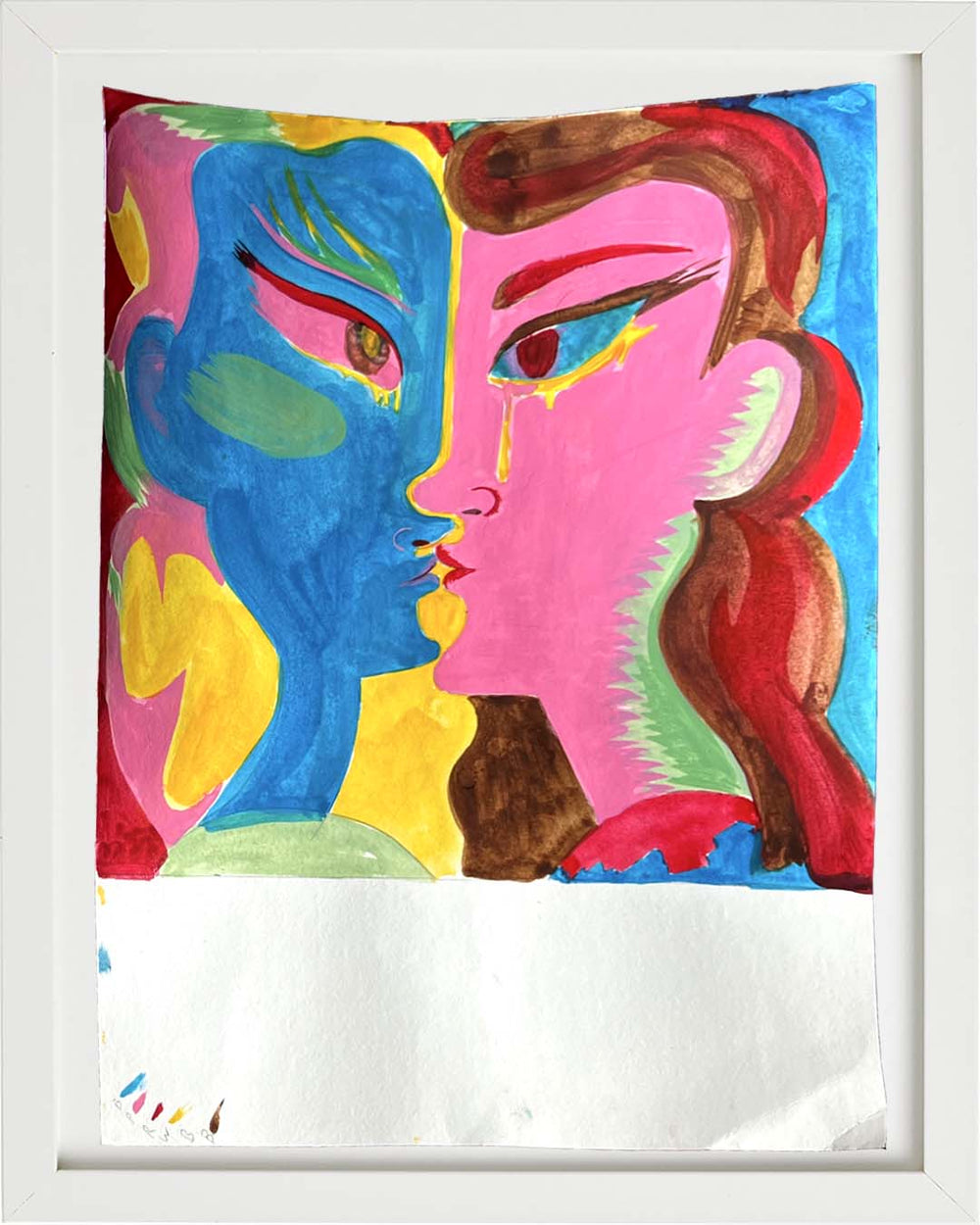

The Wet Kiss | February 2023
Rainen Knecht studied at the San Francisco Art Institute, graduating with a BFA in Painting in 2006. Knecht’s exhibition history includes solo and two-person exhibitions at Fourteen30 Contemporary (Portland, OR), SITUATIONS (New York, NY), and CAPITAL (San Francisco, CA) as well as group exhibitions at Various Small Fires (Los Angles, CA), Fisher Parrish (Brooklyn, NY), Stems Gallery (Brussels, BE), Royal Nonesuch Gallery (Oakland, CA), Either Way (Los Angeles, CA) and PMOMA (Portland, OR). Knecht is currently based in Portland, Oregon.
We love Rainen's colorful, magical, extraordinary feminine figures ~ they dance and contort inside and outside their frames while wildly gesticulating themes of motherhood, the self, and the heavy weight of emotion. We were thrilled to create Plunge's first knitted blanket with Rainen's Wet Kiss painting!
Find more of Rainen's work here:
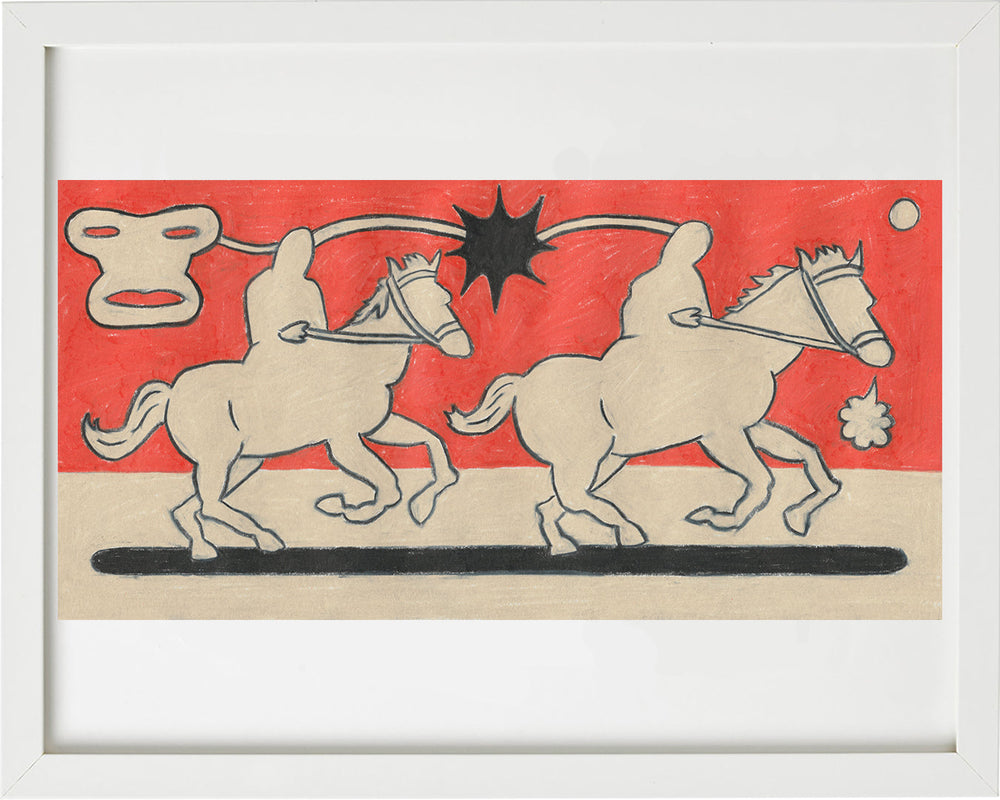

Pilgrimage | March 2023
We love June Gutman's prolific drawings that feel like pages torn from a modern illuminated manuscript. Using her own elaborate symbolism and iconography, June uses her artwork to retell her lived experience navigating the psychiatric system and the search for her self in the process.



June on her process and experience: "I am a Jewish woman and self-taught artist born and raised in Montreal, Canada. I am fixated on producing tangible evidence of my experience of reality. My acute awareness of my own existence has been present throughout my life; I have remained in awe of and shocked by my own consciousness since childhood.
At an early age, my sensitivity to life resulted in a quick admittance to the psychiatric world and I spent my formative years as a psychiatric patient. I am now in the process of carefully ridding my system of the medication I took for most of my life, trying to free myself from the confinement of diagnosis and re-learning who I am without the medicalized opinions of the mental health industry."

"While I fight to withdraw from medication I took since childhood, I am presented with many seemingly unmanageable symptoms, one of which I name 'The Terror'. Much of my art is in response to this nightmarish state; I am desperate for relief and I ache for an accurate documentation of this baffling condition. Beyond terror, I live with many other experiences that dodge words; many bizarre, borderline-psychedelic and sometimes mystical moments that fall into the category of 'Unreality'.
My psyche is rearranging itself as I suffer and heal from years of adhering to the 'mentally-ill' narrative, being over-medicated and only knowing darkness; my art is an attempt at detailing this life in images. Simultaneously, my art is a comment on the opaqueness, the privacy, the secrecy and the hidden nature of the individual mind.
My attempt to educate an audience on psychiatric-harm (and safe tapering methods) is very important to me. I am far from alone in my experience as a psychiatric-survivor and through my art, I am also fighting for those whose lives have been stolen by psychiatry."

Listen to June's Playlist on the Plunge Spotify Page ~
Find more of June's work here:
June's Instagram
Phenomenology Zine by June Gutman x Poppy Press
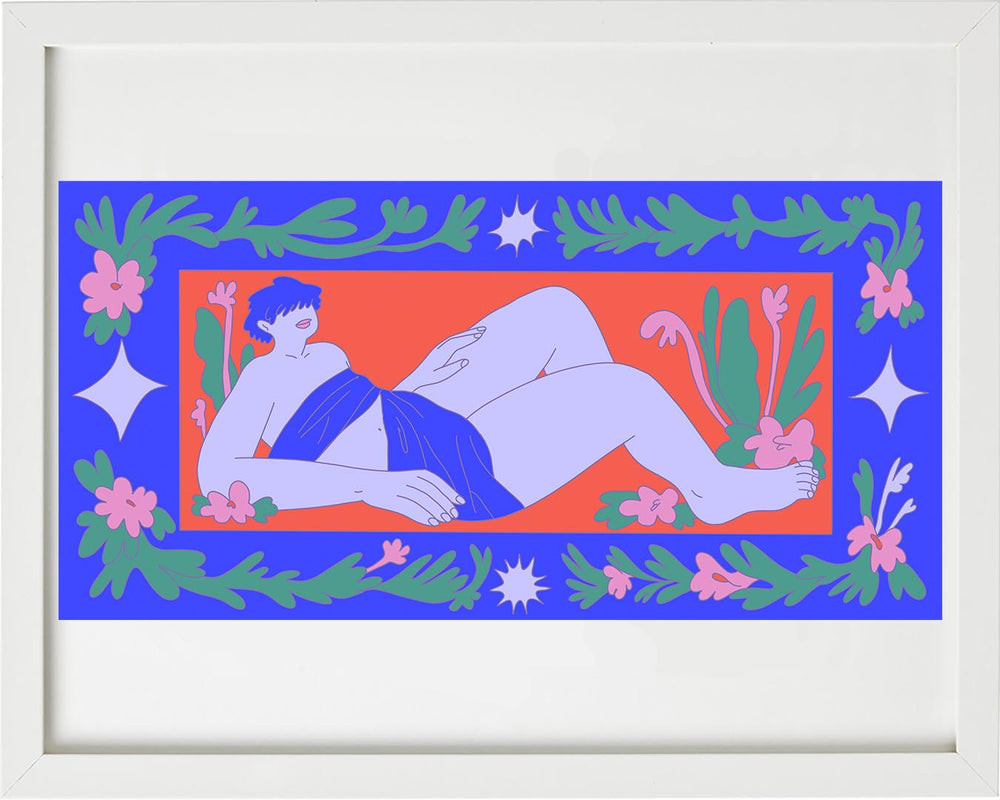
The Bather | June 2023
"I am an artist based in Oakland, California, with a BFA from University of California, Berkeley. Plants and our natural world are one of my biggest inspirations and sources for grounding my creativity. I find in them endless wisdom, care, gentleness and strength. I enjoy creating plant-filled fantasy worlds where my characters can live peacefully."

"My images are playful, intuitive, and surreal. My artistic background has an emphasis in printmaking, while my work from the past several years has celebrated a return to my core as a mark maker, mainly via medium to large-scale drawings on paper using multiple mediums. I want my images to encourage people to value their sense of wonder and the power behind it, as a means for finding hope within our often overwhelming world."
Anjelica was the winner of our 2023 Open Call for Submissions! We are so thrilled to have made The Bather together :)

Check out Anjelica's Playlist on the Plunge Spotify ~
Find more about Anjelica here:
Anjelica's website
Anjelica's Instagram
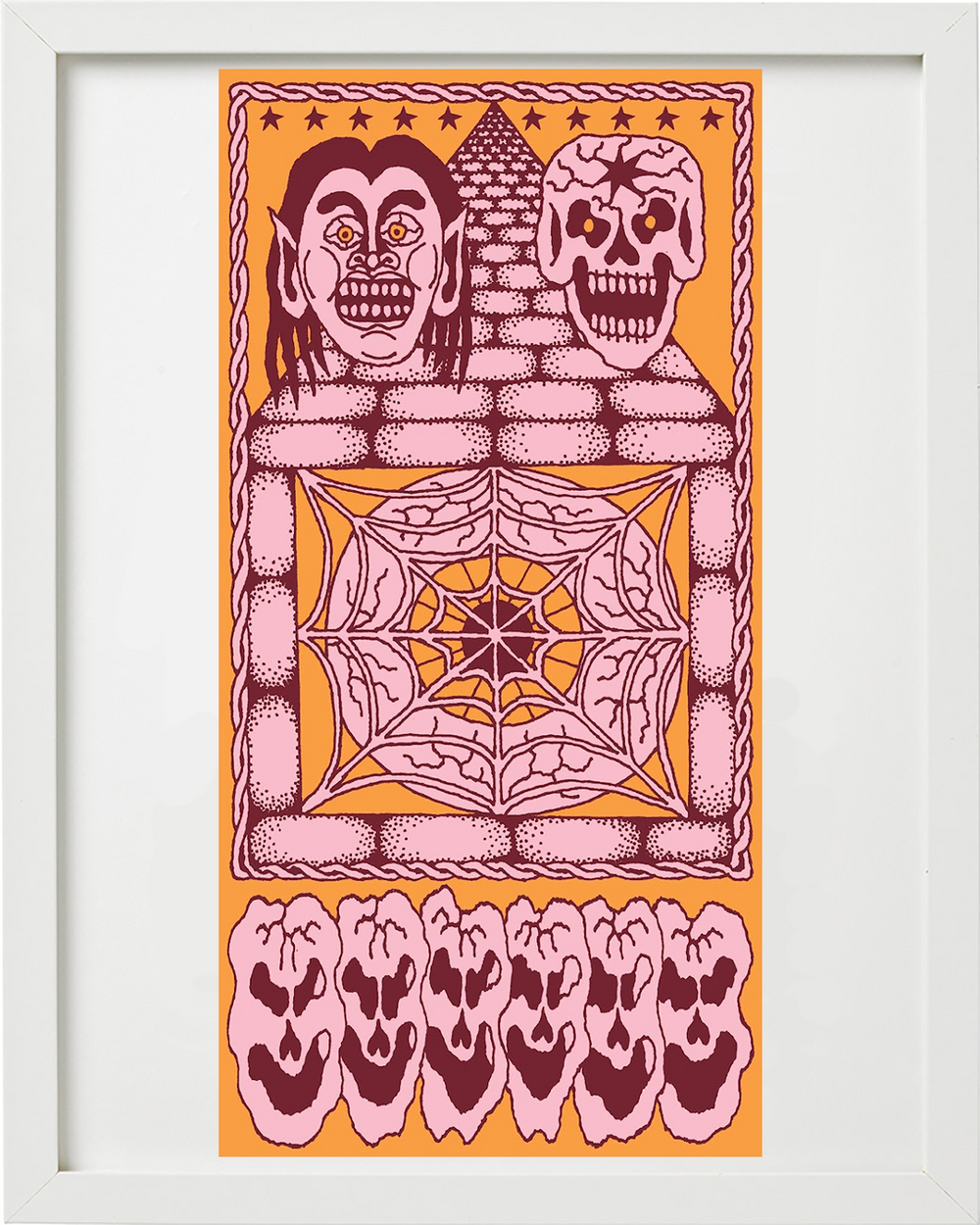
Eye Web | July 2023
Trey Flanigan is an artist and musician living in San Francisco known for his sinister and often psychedelic illustrations. His style has evolved over the years through the process of creating fliers, shirt designs, and album artwork for indie and punk bands, including his own. Although he mainly makes black and white drawings using fine point sharpie, he has also shown his paintings and colored pencil drawings in a handful of DIY art shows in California over the years.
Find more about Trey here:

Rainbow Tunnel | August 2023
Lance Rivers’ art practice emphasizes the idea, above all others, of the local as monumental. No aspect of the processes that make a city function escapes him, and the attention he gives to the beauty of simple industrial compositions shows an authentic love for the Bay Area. "My work is about landscape, architecture, bridges, tunnels, and transportation. I am inspired by BART, MUNI buses, streetcars, and trains. I like nature, too. These things are interesting to me," Rivers explains.
Rivers was nominated for SFMOMA’s prestigious SECA Art Award in 2016 and his work has been exhibited internationally, including in prominent exhibitions such as the People's Biennial at Museum of Contemporary Art, in Detroit, Michigan, in 2014; and Create, a traveling exhibition that first opened at UC Berkeley Art Museum and Pacific Film Archive in 2011. He is a featured artist in the upcoming book, Art is Art, published by Chronicle Books, releasing November 2023.
Creativity Explored is a studio-based collective in San Francisco that partners with developmentally disabled artists to celebrate and nurture the creative potential in all of us. ![]()



"Creativity Explored serves 130 artists and has facilitated the careers of hundreds [more]. Creativity Explored artists have seen their work exhibited in museums, galleries, and art fairs in over 14 countries and have earned over $2 million from their art.
Their life-changing programs continue to open doors of inclusion to center the personhood and creative vision of people with developmental disabilities. Most importantly, Creativity Explored is a source of community, empowerment and dignity." (Creativity Explored website)








![]() Q&A with Lance Rivers
Q&A with Lance Rivers
What draws you to urban architecture and transportation?
It interests me and I enjoy looking at it. I love architecture, bridges, tunnels, and transportation. I am inspired by BART, MUNI buses, streetcars, and trains.
Do you have a favorite place to draw?
Tunnels and bridges. Right now I really like the Great Belt bridge in Denmark.
What are your favorite secret urban hiking spots and viewpoints? The best spot for a picnic?
Sutro Towers and Mount Davidson are two of my favorite viewpoints in the city.
Are there any cities besides San Francisco that you would like to draw?
I also like to draw San Jose and Oakland.
What are your other interests and hobbies besides art/favorite things to do? Favorite music?
Nature and architecture - that's all.
Where will you use your blanket?
I am excited to use my blanket! I will probably put it on my couch.

Find More about Lance:
Lance Rivers' profile on Creativity Explored
Shop Lance's available artwork
Lance Rivers on Artsy
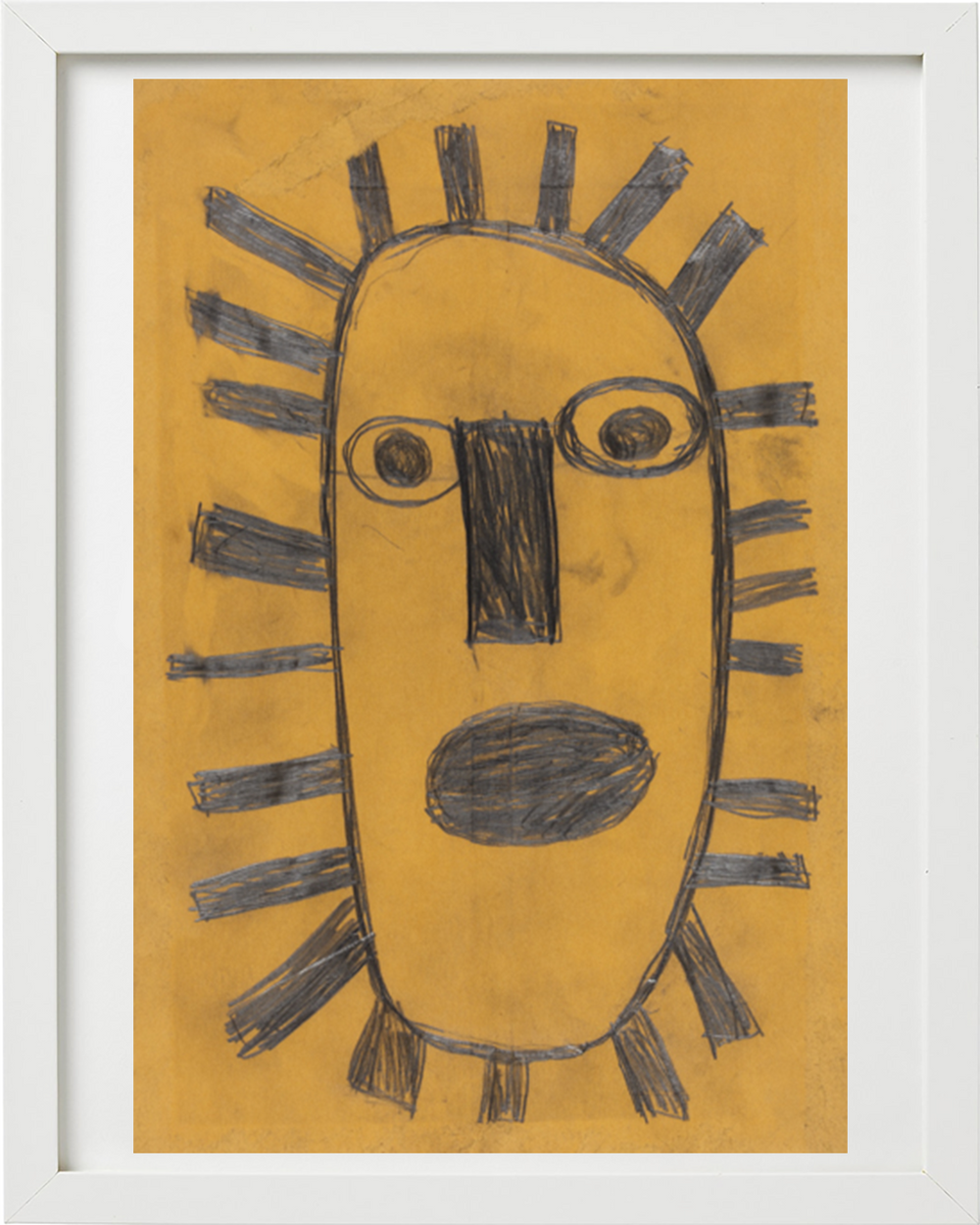

African Beauty | August 2023
Vincent Jackson is one of the most prolific and longest practicing artists at Creativity Explored. Jackson is known for his large-scale figurative oil pastels. His thick, defining lines break the human form into geometric shapes filled with a heavy impasto of layered colors arranged with Jackson’s masterful sense of harmony. The resulting mask-like works can be viewed as a contemporary renewal of traditional African and Oceanic folk art imagery. "My faces are my way of telling a story rather than writing," he remarks.
Jackson's work has been exhibited internationally. Additionally, Jackson’s work was chosen to adorn the third series of artisanal chocolates from Recchiuti Confections and was selected by CB2 for a number of limited-edition products including a tote, rug, pillow and ceramic vase. He is also a featured artist in the upcoming book, Art is Art, published by Chronicle Books, releasing November 2023, and his artwork is on the cover!
"I didn't get this “renowned artist" thing from nothing. The public already knows what I bring to the table. I bring excellence. I bring joy to the people. It's not about what you know, it's about how you carry yourself. I’m trying to keep my art career going."
Creativity Explored is a studio-based collective in San Francisco that partners with developmentally disabled artists to celebrate and nurture the creative potential in all of us.



"Creativity Explored serves 130 artists and has facilitated the careers of hundreds [more]. Creativity Explored artists have seen their work exhibited in museums, galleries, and art fairs in over 14 countries and have earned over $2 million from their art.
Their life-changing programs continue to open doors of inclusion to center the personhood and creative vision of people with developmental disabilities. Most importantly, Creativity Explored is a source of community, empowerment and dignity." (Creativity Explored website)







Q&A with Vincent Jackson
Where are you from? Can you tell us a little bit about yourself?
I'm Vincent Jackson. I'm from San Francisco. I grew up here, and that's it.
We noticed you’re incredibly prolific! How often are you making art?
All the time. Nothing ever stops me from doing this. I’ve been doing this for years, I've been doing this for 40 years. They know my work, they know what I stand for.
What are your other interests and hobbies besides art/favorite things to do? Favorite music?
Gospel music. I am a totally gospel person. I love to do art, I love music, I love being around fun people. Some of the teachers here [at Creativity Explored] are very interesting.
Anything you’d like to tell us about your African Beauty drawing?
If you are interested in it, you should look at the book Wonderful Blackiful People, created by artist collective, Blackiful. Those drawings were wonderful, it was a wonderful project. The book was well done. It was worth it for us to do. I want the Blackiful group to do more.
We noticed you’ve worked with textiles quite a bit. What do you enjoy about making wearable art?
Wearable art is fun, and people have bought the things I've made. I think when I finish a suit, a dress, it's all about simplicity. I know how to quilt. That's why I do it. This is one thing about Victor Molina [CE teaching artist], he lets us do what we want, lets us talk to the fabric. Next time, I want to challenge myself to make children’s clothes. Fabric is art. It's not what you wear, it's the character of it. It's just something I wanna do. Maybe I want someone to push me to have my own
boutique clothing shop. Something that women or men can really like. Maybe I would like to make a pillow.

Find more about Vincent:
Vincent Jackson on the Creativity Explored blog
Shop Vincent's available artwork
Vincent's interview with Summertime Gallery
Vincent on Artsy
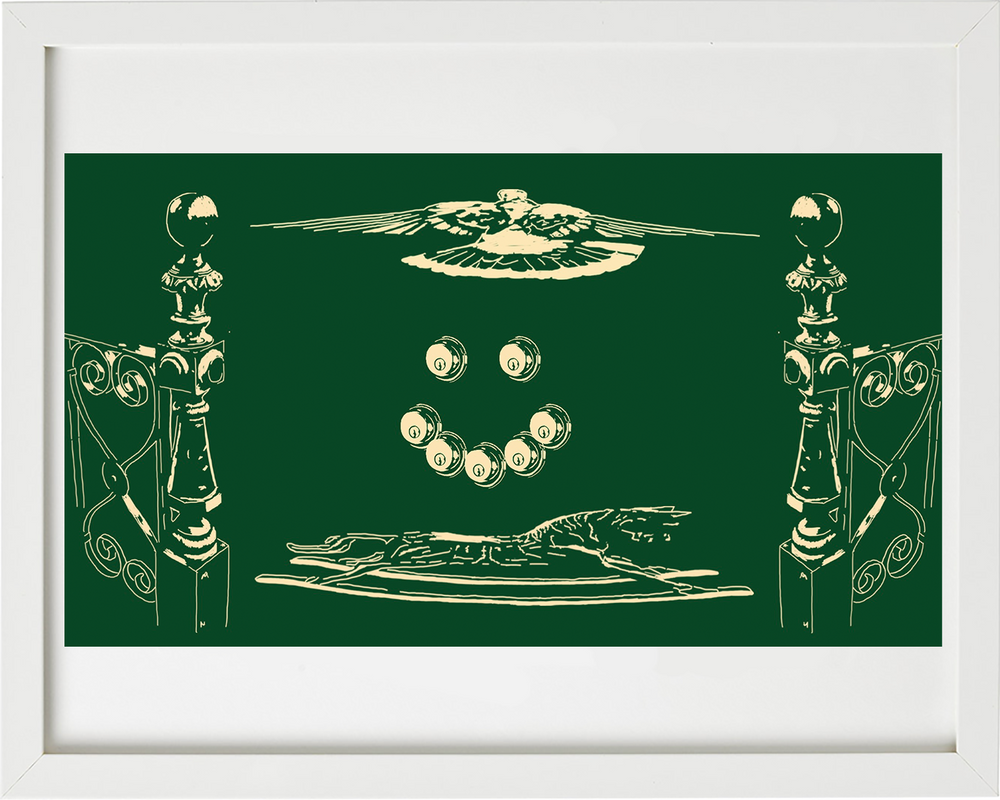
 Open Gates | July 2024
Open Gates | July 2024

Morgan Corbitt (b. 1997) makes collage-style oil paintings that
straddle the lines between realism and representation. Using
photographs from her camera roll as a reference, she distorts and
multiplies these images, re-contextualizing them in the process. Her
work explores our relationship to the object-world. She received a
B.A. in Studio Art from San Francisco State. Recent solo exhibitions
have taken place with Good Mother Gallery (2021) and Adobe Books
(2022). Corbitt lives and works in San Francisco.

Find more about Morgan:
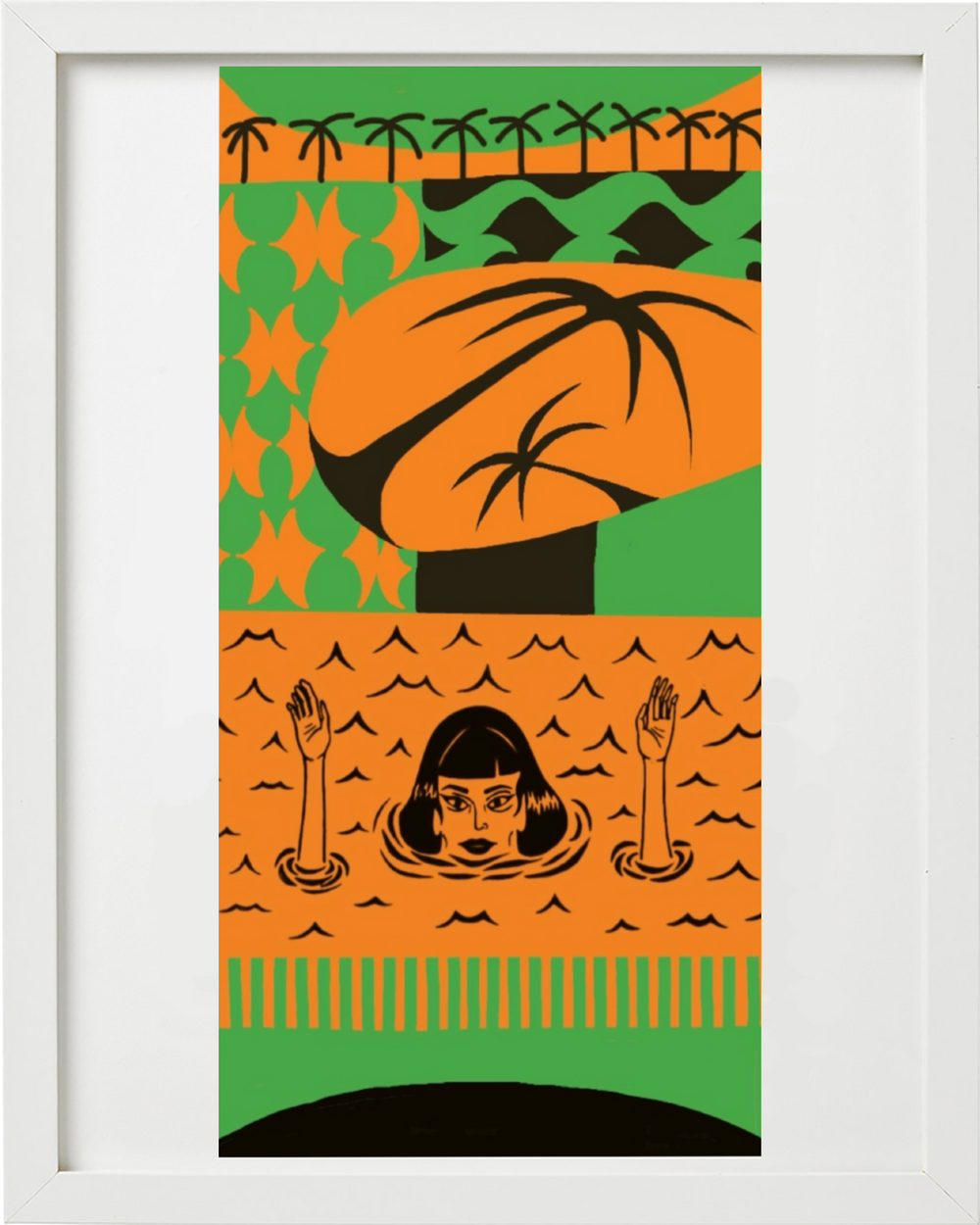

Stay Up | August 2024
Bailey Anders is an artist based in Oakland California. Whether it’s painting, sewing bags, taking photos, or making music, she enjoys the simple concepts of making and creating. Bailey's work reflects how much she enjoys life and the memories that come along with it ~ nostalgia and memory are big influences in her work. Various notions and feelings are what she is focused on portraying... It could mean something or nothing at all; it’s about having fun and distracting herself from reality. Kinda like surfing, art makes her happy.
"This towel is about not giving up and trying to keep your head above water when times are rough. Palm trees to ease the mind and orange and green for the fun times to come."
Bailey has exhibited work in group shows at several esteemed Bay Area galleries such as Park Life, Hashimoto Contemporary, Et. Al, Good Mother, and others. Her first solo exhibition took place at Adobe Books in 2023.
Find more about Bailey:
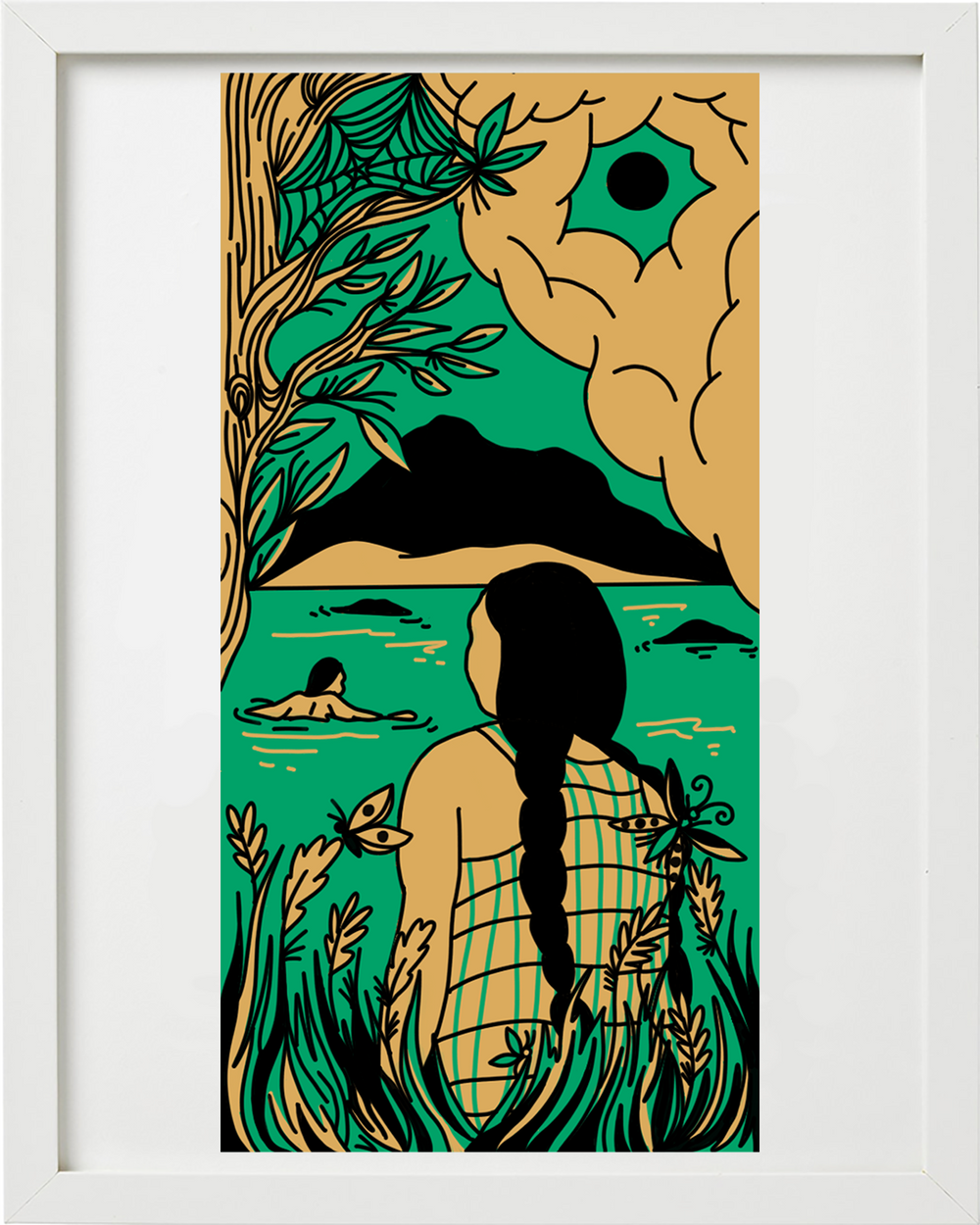

Mountain Shadow Dip | August 2024
"When I am drawn to the shoreline of the East Bay, Mt. Tamalpais looms in the distance. This imagery recalls many swimming dreams I've had, faces turned away – the location blurring the lines of many swimming holes and beach days morphing into one dreamy location." ~ Ocean
Ocean Escalanti (She/Her) is an indigenous visual artist and writer currently residing in Oakland, CA. She is a printmaker, monitoring at Max's Garage Press and also an artist facilitator at NIAD Art Center in Richmond, CA. Ocean has exhibited, presented or facilitated workshops at BAMPFA, Contemporary Jewish Museum, SFMOMA, and the San Francisco Public Library. She was a recent artist in residence at In Cahoots Residency in Petaluma.
Find more about Ocean:
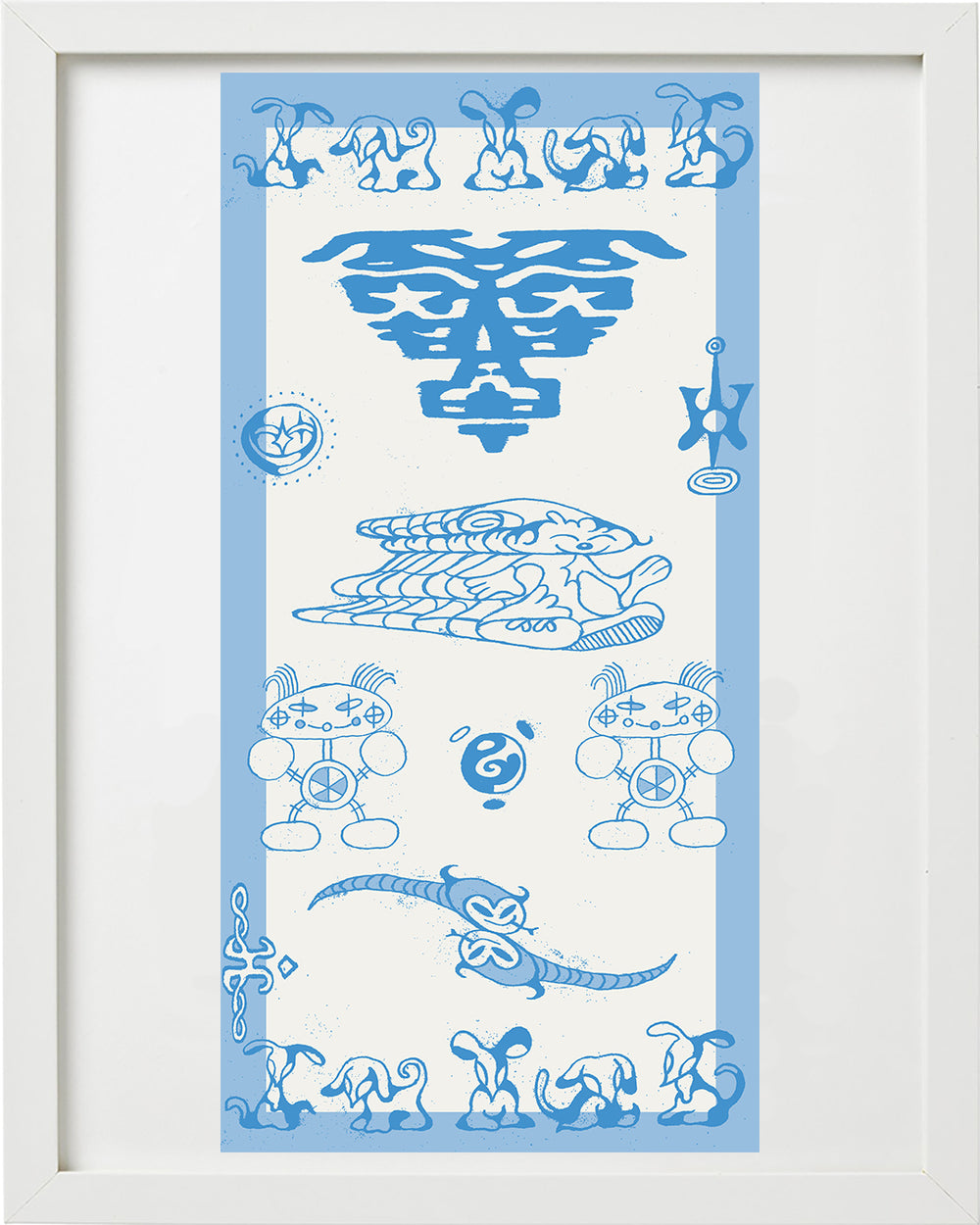
Subzero Sauna | October 2024
"The towel was Inspired by a day at Rockaway beach running in the sand, hanging with friends, being a little dirty and enjoying the sun. The mice are based off of a metal figure that lives on my desk."
Matthew Carignan is an artist from Maryland. His work is colorful, playful, and often has undertones of darkness and mischief. His characters and motifs are reminiscent of childhood drawings – deriving inspiration from 90s and early 2000s video game and skateboard art. He explores the dimensions of these worlds and characters more deeply through tattooing, animation, 3D rendering, and jewelry. He now lives and works in Queens, NY.
Find more of Matt's work:
Matt's Instagram
Matt on Substack
His Online Shop
A recent collab with Brain Dead
Matt's feature in Its Nice That
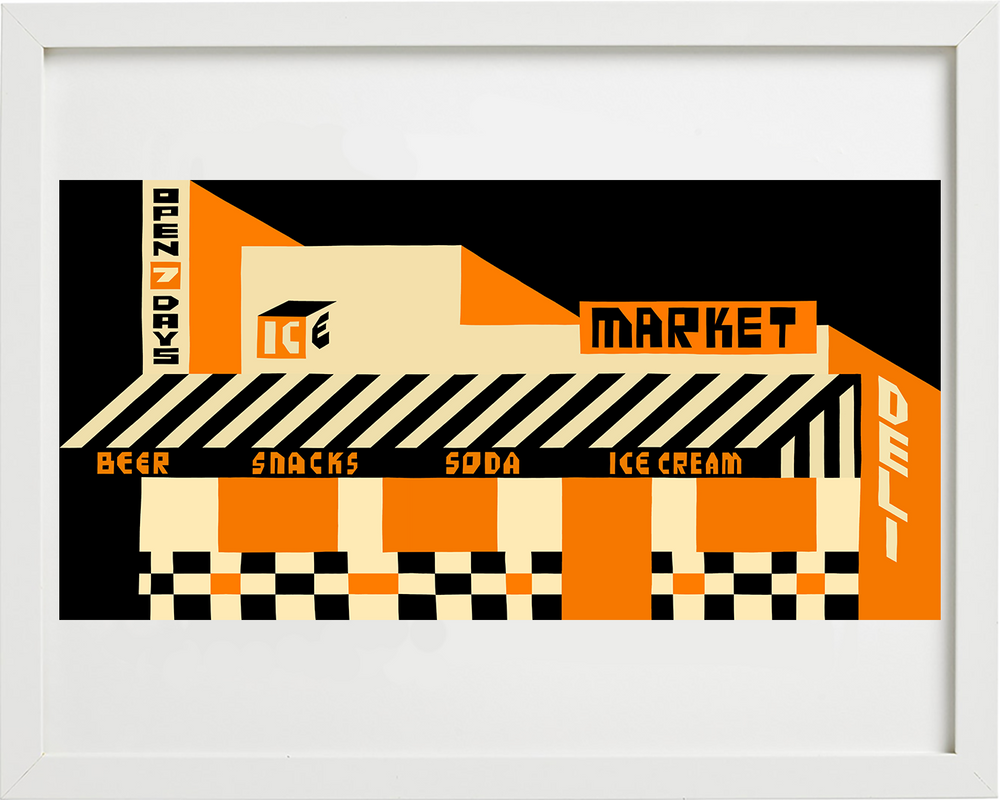

Home of the Famous Turkey Sandwich | December 2024
Jeffrey Sincich (b. 1990 Belleair, FL, he/him) is an artist living and working in San Francisco, CA.
"I am inspired by the built landscape and how we interact with it. I am inspired by handmade signage, vernacular architecture, storefronts and other human made alterations of a place. Signs offering repair work, storefronts selling everyday products and architecture that has been altered in a unique way offer an insight into how our world works. I believe these things are worth celebrating, as they are what create the unique fabric of the places that we live. I use quilting and found objects in my work. Like a handmade quilt, elements of the urban environment can offer people a sense of place, belonging and safety. They both have traces of the hand that created them and can evolve in unique ways. They can be passed down, altered, mended or repurposed, displayed or discarded. Each is a representation of their physical surroundings and community."

Jeffrey recently co-curated Friends of Friends, a group show with Josh Stover at Pacifica Collective in Tokyo, Japan. Earlier in 2024, he had a fantastic two-person exhibition, Everybody Knows This is Someplace, with Rose D’Amato at Gallery 16. Just this same year he has also exhibited in the Bay Area, Los Angeles, Paris, Dallas, and participated in the 2024 Artist Residency at Nick’s Cove, Tomales Bay. He’s surely one to watch as his art career has taken flight since his move to San Francisco.
We are excited to have collaborated with Jeffrey and bring you his limited-edition towel, Home of the Famous Turkey Sandwich :)
Find more about Jeffrey:
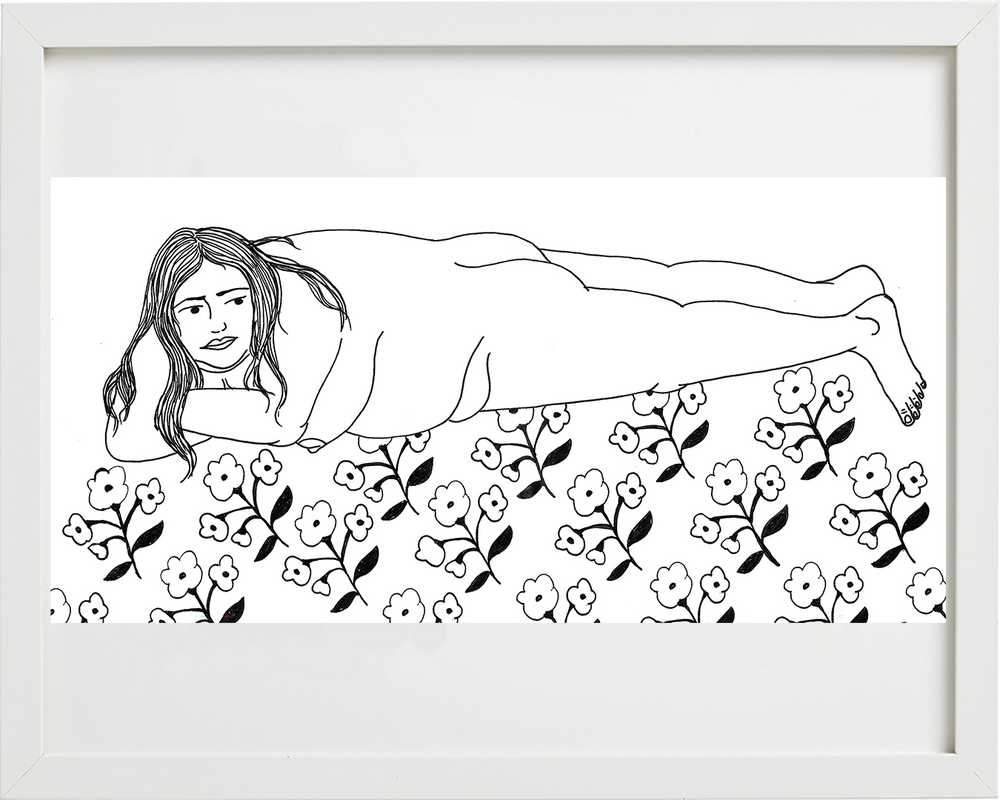

Lost in Solitude | December 2024
"My inspiration for this piece was the feeling of being in your own bed of roses—a space where comfort and beauty thrives, yet there’s an ever-present sense of awareness of what surrounds you." ~ Gina M. Contreras
Born in Fresno, California, Gina M. Contreras uses drawing and painting to explore the complexities of traditional and cultural standards. Through self-portraits, she navigates the intersection of her conventional Chicana upbringing and her appreciation for modern lowbrow culture, focusing on themes of self-awareness and body acceptance. In 2008, she earned her BFA from the San Francisco Art Institute. Her work has been exhibited nationally and internationally, and she currently lives and works in San Francisco.

Find more about Gina:
Amor Secreto at Hashimoto Contemporary
Juxtapoz Interview
Instagram
Website
Artsy
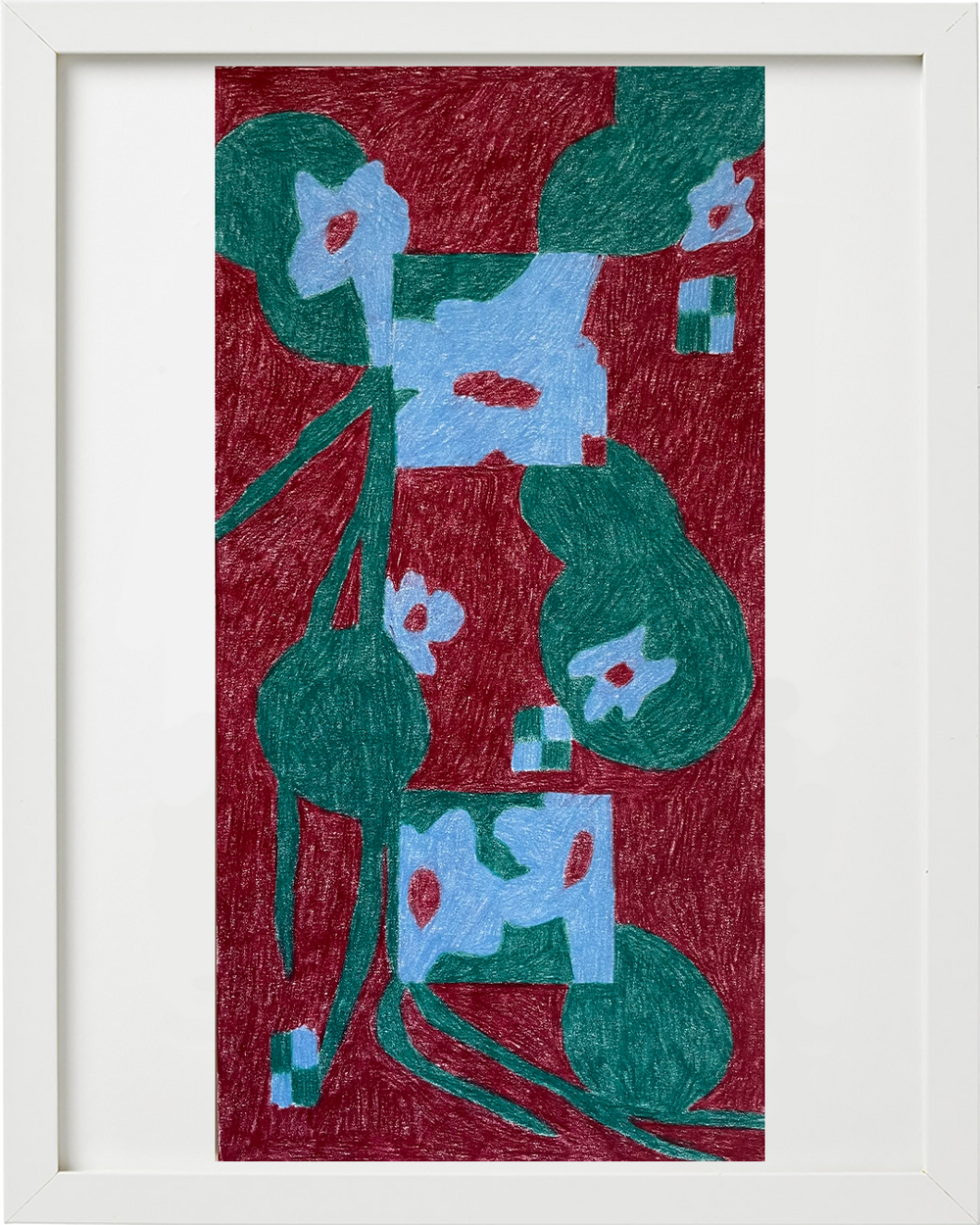
 Forget-Me-Not | March 2025
Forget-Me-Not | March 2025
“I am an artist living on the central coast of California. In this rural & quiet area I find plenty of time to make drawings of flowers and other plants that inspire me. I use colored pencil on paper and am currently focused on flowers…
I combine elements of figurative and abstract together. My aim is to show a clear contrast between the two perspectives in one drawing. I always start with a flower in mind but I never know where it will go from there.” ~ Elle Willson



After carefully reviewing tons of artwork submissions from an incredible assortment of artists, polling our small team and close associates, and agonizing over just one selection, it is with great pleasure that we welcome the winner of Plunge's 2024 Open Call into our Plunge lineup… Elle Willson!
Her work was a standout favorite ~ We loved Elle’s contemplative perspective of natural landscapes large and small, rendered in delicate, vibrating colored pencil.

A lovely quote from Cruise Control gallery in Cambria on Elle’s recent solo exhibition there: “The colored pencil on paper works from this show are reductive in only the most complimentary of ways. Her works are an exercise in the art of appreciation and a tribute to the devout nature of actionable expressions taken over time. These iterations on a theme are carried not to any logical conclusion, but a repeated meditation of strokes and markings with a reverence for nature’s little colorful gifts.”

Find more about Elle:
Elle's Instagram
Elle's Website
Elle at Cruise Control
Elle will be featured in Plunge Rag Volume 5, coming Spring 2025!

Almas Gemelas | December 2025
Plunge: Introduce yourself a little!
Nayeli: Helloo I’m Nayeli Perez, I do handpoke tattoos at my home studio in San Diego. I also love oil painting, sewing, illustration.What was your inspiration for this towel?
I [was] ultimately inspired by Hilma af Klint. Her work reminds me of the whimsy and sweetness of connecting, interlacing, and spiraling. I like to think swans represent a caring protection and lifelong love.How long have you been making art? How often do you make art?
I love saying that I never stopped making art, from school projects to handmade gifts — I’ve always had a need to make things. I try to create as often as possible; most of the time I get ideas that feel like a lightening strike and if I don’t or can’t make it in that moment it feels like a fire under my feet.
How did you arrive at your style?
I think over time I look for patterns in what I’m interested in, and there's patterns or motifs that feel more comforting (filigree, swirls, lettering), and in that practice a style comes to be. But at the same time I feel like there's a ton of exploring and experimenting that I need to do before feeling like I have a style.How does making art make you feel?
Making art gives me the same feeling as making a wish on a dandelion... I get sent to a pleasant limbo, not looking for the next step or decision -- instead you just float towards it.What inspires you?
Everything! Cracks in the sidewalk, bootleg iconography, clip art archives.Favorite place to swim or use a towel?
I love going to D Street beach in Encinitas or No Surf by Sunset Cliffs or picnicking at Bird Park.
Find more of Nayeli's work here:
Nayeli's Instagram
Print Shop
Book a tattoo
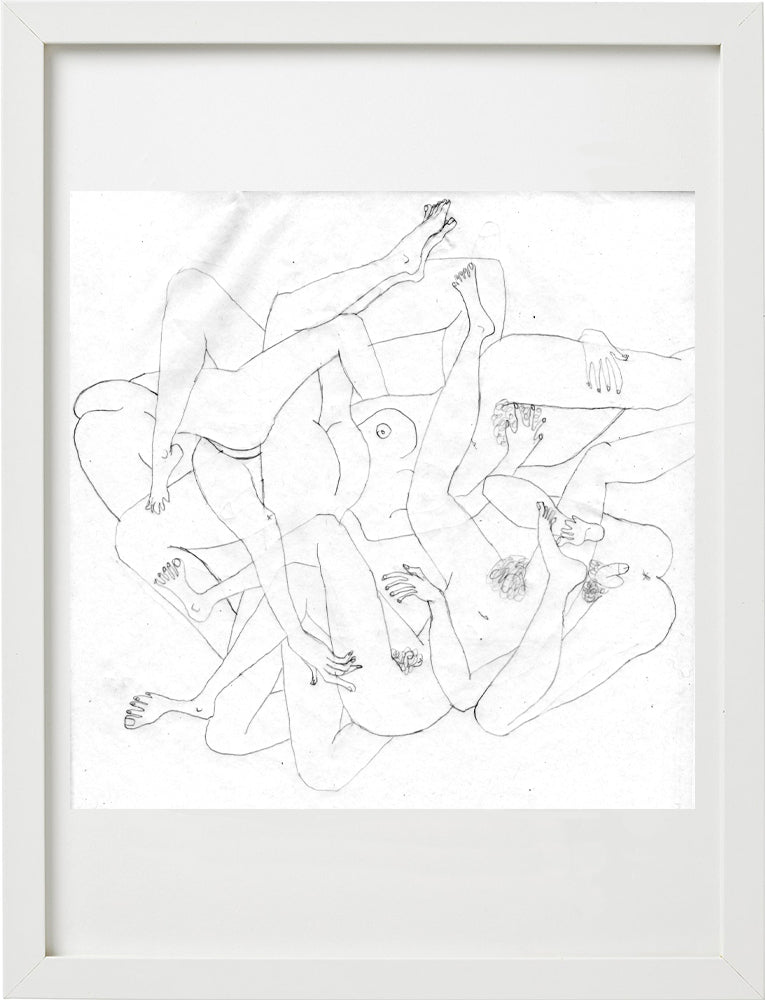
Nude Beach | July 2020
Jessica Thornton Murphy is based in San Francisco, California. She started Plunge in May 2020 as a way to celebrate the work of the many talented rising artists in her community and beyond.
Find more of Jess's work:
Jess's WebsiteJess's Instagram
Hand Towel ~ September 2021
Butt Stuff ~ January 2022
PARTNERSHIPS
- Headlands Center for the Arts
- Creativity Explored
- JB Blunk Estate
- Heath Ceramics
- Carleen
- Chandran Gallery
- Museum of Contemporary Art, Los Angeles
COLLABORATORS
- Natalie Vall-Freed
- Sophie Templin
- Tom Gilpatrick
- Penelope Anstruther
- Macayli Hausmann
- Sean Curtice
- Rachel Turner
- Tiny Splendor
- Forthrite Printing
- Cass Cleave
- Jet Caputo
- Withitgirls
- Poppy Press
- Janie Korn
- Interzone Studio
- Jessie Turner
- Sadie Creative
- Sarah Sprints
- Shaine Drake
- Pala Ceramics
- Willy Shoals
- Summertime Gallery
- Anya Zimmerman-Smith
- Paige Valentine
- Grace Corbitt
- Spiral Wick

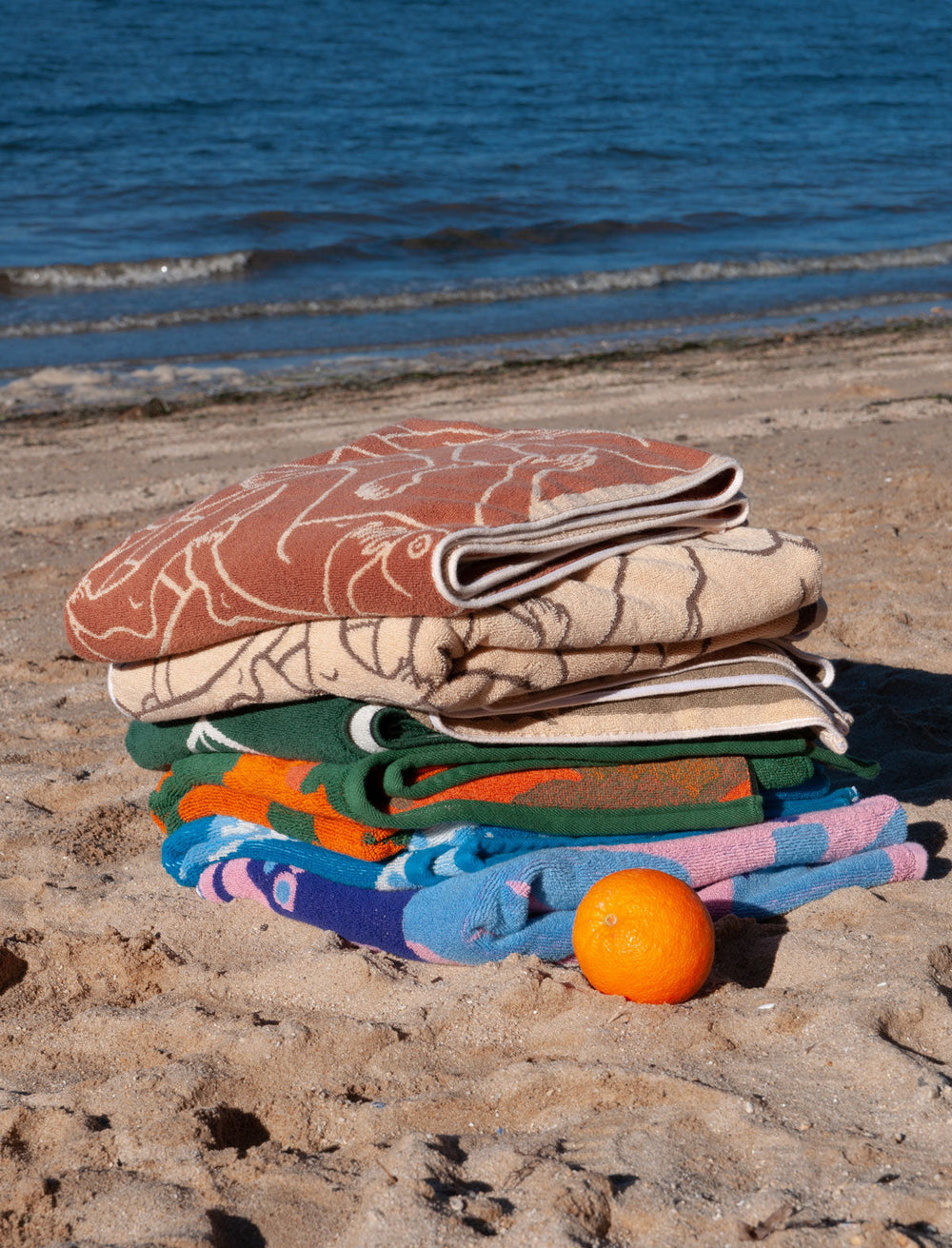
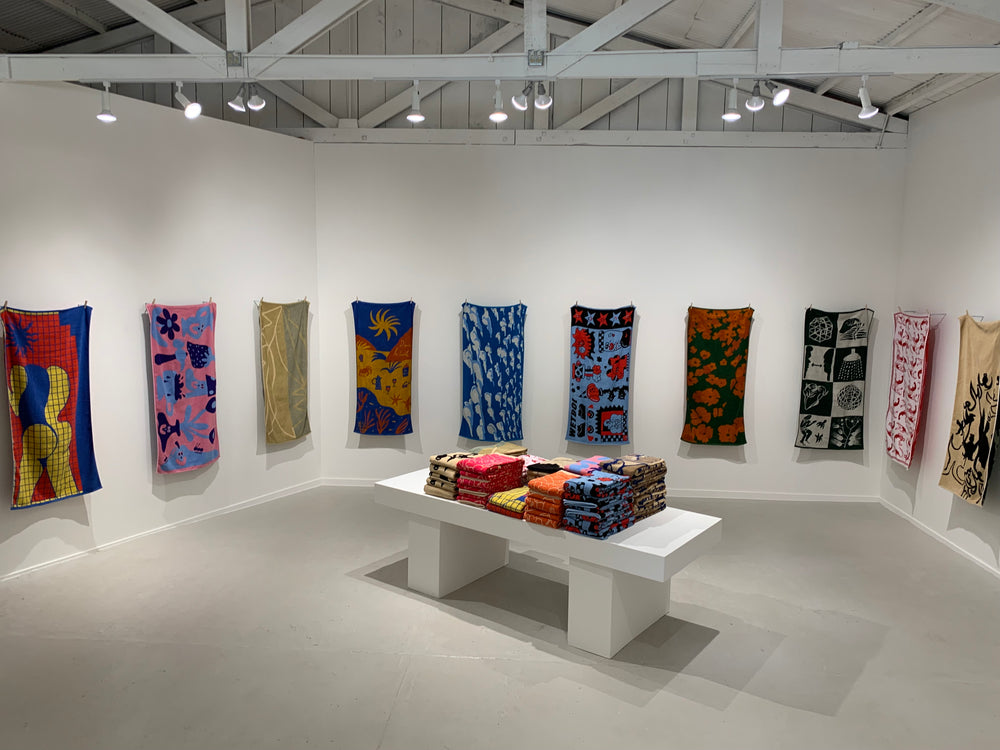




Friendly Assembly | August 2020
Mark Ochinero is a Bay Area-born illustrator and photographer currently based in San Francisco. His work captures the humor and irony of everyday life and objects: whether he's using a camera, gel pens, crayons, or ceramics, Mark always offers a playful change of perspective.
Find more of Mark's work:
Mark's InstagramMark at Legion Projects


Sun Buns | June 2020
Tyler Cross is an artist based in Oakland, California. Although he is best known for the ceramic sculpture he makes in collaboration with his boyfriend, Kyle Lypka, Tyler maintains a focused solo practice of sculpture, painting, and drawing which poetically explores his fascination with the complicated relationship between art and functionality. Using a private language of color and shapes, echoes of which dance fluidly from his flat to three-dimensional works, Tyler constructs paradoxical artifacts and the abstracted landscapes from where they came.
Find more of Tyler's work:


Wavy Blades | September 2020
Rachel Kaye is an artist based in San Francisco, California. Her love of fashion and textiles has informed a meditative study in collage, pattern, and movement where her paintings come to life in vibrant melodies of color and shapes.




A conversation with Rachel from Plunge Rag Vol. 2:
PLUNGE: I remember taking your collage class at Case for Making ages ago. Do you still work in collage at all?
RACHEL: Every now and then. For a long time collage was always this thing for me when I felt I was stuck in painting or drawing. It’s like cooking in a way, it is immediate, instant gratification. I could make these quick loose things and then they would help me. For a while I would make paintings off of them, then they just became this way to keep myself active.
What is your daily practice like?
I’m probably in [the studio] on average 30 hours a week. Then I feel like things ramp up with a show. I used to be a night worker and I’m not so much anymore because I’m just tired from having kids and I want to get a good night’s sleep, but that being said when I have deadlines I’ll come here at night too and get extra hours in. Something that switched in the last couple years is the paintings and drawings clicked together. I feel like they were always two separate bodies of work and now I’ll make a lot of drawings that then I can scale up for paintings, which feels really good. I feel I have a line of process to get to the paintings.
So are you finding that you’re doing more painting than you ever have?
When I had that show at Part 2 [Gallery], I was definitely painting a lot and then Hawaii kind put the brakes on that, which was unfortunate because I had all this momentum.
Is that just because you were limited by your materials?
Yes. I just couldn’t bring canvas, I didn’t have a big enough space, painting is so messy… and just the functionality of making drawings. But I did make bigger drawings though which was cool in the sense of the scale being bumped up.
Do you find that your practice changes when you’re moving around a lot or traveling?
It just always goes back to drawing which is kind of my [default] and I feel like in some ways the drawing’s always stronger because I never stop. I love drawing but it is frustrating as a painter when I do want to push the paintings and I have to stop and go.
Do you think that’s why the paintings and drawing have meshed?
Maybe. I think it’s more when I started working in bigger blocks of color. For 10 years now I’ve been making these colored pencil drawings and they were so heavily patterned in the beginning, and then all the pattern slowly kept getting whittled out, and suddenly now the forms are more important, which makes painting more accessible for me. Painting a heavily patterned painting felt more laborious than gratifying, so I’d make one or two and be done. Now I see endless ideas in the paintings. I guess it took 10 years for the two to click for me.
I’ve noticed a lot of movement and emotion in your work and it often feels very lyrical. There also seems to be some allusion to music in your show titles, like Loop Melody and Song in a Room. Do you listen to music while you work?
I go through phases of listening to a lot of music and then for a while, like during the last election, I listened to a lot of the news and then I completely shut out the news and I’ve been listening to a lot of books. I guess when I look at the pieces as a whole, that’s when I start to think about the rhythm between them and the repetition of shapes and the movement that you see that’s the thread between them.
Can you talk about where some of your shapes and forms come from?
Definitely the environment… like for [Drawings from the Pacific at Sarah Shepard Gallery] I was in Hawaii -- I did all the work there so I was alway thinking about the place. Literally you look out the window and it’s just an incredible landscape, really cinematic. I usually make quick sketches, then when I find something I like, I start to really slow down and play and work out compositions before I get a drawing going. So there it was much more about natural environments, but before I was in Hawaii I would often find shapes in debris, like when I was working in the garden, or my kids cutting up stuff… it was really domestic for lack of a better word. [I was] always home and so that’s how far I saw things, and then [in Hawaii] I would go on a hike and I would see things. I sometimes photograph things but they never turn out how I like and I prefer the memory of remembering something, so I’ll try and capture a shape and then play around with it and it’s a loose interpretation of that memory.
There’s a nice inner-world-versus-outer-world conversation, and then you’re finding these really beautiful moments, studying them, and then working them out in your painting. That’s really lovely. In thinking back on your career as an artist, are there moments that you feel were really pivotal?
The JB Blunk Residency was probably the most pivotal, even though it was simultaneously a really hard time. It’s something that I think a lot about because my work did a major change around that time. When we got there, we’d landed in Inverness [California] from New York and I think it was really pivotal in the practice of just being an artist. We had a stipend, so I wasn’t hustling. Also, I grew up in the suburbs and always lived in the city, so being in a remote place changed me. I never knew how much I would love living tucked away in nature. But I didn’t really make anything big when I was there… major growing pains. Leaving New York coincided with my work doing a 180, so I didn’t know what I was doing, I was trying to make paintings; they weren’t working. And in the end, the last two weeks, I started making these drawings based off of an actual pattern. I made six of them or something and I left with, “I can do something with this”. Basically, those last drawings that I made, I still see as the thread to where I am now.
So it seems like the residency shook you up in a way that allowed you to explore.
Yes. I basically went there and was like, “I’m not making that work, but I don’t know why.” It was really stressful because here I am being told I can work and I don’t know what to do. Also, being there with [Jay] who is always super prolific, he was there and ready to work, he made a boat, he made a bunch of paintings. I would pretty much be in the studio crying, “this is so hard, is it done for me?” Anytime you read anyone’s autobiography, there’s rarely a case where an artist isn’t confronted with those moments. However when you are in it, it’s hard to see how you’ll get past it.
Totally, and those moments can be really important for the work to progress. Do you ever find yourself stuck now?
I’m lucky I haven’t been stuck for a while. Honestly, strangely, the pandemic was really productive for me and I’m excited for where the work will go next.
Do you find that you’re most interested in the process of making work or the outcome or something in-between?
I think both. Painting is so much of the experience of painting in itself. There are many moments in making a painting that can feel magical and unexpected. I’m so process driven in my practice that I need those moments to feel excited in the studio. Sometimes I know a painting is done but I’m not even sure I like it. I often ask myself how do I make a painting that has that same immediacy (as the drawings), and also have the medium integrity that I want — it sounds very “beginner”. But isn’t the goal to have that feeling, like a child who makes something with such immediacy and stops with the same fierce intention. The brain’s thought isn’t leading, it’s visceral.
It seems like keeping a “beginner’s mind” is really important to many artists I’ve talked to for growth, not getting stuck in a certain way of making, and not having an ego about being at some level where you can’t move backwards to explore new things.
People who are artists can think in a different way. They don’t think in yes-or-no answers. They don’t think something’s a failure because it wasn’t done right. You constantly are failing and that’s how you get on with it. To me being in that mind-state of learning is so valuable because it’s a fucking crazy world! And there’s not just “one way”.
Can you talk about your path to first becoming an artist? Did you go to art school?
Yes, CCA for undergrad. I never went to grad school… maybe one day.
Were you always creative growing up? Was there creativity around you?
I was but I was not a good drawer. My mom was always sewing but she’s by-the-book, and my dad was always fixing things. It was very practical, utilitarian creativity. I was obsessed with dance as a kid. I danced until I was 16 and then when I stopped, I was like, where do I put my energy? I had a really good art teacher in high school. I always liked those classes, but there’s those kids that have that innate gift of perfectly rendering whatever it is they’re looking at and I wanted to do that, so I started taking classes at community college. I’d go to the local art center and do all the figure drawing sessions, I was really formal in my training. I wanted to be able to master the figure and that’s how it all started.
Do you feel like you got what you wanted out of art school?
I think so. Some of my closest friends are people from the CCA, and I think so much of being an artist is finding community of people to support you because it’s such a lonely field.
How did you make the leap into a career as an artist after school?
I just always had a side hustle. It was always like, how can I make good money and not work full-time so I can be working in the studio?
Even then, were you always making art?
Yeah. It would ebb and flow. I’d have really prolific times and then not-so-prolific times. In the last three or four years I’ve just been really head-down and consistently making work.
Do you ever find it difficult to tell people what you do?
Yes. Something that drives me crazy is people will be like, “How did you get all this work done?” It’s a job. I work. So much about motherhood gets tangled into that too, which if I had a normal job, no one would question.
It’s so interesting because at the same time, being an artist is very glorified somehow.
There was a really good quote which I don’t know verbatim, I think it was something someone said to Picasso or something: be a freak in your studio, and just live your normal life… Which resonates because my life looks conventional in marriage and home life or whatever. But it’s not, because we’re both artists and are working for ourselves and making money… I could look at paintings all day. Painting is like… you start with nothing. It’s a complete illusion of the world. To me nothing is more interesting than making something out of nothing. I’m a painter’s painter in that way. There’s so much magic there and there’s a reason it’s still being made — because it’s endlessly fascinating for the maker. Maybe the work is nothing new in the history of painting and maybe it is, but it’s not about that. Sometimes the most interesting stuff happens just when you’re making the work, it’s not always when it’s a finished thing.
How does making art make you feel?
I mean, it makes me feel like everything. Some days, it’s really good and some days I’m like, “What am I doing?” Sometimes things feel really fast and then things feel a little slow. A lot of times drawing is really calming for me, grounding and centering. Yes sometimes, it feels like everything…
☺
SINCE THIS CONVERSATION RACHEL HAS COMPLETED A MURAL FOR GOOGLE, HER LARGEST TO DATE. IT’S 32 FEET TALL AND WRAPS AROUND THE EXTERIOR OF AN ELEVATOR SHAFT. SHE AND HER FAMILY ARE HEADING BACK TO MOLOKAI FOR THE SUMMER AND SHE’S EXCITED TO MAKE WORK THERE AGAIN.

CHECK OUT RACHEL'S PLAYLIST ON THE PLUNGE SPOTIFY PAGE ~
Find more of Rachel's work:
Rachel's Instagram
Rachel's Website
Rachel in Luxe Magazine


Dans le Sable | October 2020
Chelsea Wong is a painter and muralist whose work reflects a deep love of her San Francisco, California community. Celebrating diversity and color and infusing happiness and joy, Chelsea creates flourishing scenes (both real and imaginary) that share some of life's best moments.

Chelsea has infectious, positive energy and it makes you want to hang out with her forever. We chat about how she shares her studio with a dear friend named Jared Silbert who does graphic design and painting.



Q & A With Chelsea Wong
Chelsea has infectious, positive energy and it makes you want to hang out with her forever. We chat about how she shares her studio with a dear friend named Jared Silbert who does graphic design and painting.

PLUNGE: How often are you here working?
CHELSEA: Well, it depends. For shows, like every day. If it was my choice I would be here Monday through Friday and have weekends off. Ideally I’d be here five days a week solid. When I come here I come in at like 11 and I leave at 11… It’s an all-day thing. They have a daughter, the people who own this building, and their daughter thinks I live here. All I need is a fold-out bed and I pretty much would live here.
So you’re making art full-time then?
Yeah, I work one day a week though, I’m working at Bi Rite.
At what point did you make the transition from a full-time job to a full-time art practice?
A couple years ago, something like that… 2019… because I was working full-time in tech at Craigslist. I worked there full-time forever and it was soul sucking. And then I had the offer to do [a] Facebook mural and they wouldn’t give me the time off so I was like, okay great I’ll quit. And that was that. And then my mom was like, if you don't go full-time now you’ll never know…
So you kind of just dove in?
Yeah I was like, if it doesn’t work I’ll just get another job, it’s fine. I have some job skills, I’m not gonna go broke or hungry or whatever.
So when did you come to San Francisco? You’re from Seattle, right?
Yeah, Seattle born and raised. I came here for a guy, like all good stories. I did apply to college and was like, I’ll probably get in to CCA. So I moved here without knowing and I got accepted… So I moved here in 2007.
Did you get what you wanted out of art school and does it inform your practice now?
That’s such a good question. I do think the answer to it is yes. I feel like I should probably be considered an art school success story, but even to this day I still don’t know if I think people should go to art school and pay a lot of money for it. I’m very torn on that. A lot of people, you can just tell that they’re not going to be successful within art afterwards… you just know. And then for me I do feel like I’m an exception, which is sad, but I did get what I wanted out of art school because right now I’m living my dream. I don’t feel like that would have been possible if I hadn’t gone to art school and I don’t really know if art school prepared me for life after. But I don’t regret it at all; I loved every minute of it. I do think the amount of loans people take out to go to art school… it’s insane. Honestly I had a lot of regrets after I went to art school and I wondered what life would have been like if I had just become a marketing person, this or that.
What do you think was the key to making it work for you? Why do you think you were successful when others weren’t?
Well… I always tell people: never quit making art. I worked at a storage facility for a long time, like in a trailer, and I was still making art during that time, I made art when I was traveling, I made art when I was working in retail, I made art when I was working at Craigslist. The ball was still always rolling even when I was working full-time.
Do you ever find yourself in a creative funk or block?
A little bit, yeah. Right now, actually. After a show, always… I worked 24/7 for this show in New York. I had to say no to a lot of stuff, I worked so hard, didn’t have any days off, coming home at midnight or 1 am… I do feel a little bit sad after shows like that because I have all this momentum going…
And then it just stops?
Yeah, and even though the show is pretty much sold out it still feels weird to me. I have to find my rhythm again. I like to be busy.
How do you work through those moments?
I just start painting.
So you just force yourself to keep going?
Yeah, I have to. I can get distracted very easily and procrastinate so I have to just sit down and push things out. I try to be very disciplined. It’s very scary for me to not be busy. So goals help me, and I write things down in my notebook, or sometimes I like to take free projects too. Not a lot, I don't like to work for free, but sometimes I like to do things that feel more like volunteering or an exchange or something. I like to have things lined up.
So you kind of answered this in other ways, but how does making art make you feel?
Oh, it feels like water, it feels like air. I get so sad when I don’t make art or I’m not in the studio. I really do want to just paint. I’m trying to figure out how to do less of my own administrative work or say no to projects. But I do like to have many things going on at once, so sometimes the administrative stuff is helpful, cause I’m like, ooh now I gotta write an email! But even when I go camping I’m like, oh I need to go to my studio…
Do you work from photographs or memory?
I have to give myself the license to not do things true-to-life because I know that realistic painting isn’t my super talent or whatever. If you’re not a good realistic painter like I’m not, why the fuck would I try to start? I want to make good things that look good, you know what I mean? Cause I'm my own best judge. I always tell people to know what you're good at and do that until you feel like you can get to the point where you can start trying out new things, challenge yourself, try to do things that are scary. I’m trying to push myself to do things that I see.

Listen to Chelsea's Playlist on the Plunge Spotify Page ~
Find more of Chelsea's work:
Chelsea's InstagramChelsea's Website
Chelsea on Its Nice That


Cumulus Humilis | November 2020
Rob Moss Wilson is an artist based in Martinez, California. His work captures the simplest things that make you feel the best: lying on your back and finding creatures in the clouds, doing cartwheels on grass, swimming in the buff under the warm sun.

"I want people to feel good about being alive"
-Rob Moss Wilson in It's Nice That



Q & A WITH ROB MOSS WILSON

When you’re making paintings do you think about the people who are going to see them?
I think I started out just making work that I would want in my house. And I think that's still happening. Even though when you fill your house with your own paintings it’s usually kinda cheesy and you have to edit sometimes... You can’t really do that.
But when your work is good and you're enjoying what you’re doing, why not live with it?
Totally. Yeah. If you’re making work that you enjoy that’s for yourself and you enjoy doing it, it’s like you’re kind of locked in. That’s actually what you want. And I think I didn’t want to broadcast any big ideas, which I think can exhaust a piece or make it tiring. I didn’t want to leave people empty; I wanted to leave people full.
Are you making art full time now?
Yeah. I mean, I’m not doing anything else so I guess that’s the answer. But I don’t spend all my time doing it.
When people ask you what you do, what do you tell them?
I say I make paintings. And then I say that I make illustration work too, just so that they can get a more rounded picture, I think. If you just tell people you make paintings they go, “What?? How do you do that?” or, “I don’t believe you”, or whatever. So if you add something else on top of it— which is true, I do fill in the gaps with illustration, like for businesses and stuff like this... It’s so passive. I don’t have a portfolio online for people to see or anything. It’s just the instagram.
What else takes up your time? Do you ever swim in the bay nearby? Can you?
I do, but nobody else does. I have some spots... between here and Port Costa there’s some spots with little access points to the water and I’ll go there are dink around a little bit and I think it’s fine. There’s also a pool downtown and I’ll do laps....

Listen to Rob's Playlist on the Plunge Spotify Page ~
Find more of Rob's work:


To All The Boys I've Loved Before... | December 2022
Christopher Gale, also known as Kidtofer, is an artist and illustrator based in Oakland, California and originally from Bangkok, Thailand. His work in ceramic, paint, and illustration unabashedly celebrates sexuality, color, and pop culture.



Left and Right photographs by Macayli Hausmann
An interview with Kidtofer from Plunge Rag Vol. 2:
WE MET HIM DURING SEPTEMBER OF 2021 IN HIS WORKSPACE AT CAMPBELL STREET STUDIOS, A SHARED CERAMICS STUDIO TUCKED INSIDE A BEAUTIFUL BRICK BUILDING IN WEST OAKLAND WHICH HE AND FELLOW ARTIST, NATALIE CASSIDY, OPENED AND CO-OPERATE. IT HAS A BIG ROLL UP DOOR, BRIGHT NATURAL LIGHT, AND IS NOW HOME TO SEVERAL CERAMICISTS. WE FOUND KIDTOFER SURROUNDED BY NEATLY ORGANIZED RACKS OF PAINTED BISQUE-WARE OBJECTS, LISTENING TO ALEX G, WEARING A CUTE OUTFIT WITH GREEN PANTS MATCHING HIS NAILS AND SINGLE EARRING.
PLUNGE: I am curious about how the pandemic has changed the way you work because you mentioned you left your day job.
KIDTOFER: I quit during the pandemic just because the amount of work at the time was really taking a toll on me mentally. I decided that in order for me to take care of my mental health (due to everything that was going on at the time) I would need to just take a little break from my job. I was hoping to take a few months off from work since I knew that money would be really tight without a salary job. However, once I started getting unemployment, it actually provided me more than enough to be able to supply myself for rent, food, etc. Instead of taking a full break I ended up just heavily working on my art during that period of time and eventually started a ceramic studio with my business partner, Natalie. Because of that, I was able to just not have any other distractions and just put all my effort into my art fully for a year.
Is it the first time you’ve ever done art full time?
Not really. I started doing illustrations freelance back in 2012. I went to school for communication arts, for broadcasting, at Bangkok University, and during our last year we had to do internships. Basically you have to do three months at any company that’s related to what you do and I was at Channel V which is the MTV of Asia. I was writing scripts about music broadcasting and I was responsible for the western music channel.
That sounds fun.
It was fun, actually. And I was like, I can do this, the pay is shit, but this is the only thing I know how to do. And then during that time I was doing drawings -- I’d been doodling my whole life -- and my colleagues would commission me. After I graduated I did that for about six months. I got a lot of money… well a lot of money for Thailand. My sister then encouraged me to move to the states just because the art scene here is way more diverse and there are just many more opportunities here for art and design jobs in general. So I moved and I had four thousand dollars and I thought that would last me at least a year.
And then you got to the Bay Area...
I was naive at the time (probably still am). I was only 22 when I first moved here. I was a couch boy for like a year. I didn’t pay rent, I was broke, broke, broke and I was like, I’m going to become an artist! And then I realized everybody else is an artist. I just didn’t have any clear goals or directions on what I wanted to do besides doing illustrations. I started applying for jobs. I applied at multiple Bluebottles, didn’t even get an interview. I applied at Whole Foods for, you know, sign art. And I was like, oh, that’s perfect, I can do some drawing. Did not get that job. And then eventually, my last resort was Thai restaurants. I was still doing some illustration work back in Thailand, some freelance stuff. Then I joined a game company and did customer support work and that’s pretty much how I started my design career. They saw that I could do art and were like, Do you want to try doing some UI/UX? And then it just moved from that.
It seems like Instagram has been helpful with getting your artwork out there. How do you feel about social media as a tool to promote yourself?
I think there’s definitely lots of pros and cons about social media. I think what’s great about it is that people get more exposure and are able to have a platform to showcase their work outside of the physical world — like galleries and art shows. however, one of the cons is that your [number] of followers suddenly became this social measurement/quality on how “amazing” this art is and we kinda use the followers and likes to validate what is good art and what is not so good. This is what really bums me out because there is so much good shit out there that deserves so much more love from people. That pretty much sums up about how I feel on a daily basis about Instagram. However, I can’t lie and say I don’t benefit from it because a lot of times I get commissioned or invited to participate in art shows through social media. I didn’t really know a lot of people when I moved here so social media was a big help leading me into the community.
You’ve been producing a lot of work since you’ve opened this new studio, as far as I can tell. Are you enjoying having and running this space?
I do enjoy running the studio with Natalie and having a community here, especially when it’s ceramics. It’s nice to be surrounded by people that have similar interests as you, but also all of us at the studio have totally different styles. It’s great to get inspired from people around you. However, running the space sometimes can be a bit stressful when it comes to managing because I don’t operate well in that type of way. I tend to work better when I’m alone in my own element doing my own thing, I guess.
Bossing your friends around is not fun.
And potentially you could destroy friendships too, if things go sideways. So when I first started Campbell Street Studios with Natalie, I was a little bit nervous about that because we have a good relationship and I didn’t wanna do anything that would jeopardize it. I wouldn’t do this if it wasn’t with Natalie, honestly. She’s probably the best person in the world, She’s a very smart, kind and such a giving person. If it wasn’t her, I’d be nervous. Also I’ve had weird dynamics with people at a community studio in the past so that part was a bit spooky. However, everybody’s been great here -- that aspect hasn’t been an issue. But sometimes I feel like I’m just here working on my stuff and then I realize later like, oh wait, rent’s due… But that’s a minor part I don’t like.
It’s so great that you’ve created a community here. Your open studio events are so fun too.
Yeah, I think it’s a good way to have social events to bring people together. In West Oakland we have so many art studios around and so many creative people, but we also have to understand where we are representing, and that this is basically gentrification in a way. So with that, what can we do with this space beyond just having the space to create? Maybe we’ll have a day where people in the neighborhood can come in and the kids could do some hand-building workshops. We also are aware that ceramics is not the most accessible art practice so it would be great to just utilize the space to introduce people in the area to this. We’re still aiming to do that at some point, but because of the safety issues with our current pandemic situation it’s just been tough to arrange things.
How did you make the jump from illustration and digital art to ceramics?
I’ve always been obsessed with claymation, like Celebrity Death Match and Gumby and all that, so as a kid I wanted to make toys. I’m always fascinated by the people who can turn objects into movement. Illustration is great and fun and obviously that’s where I started so I love that, I try adding some shading, adding little highlights here and there, but at the end of the day it’s still on a flat surface. And I think ceramics was that gateway into [not spending] a lot of time on a computer. Yes, I draw everything by hand but I color in Photoshop because it’s the fastest way I can produce work. I have a day job and I don’t have time to paint. I also feel like my painting is not as strong as my drawing line work. This is my way of creating work but I was like, how can I make that into a more 3-D form without doing 3-D animation, without using a computer, spending more time on digital screens? Especially when my day job was doing that for eight hours straight. I started taking classes at Clay by the Bay and then the transition was easy because I already have my style.
You make a lot of functional ceramic pieces like mugs, vases, and candleholders. Do you find that these sell more easily than sculpture?
For sure. This is probably a very techie answer but I do UI/UX and I like problem solving. And I think for my art, yes it’s sculpture, but I want it to be useful. I don’t want it to just be another piece of art. Does the world really need more shit, you know? But if it’s functional, maybe that justifies it a little bit. It’s kind of like light sculpture that is functional. Most people don’t use my mugs because they’re scared… I think people are afraid because it’s “fragile”, but it actually works, ya’ll. Just give it a chance.
How much time you spend on your artwork now?
If I have an order or if a show is coming up or something like that, then I spend eight to ten hours, sometimes twelve a day. Especially with painting ceramics. It takes three coats on each section to make sure that it’s opaque so it’s very time consuming. And depending on the detail… With ceramics, you make it, you let it dry, then you paint it, then you fire it and then come back and then you glaze it. It’s just a whole thing, but that’s why when I make this stuff I make a lot. So when I come to the studio I try to spend at least three to four hours making stuff so that I can feel like when I’m here I’m just constantly producing. And it’s therapeutic. It doesn’t feel like work. Sometimes it does, but most of the time it’s time for me to go inside my head and decide what’s wrong with you, why are you the way you are, and how do we make things better? Let’s sort this out. [Laughs] Like, let’s have a private meeting while being useful, basically.
Are you disciplined about coming to the studio?
Oh, yeah. This is where I have my own space. Even though I’m sharing with other people it never feels crowded because everybody’s so focused. I try to spend a lot of time here because I know I’m being useful, I like making stuff, and I can avoid socializing a little bit and just be with myself. Back when I used to have a job I spent the same amount of time. I would go to work at 8am or whatever, leave at 4pm, I would get to the clay studio at like 5ish, and then I would stay there until 11 or midnight. That is a little bit more fun for me because I know I’m creating stuff purely for passion and not just trying to sell stuff because I had the security of having a day job, whereas now it’s a little bit different.
How do you think your practice will change when you go back to a day job?
I’ll probably be here a little bit less or not as long. But also, I don’t know what it’s going to be like because we’re working from home now. I might not be able to produce as much.
You have so much great work here right now!
It looks like I have a lot but I don’t really sell my stuff that often. I literally just started selling. If I’m not doing craft fairs you’re not going to be able to buy my stuff because… I don’t know why I don’t do that. Maybe it’s just a fear of not being able to sell them. Or sometimes I don’t want to let them go. And I always promise myself to document every piece. But I never do that, it’s sad...
What part of your process makes you the happiest?
The building part is always the most fun for me because you get to form the shape. I like seeing the skeleton of how it’s going to look. I sketch my stuff with pencils, but I don’t color them, I just sketch some form of shape, some form of pattern that I think would work for each piece but they never really look like my sketches. Sometimes while I’m making stuff I’m like, oh maybe I’ll add this, maybe I’ll do that. So that’s also the fun part. There’s some sort of plan and things to do, but it never looks the way that it was supposed to look.
It sounds like there are a lot of surprises that can happen along the way.
Yeah! And so if that’s my favorite process, my least favorite process is actually painting. I hate color choices. But I feel like it’s justified once everything gets fired and it looks alive. That’s when I’m like, oh okay, this actually is fun. And then you go through the same torturous pattern.
How does art make you feel?
Purposeful. It makes me feel like I have a purpose because this is what I know I can do and what I am confident in and what I can do best. This is what I know that I’m supposed to be doing. It’s not for everybody, obviously. And I don’t know if it’s a common theme for gay people, but I struggle with my identity a lot. For me, it’s just accepting myself. I think my ceramics doesn’t really showcase that, but my illustration gets a little bit gayer. It makes me feel like I have a voice and a purpose. It’s also nice to see when people relate to my stuff or understand what I’m trying to do, or if it makes people laugh, or it might not be their thing but if they can kind of respect or appreciate certain things it’s a little validation. It makes me feel like I’m showing my self and people get to see that.
That’s great. Do you ever find yourself in a creative funk?
With illustration, yes. Not with ceramics. I feel like if I’m stuck, I can still come in and make mugs. I don’t know what they’re going to look like or what the faces are going to look like, but I have my simple shapes that I do all the time so I feel like I never feel stuck with that. But with illustration sometimes I don’t know what to draw and I don’t even know how I get out of it. I think pressure always helps.
Pressure that you put on yourself?
More like time. I don’t do drawings in my house at all whatsoever, I only do them at coffee shops because the idea that I’m using space that someone else needs to use stresses me out. If I work at a cafe or at another office or whatever, it’s like you feel the pressure that something needs to happen within the time that you are given. And especially with commission work, it’s always sort of like... oh fuck this is due tomorrow, I just start figuring out layouts and it just works.
You were in a few gallery shows this year -- is that something you want to do more of?
Yeah. Gallery work has always been a dream for me. I got the opportunity to do Hashimoto, which is kind of funny because it was one of the first galleries that I visited when I moved here. There’s so many cool galleries that are amazing and that I love, but for some reason Hashimoto always stood out to me because the artists they carry in that space have always been kind of similar to me so it had always been a goal. And the other one was Big Gay Art Show, which I worked on with Gem Studio in West Oakland. It was just me being able to do a gay show… it was an excuse to have fun, do shit, and bring in my friends. The content [was] all about how we express our identity. For now my main focus is to push ceramics as my gallery work.
Do you have anything coming up?
My goal is to get my website ready and finally launch it and sell my shit. From there I would like to figure out what my next step is because once I have goals, I feel the high and I keep myself busy, then the moment when I’m actually not doing anything I get kind of depressed. But I somehow manage to find things if they’re not created for me. For example, like with Big Gay Art Show, if people don’t want to put my shit in a gallery, why don’t I just make it on my own and talk to people that have space, you know? We’re planning on doing Big Gay Art Show round two... I definitely want to bring in more artists and I want to take submissions. That’s one thing that’s happening!
KIDTOFER HAS SINCE SHOWN HIS WORK AT SOFT TIMES GALLERY AND WAS IN ANOTHER SHOW AT HASHIMOTO CONTEMPORARY IN SAN FRANCISCO. HE HAS A NEW FULL-TIME JOB BUT IS STILL BUSY MAKING HIS ARTWORK AND IS THRIVING UNDER THE PRESSURE OF MORE TIME CONSTRAINTS. HE’S THINKING ABOUT MOVING TO NEW YORK SOON AND IS EXCITED TO SEE WHAT THE FUTURE HOLDS FOR CAMPBELL STREET STUDIOS. ☺
Find more of Kidtofer's work:
Wetboi | December 2020Kidtofer's Instagram
Kidtofer in Wired


Open Water | February 2021
Lena Gustafson is an artist from San Francisco, California, who’s living and working in the East Bay. Between her multidisciplinary art practice and Night Diver, the collabo- rative press she runs with her partner, Peter Calderwood, Lena keeps pump- ing out incredible work that touches upon transformation, the body, the environment, and connects herself to her community.

She has also been producing a series of artist interviews in a volume of books called Practice that she publishes under Night Diver; Lena photographs artists in the Bay Area and they answer questions about what it’s like to pursue a creative path here. The series was one of the biggest inspirations for bringing Plunge to life – it so simply and beautifully elevates the work and voices of emerging artists.



Q & A With Lena Gustafson
PLUNGE: Did you go to art school?
LENA: Yes, I went to the Art Institute of Boston, which is part of Lesley University; it’s really small. Most of my friends were at Mass Art and the Museum School at the time. I lived in Cambridge for four years and then worked seasonally on Martha’s Vineyard for a few years after graduating.
What did you study?
I went for Art Therapy and Illustration. I had a teacher recommend printmaking and became really interested in intaglio and relief printing. During my third year of school I met my partner Pete through some mutual friends and we started collaborating on a lot of screenprinting projects together.
That’s obviously carried through to your practice now.
Totally. That’s how I learned how to paint - by creating images for screenprint. It takes me a long time to feel like I totally understand new techniques in image making. So about four years into screenprinting artwork regularly I was like, “ohh, I think I finally get this” and now it informs the way I approach painting.
Something that I’m really interested in is how to be an artist out in the world and I’m interested in how you got to the stage where you are now. Did you get what you wanted out of art school? Did you create your own path that to followed?
I was pretty deflated about continuing to pursue art in any real way about 5 years ago. I feel like I wasn’t getting something that other people were getting. I didn’t understand how people got shows or were able to afford studio space on top of rent. Around that same time I started the first issue of Practice magazine. I started by reaching out to artist friends or people who I admired online and asked if I could photograph them in their studios and have a mini interview. I think subconsciously the project came from wanting to show other people that I’m excited and inspired by what they’re doing and in the process it became encouraging to myself to continue pursuing painting. Relationships with people and building community has been the most important thing.
What about art and making and your process makes you feel good?
I get most excited by what happens when I let drawing lead mento new directions or concepts. I try to now get too fixated on one style or way of making -I get excited by the act of drawing and how it can lead to new ways of thinking. I feel like it mirrors my personal life and how I am develop ing as a person in the world. Drawing and experiencing life are kind of like two parallel tracks that are influenced by each other, and that’s what I get most excited about, the evolution of those two things feels like a lifelong endeavor. Sometimes it doesn’t make any sense to me why I still want to make images, but I think of it as mirroring inner and personal worlds.

Listen to Lena's Playlist on the Plunge Spotify Page ~
Find more of Lena's work:
Lena's InstagramLena's Website
Night Diver Press


Poppies | March 2021 & Poppies 2 | August 2022
Charlotte Beavers is a California artist currently based on a sailboat floating along the central coast. Her delicate and delightful watercolor paintings celebrate the magical landscapes found all across her home state.
Find more of Charlotte's work:
Charlotte's instagramCharlotte's website
Charlotte on If You Were Here Now


Shrimp Boy | April 2021
Oliver Hawk Holden grew up in a small coastal town in Maine before moving to San Francisco and giving it a go in the arts. He makes humorous, often kinetic sculpture, sculptural paintings, and runs a small art handling company called Expert Art Service.



Q & A with Oliver Hawk

PLUNGE: What are you making?
Oliver: I’m doing more sculptural installation... I have a bunch of mechanized bike pieces where I built foam figures that are pedaling. I have two of those that I’m working on and right now I’m kind of experimenting with if I can make components out of ceramic or if it’s too heavy for a moving sculpture.
A little fragile?
Yeah, if I have to glue a 7 pound ceramic head to a body that’s made out of foam and plywood it’s some risky business... but it’s coming along. And then I’ve been making some more flat works... Still kind of in the portraiture area but I’m trying to go a little bit less figurative with some of that stuff. But it’s usually just people or dogs.
Your flat work feels very sculptural because you do a lot of carving into your panels.
It’s all basically sculpture. I figured out that I could carve reliefs and kinda have that same feel as doing sculpture, cause that’s what I went to school for and am trained in. But I present it like painting... it kinda works for me because I can’t be lugging around 70 pound dog head sculptures. The works are pretty heavy still but it works out better and it’s a little bit more commercial because people don’t really buy sculpture.
Do you find that you sell more paintings than sculptures?
I end up giving away a lot of my sculptures and then I sell my paintings. It’s tough with sculpture because you have to hold onto these things. I built all these sculptures and I was occupying a lot of space in this common area in a shared studio setting. It’s like, cool, so alright I’m gonna put this in a storage unit for six months and then I’m gonna shift it over here, and I’m gonna put it in a friends garage, okay, so I have to tie the boat to the ceiling in the warehouse cause it’s taking up all the space... it’s really ridiculous. They’re bazaar problems to have but recently getting that second space, it’s like okay, I’m gonna pay like 200 bucks more than what I’d be paying for a storage unit to have all this stuff in.
Do you feel like art school helped to get you where you are now?
Yes 100%, it helped me really think about how to think about art. I believe it truly shaped my path and outlook being around other students and the mentors I had at SFAI. A lot of the time teachers were like, “take it or leave it” with the technical stuff, but at the same time I got to be taught by somebody who knows how to paint super well. I went to art school when I was 18, of course I just wanted to make weird characters and stuff... I wish I had a better head on my shoulders back then to be able to focus and learn more from the professors who were really skilled. Now I can set up a whole exhibition myself and if I know what I want to do I can execute it all myself. I feel like art school didn’t really help in that regard. It helped with connections that have led to more things, like a network. Learning how to paint and sculpt and having the space and time to do that was really amazing, but practical fabrication skills I’ve all learned after school. I learned how to weld in school but not structurally. I learned how to work with wood but I was pinning stuff together with little nails. Building a crate is a whole different thing, and making stuff for other people’s shows... you don’t learn that at school.
How do you work through stuck moments and what keeps you going?
I sit and think about it for a bit... get kinda stressed... then I’ll call another artist on the phone and talk about it. That usually works but if not I will try to put a few hours in the studio a couple days a week and work through it. If that doesn’t [either] I put it on pause and start something new.
What part of your art practice or process excites you the most?
I really love being able to come up with an idea and see it come into existence. I usually only do a super rough line drawing and some of the sculptures are pretty technical. I have a fun time making the work itself and solving the puzzle I set forth.
If you had it your way would you be making art full-time?
Yes! I would love to. But it would be hard to do again. I am thinking of applying to Stanford for grad school.... Uh oh... Really trying to make work and think about work that I can make for the application.
What is the path to get there? Any tips/ advice for young artists?
1- You have to put in the time.
2- Try to believe what you’re doing is important work, if you don’t believe it no one else will.
2.5- You are your biggest critic. Most of the time you have the magnifying glass over your issues with your work and nobody else
sees it. So just try not to be too self critical or defensive when talking about your work. Believe in your self have that dumb blind confidence the world has prescribed to the artist character. You don’t have to show that trait off publicly but when you’re making you just have to tap in to that belief that what you’re doing is important enough to be brought into existence.
3- Keep your momentum up, play each success into the next.

Check out Oliver's Playlist on the Plunge Spotify Page
Find more of Oliver's work:
Oliver's WebsiteOliver's Instagram
Expert Art Workers


My Angels Are All Of You | May 2021
Paz, born in Quilpue, Chile, is a self-taught sculptor based in Oakland, California.

They paint gripping visions of their past on large ceramic vessels, using bright colors to tell intricate stories of their history, ancestry, and identity.



Q & A with Maria Paz
You are from Chile, right?
I am. I was born in Quilpue and we migrated here when I was 9 months old. We left due to the Pinochet dictatorship. I grew up in Palm Springs.
What brought you here to the Bay Area?
So many reasons, but mainly that it’s a sanctuary city. It felt like a safe place for me to land. And I of course wanted to be where all the artists and queers were. It’s been such a journey, but this place really is a queer haven. I love it. But I am considering moving to New York.
Your work feels like it’s a lot about community. Do you feel like maybe in the Bay you’ve exhausted that in terms of your inspiration?
I feel like there’s so much nectar still to be had here so I don’t feel that way. I think I need to be a little more stimulated by my surroundings. I really love going to shows, and I have so many friends here that are really special people, but I just feel like I’m looking for something that I maybe can’t find here. I think it’s newness! I want to feel like a small fish.
Did you start this kind of work when you studied ceramics at City College of San Francisco?
I didn’t study there, I worked there as a lab tech. I took one class and then I met the head of the ceramics department for City College at Fort Mason. I was making these nose bowls, like cups with noses on them, it was kind of cute but it was bullshit, and he could tell that I was just really excited and inspired. There’s this long waitlist to become a lab technician because you get access the studio and you work six hours a week, but he’ll choose people who he thinks would thrive in the environment. He’s Venezuelan and I think we just really hit it off — he’s now my mentor. Then I didn’t have to take classes anymore and I just learned so much about ceramics, making glazes, recycling clay, general cleanup of spaces, understanding how not to have a ceramic space that is toxic because it so easily can be. I did that for seven years. I learned everything I know from him! Olí Quezada.
When did you decide you wanted to be an artist?
I decided I didn’t want to go to art school and that was a big move for me. Funny enough, I took a bunch of interesting prerequisite classes to prep me, but I knew I would have to wait years to go because I was undocumented and to be able to get funding or a scholarship as an undocumented person is very difficult. I think once I decided that I didn’t want to go to school, that I didn’t want structure in that way, that I didn’t want to be influenced by what my cohort was doing, I was like, alright, let’s fucking do this solo. I’m going to have to go much harder, but what’s the end result after school? What would I want? I want to show in museums, I want to travel with my practice and for my practice, and eventually, my biggest goal is to open an art center for different minorities, for kids specifically. I want it to be a very well-curated, intentional center that works specifically with kids one-onone. Because I never knew — I was gay and undocumented, and I didn’t know that I could make art and that people were going to be interested in what I was saying, or that my vision could become its own thing.
Now with your practice, how do you structure your time? Is it difficult in a live/work environment?
It’s a blessing and a curse. I wake up and make some coffee and then write in my journal for 5 hours. It’s hard when it’s your home, but it is starting to get easier. I notice one of the things I have to do to really get work done is to leave in the morning, even if I go and buy a cup of coffee or go for a run, or something. If I do that, then I can have a super solid day. I’m still figuring it out.
LISTEN TO PAZ's PLAYLIST ON THE PLUNGE SPOTIFY PAGE ~
Find more of Maria's work:
Maria's websiteMaria's Instagram
Maria's interview with YBCA


Center Black Rest | June 2021
In support of Headlands Center for the Arts
Lukaza Branfman-Verissimo is an artist, activist, educator, storyteller & curator who lives and works between Ohlone Land [Oakland, CA] and Powhatan Land [Richmond,VA]. Lukaza creates lyrical mixed-media artworks that weave craft, text, and bright color to speak about identity, activism, and community. Their diligent, immersive work is a call to action, reminding us all that positive change and a brighter future is possible through ongoing mutual support and organization.
Find more of Lukaza's work:
Lukaza's websiteLukaza's Instagram
Lukaza's interview on Variable West


Chair Towel | June 2021
Momo Gordon is a self-taught artist born in Hessen, Germany and now based in Portland, Oregon, USA. Momo is focused on the emotional landscape; Working with graphite and handmade paper, their work explores sentient spaces, hostile architecture, and anthropized objects. In sequential works or standalone pieces, characters often have four walls.
Find more of Momo's work:
Momo's Instagram
Momo's website
Momo's interview with Post-Comics
Momo in So Young Magazine


Moon Stories | August 2021
Wardell McNeal is a painter from San Diego who is currently making work in Oakland, California. His background in industrial design informs an introspective exploration of the emotional landscape in sensual color and wandering depths.



Q & A with Wardell McNeal
Plunge: What is the name of your show?
Wardell: Dreaming with Eyes Wide Open, for obvious reasons. It’s just something that I’ve been doing recently. I want to say it’s been present in my work a lot but I think it must be due to me working so much. Sometimes, I’ll even find myself drawing someone sleeping instead of sleeping because I just-
You don’t have time for that.
[laughs] I just dream about sleeping.
Where’d you go to school?
San Francisco State. That’s why a lot of like 3D elements, I do a lot of like solid works.
Yes, your work is very structural, and I can see the design background in it pretty clearly, so knowing that makes a lot of sense. Then it’s interesting that-- not to be so obvious- but your colors are so electric.
Yes. Sometimes I shock myself. It’s like how vibrant things can be or how much stuff influences.
I feel like it is just bound to happen when your life and art is so intertwined. How do you find balance with that?
If I’m balanced definitely just the making and the process of creating, and just sitting with some of these things. There’s a little bit of peacefulness to it because I’m trying to find that piece. Sometimes that piece has a lot going on. It seems a bit chaotic, but I’ll really reduce it down to certain elements that I really honed in on with, but the act of mark-making is therapeutic.
How do you know when a drawing’s going to become a painting? Do you plan?
I draw all the time. Essentially, if you see all these little pages and eventually, I’ll go through and start snipping and cutting and choosing, which I hadn’t done for the shows. It was probably the most work I did for the show was drawing in preparation. Just being mindful of time. I didn’t really have all that. I knew I wasn’t going to have enough time, but if I was prepared enough, and I have done a lot of practice.
I noticed you have a lot of books about color theory laying around, so it’s obvious that you spent a lot of time practicing that. I think I remember from school-- correct me if I’m wrong- but I feel like Josef Albers is somebody who never used black and felt very strongly about never using it and relying on it because it’s a bit of a crutch.
Oh yes. Painting professor when I was really young, probably 20, 21, which is like 20 years ago now. He told us not to use black. Even like here is wet, still makes it feel like it’s popping it. Tooney does the same thing.
It’s also interesting that you can use black in the drawings as well, but then when it’s translated to the painting, you don’t need it.
Yes. The drawing’s really informing how I’m using line weight. It’s probably with a product design background, so I’m using line weight to attract by, to make emphasis, in the color, too so if I want you to look deep into the corner of that person’s shirt, right? Just as deep as to the eye right there, then I’m just going to add a little bit of light across there so that your eye leads from one side to another because I’m leading you around this painting.
Yes. It’s so specific and there’s so much going into it, but when I’m looking at it, it feels effortless.
Like the first time, and there’s a lot of black in there. This is the first time where I start to do it. I started to say, “Hey, you know what? What’s a figure? What’s light? What’s shadow and how far can I take this?” Then from that one and there on, I started to just do. I started to just go, “Okay, I really like what happened here, and I like certain elements. I’m going to keep borrowing from that and then frame my personal relationship with work,” but I definitely use a lot of design techniques.
It seems like you’ve gotten a lot out of your education that’s obviously carried through to your art practice. You did something so different, so that’s always fun for me to see. At what point did you start painting?
Probably soon after I got out of college. I was like, “I don’t really care much about product design, product development anymore.” Just the amount of waste that happened and all that stuff. I was really conflicted when I graduated. I wanted to work somewhere I was really meaningful in terms of my impact of what I was doing versus the impact on society. I feel like art has definitely been something where the connection to the society is a lot closer. Connection to the human experience is a lot closer. It’s like, “Yes, I can make a phone that’s elegant, but who really is married to them? It’s not an heirloom piece. They are not going to hold on to it for their entire life. They’re used to throwing it away.”
Does the majority of your work encompass some facial feature, for the most part?
Probably. I do storyboarding, all that stuff too, so there’s things that I am think ing about when creating a scene, and then how does that translate later on. I’m not that confident still, I’m getting better as I go along, but I really do it here to see if I can do it on this thing. I just haven’t really challenged myself hardcore too much.
They remind me of comics a bit. Do you read comics or do you draw them?
I did and I’m working on a children’s book as well.
You’re clearly very prolific and it’s so cool to see such an abundance of work in so many different styles and pieces of paper and just everything that you’ve done drawing on candles and cupboards and it’s surprising almost that you didn’t really start showing your work until recently.
Yes, recently.
Would you say that you’re mostly driven by this internal need to be making art and emotion?
Yes, and people always say how does that work? I can be on the phone sitting here working and there’s two canvases up and then two weeks later, there’s two canvases that look like this and now people are saying what the hell just happened? What’s going on in there? People are very interested in what’s happening in the background and how I have time to do that. You were just here at 3:00 something in the morning.
Yes. Well, thank you. I feel we should probably wrap it up. Thank you for letting us into your space of choice, your work, and talking. It’s really cool to know more about you and your story and your process in how you’ve arrived at this. Thank you.
Check out Wardell's Playlist on the Plunge Spotify Page ~
Find more of Wardell's work:
Wardell's InstagramWardell's interview with Pt. 2 Gallery


1-800-CALL-ME | August 2021
Yulia Zinshtein is a multidisciplinary artist based in Los Angeles who was raised between Moscow and Philadelphia. Through her paintings, photography, and illustrations she playfully explores themes like the beauty of longing, human connection and nostalgia.
Find more of Yulia's work:
Yulia's InstagramYulia's Website


Moonglade | October 2021
Solange Roberdeau is an artist and educator based in Elk, California. Her work focuses on her relationship to materiality and process; a maker deeply connected to the present moment and her practice.
Find more of Solange's work:
Solange's WebsiteSolange's Instagram
Solange at Municipal Bonds


Blinky Dress | November 2021
Karen Barbour and Daisy May Sheff are a mother and daughter pair based in Inverness, California. Both are exquisite, prolific painters whose work dips into the subconscious and summons magical narratives overflowing with wild, fantastical color. Twisted folky fairytales swirl and swell, landscapes appear and disappear, characters spin within scenes that are at once comical and dark. Although they show work separately it is clear Daisy and Karen have influenced each other’s work immensely, making their towel collaboration extra sweet.
Find more of Karen and Daisy's work:
Karen's InstagramKaren's website
Daisy's Instagram
Daisy at White Columns


Butterfly Sprain | December 2021
Often using affordable craft materials and found textiles, Craig Calderwood creates thoughtful and wildly intricate, vibrantly colored illustrations that offer a glimpse into their private world. Their artworks incorporate a personal language of signs, symbols, and patterns that are heavily researched and repurposed to narrate visual expressions of "desire, biodiversity, and otherness". Craig is based in San Francisco, California.
Find more of Craig's work:
Craig's InstagramCraig's website
Craig at George Adams Gallery



Biota Brine | August 2025
Tate Kim is a mysto artist from San Diego, California, and one of our in-house graphic specialists. He’s one of the most creative people we know, a curious and prolific drawing-maker who’s extra talented on just about every level and makes it all look easy ~ surfing, skating, making movies and animations, art-ing, existing. The world is a much better and stranger place with Tate in it.


Find more of Tate's plunge work:
Picnic & Bugs Tees and hoodies ~ October 2022
Mermaid Caps ~ May 2022
Alien Vs. Predator ~ February 2021
Swimmers Tee and Sweatshirts ~ February 2021


Sticky Everywhere |April 2022
Aaron Elvis Jupin is a painting and drawing maker based in Los Angeles, California. His work grapples with nostalgia, memory, and change; his subversion of symbols drawn from American suburbia and popular culture creates moments that are at once silly, uncanny, and sometimes too familiar.
Find more of Aaron's work:
Aaron's WebsiteAaron's Instagram
Layman's Terms, Tongue Tied at Moskowitz Bayse


Body Heat | May 2022
Molly Bounds is a painter and printmaker currently living in Los Angeles. Born in Texas and raised in Colorado, she works to communicate the fault in the understanding of human agency. Torn between an aggravated still and a sequence of motion, subjects appear calm but unsettling, caught between frames as their states of being are exaggerated through posture and profile. In less than uncanny portraits, she instead dwells on the likeness of indecision, wavering through urgency, doubt, and complete ambivalence. Forcing viewers into spectating roles, she poses woulda-shoulda-couldas in windows and doorways leading to a purgatory of her design, stuck in an elongated moment where someone needs to make a decision.
Find more of Molly's work:
Molly's InstagramMolly on PLATFORM
Molly in Juxtapoz


Frutti di Mare | July 2022
& The Reboot | January 2023
Lucy Stark is a painter and printmaker living in Oakland, CA. In her art practice, she documents food and dishes with personal significance as a way to capture and celebrate the euphoric yet fleeting moment right before a meal commences.

From Lucy on her design for our first-ever picnic blanket: “Frutti di Mare translates to 'fruit of the sea' (or seafood). This picnic blanket is inspired by the ocean’s bounty and the experience of dining al fresco with friends. The dishes in Frutti di Mare are based on a picnic I had in Tomales Bay where some friends and I enjoyed fruits, the sea, and plenty of fruits of the sea. For me, the best time at the beach is after a salty swim when the snacks come out. With this blanket, even after the last sardine has been eaten, the picnic never has to end. The oysters will stay chilled, the baguette won’t go stale, and you can pretend you brought more than a bag of chips to the beach."



Lucy was the perfect artist to bring a picnic blanket to life with her bright colors and delicate details that recall those nostalgic feelings of friends, family, tradition, and decadence. Since our first collaboration, Lucy has shown her work at MRKTGLLRY and Mini Mart galleries in San Francsico and continues to build her art practice. She is definitely one to watch.
Q & A with Lucy Stark
Plunge: Where do you make your artwork?
Lucy: Mostly upstairs here, though I definitely get lonely sometimes. I like to make art around other people so sometimes I’ll bring my easel and paints downstairs so I can hang out [with housemates].. I've always dreamed of having a room in my house that is just designated for art and once it was reality, it was like… what's everyone else doing?
Do you tend to work on one painting at a time or do you bounce around?
For the most part I work on one painting at a time. I have a couple paintings that are started that I don't really have a plan for – no one commissioned them and they're not going to a show so they sort of get tossed aside until I get more time.
At what point in your career have you felt the most successful so far?
I mean, not to kiss up, but when you asked me to do the blanket, I was really excited. And to have an experience when I'm not actually producing the work and just designing it was really cool. I love to make things but there was something really amazing to say this is just my design and everyone gets to enjoy it.
In a perfect-world scenario, do you want art to be your only job?
I feel like maybe no, because I don’t want to put too much pressure on myself or my art practice or selling work. There are so many things that I wanna make for me in my home that I don’t necessarily sell or think that people would wanna buy. I like the fact that I have a job that I can go to and not have to worry about linking my financial stability to my art practice. But also I feel extremely frustrated most of the time because I feel like I don’t have enough time to work on my art and I wish I had more time so that things would move quicker. I also feel like so much of my work is for friends or family and I like to keep it that way. I know that’s not necessarily sustainable for a career in the arts but…
I don’t believe the definition of an artist is someone who only shows their work in galleries or makes work for the public.
I know. Sometimes it doesn’t feel that way, though, when you see other people, especially on Instagram, like, “oh, I’m doing this show or that show ''.
How do you feel about sharing your work on social media?
Instagram is definitely the worst. Sometimes it takes me weeks to post something. I try to post paintings right when I finish them and oftentimes it will take me a really long time because I just hate posting. But it’s cool because I've found so many great artists there and so many people have found me. Part of me would love to not have instagram but another part of me wonders what would happen to my art practice. I feel like it is kind of intertwined.
Are you Swedish?
Yeah my dad is Swedish – we actually went to Sweden this summer.
Where did you grow up?
Pasadena
And you came here for school, studied printmaking, and then decided to stay in the Bay?
Yeah, Berkeley. I just never left. Right after I graduated I worked at this summer camp, and then I [went] traveling, and then when I came back I worked for an interior designer, I worked at the Gagosian Gallery in the city – it's no longer there. And then I started teaching art and got a job at Paulson Fontaine Press. I feel like ever since I graduated, I've been more focused on painting but always try to keep one hand in printmaking.
Can you talk a little bit about your relationship with your family, and how food is such an important part of your work?
My mom went to cooking school and food was a really big thing in our family, even before that. My sister and I were always in the kitchen at a young age and I was kind of a picky eater too. It is what my mom and my sister and I bond over: going out to dinner, making dinner… Nellie makes cakes and that’s kind of her art practice too. [She] and I have two very different practices but we definitely help each other and collaborate. And if I'm ever stuck on something I'll ask what she thinks.
She probably understands your work on another level that helps you push through those indecisive moments.
Yeah definitely.
Do you find yourself ever making work that's not about food?
Currently, no. I feel like before I was really into the food, I did a lot of lounging ladies, naked ladies, swimming ladies, like that kind of stuff. It’s kind of funny. I feel like I’ve put myself in this… not a rut, because I’m still very much enjoying it. The only time recently where I do art that's not about food is when I draw invitations if we're gonna have a party.
What else are you excited about?
One of my goals for this year was to do a self portrait and I haven’t done that yet.
Oh yeah? That’s different!
I did a portrait of Nellie and I really enjoyed it. It was so hard.
Are you comfortable in that realm?
Not really. It was just what I felt like focusing on, trying to do figures and faces in my reductive layering style is something I'm really interested in exploring. I want to do more of that, but we’ll see…
Check out Lucy's Playlist on the Plunge Spotify Page ~
Find more of Lucy's work:
Lucy's InstagramLucy's Website


Goat to the Stars | September 2022
Natalie Bessell an artist from La Jolla, California who is currently based in a tiny Australian town called Saint Andrews Beach in the state of Victoria. In her work she uses paint, paper, wood and clay to illustrate our human relationship to the plant and animal kingdom.
Find more of Natalie's work:


Supreme Sunbather | October 2022
Sanaa Scherezade Khan grew up in the South Bay Area. Her favorite mediums are painting, drawing and printmaking. Sanaa helps run Max’s Garage Press, a community print shop in Berkeley that offers affordable access to a wide range of equipment for traditional fine art printmaking, risograph printing, and zine-making. She is also 1/3rd of Tiny Splendor, an independent press that collaborates with artists around the world (and us!) to share a love for putting ink on paper.

Sanaa is an incredibly talented artist whose fantastical, often humorous drawings of animals, humans, combinations of the two, and so much more come to life in expertly rendered detail.



Q & A With Sanaa Khan
Plunge: Did you start your art practice with printmaking?
Sanaa: Actually, I love drawing and painting. Before I went to college, in high school, I was really into that. Then in college, I took printmaking classes, and I just fell in love with it. That’s where we started wanting to create a studio in a space that people use, outside of school. Then it just grew over the years.
Do you feel like your art practice is inspired by helping other artists?
Yes, totally because I feel like what drew me to the print department was everyone is working collaboratively and seeing what everyone else is working on and you just get a sense of you’re not doing this in a vacuum as much. I feel like painting and drawing is very vague on its own. It’s very meditative and I wish I had more time for that, but print, you have to use all of the same stuff you have to consult people, so I like that.
Community!
Yes. I’m a big introvert, so I like being forced to mingle with people.
How often would you say you’re working on your own art?
It really varies, but I try to always have at least one project that I’m working on and I feel like I’m in a place right now where I would like to be working on it more, but I’m prioritizing working on it like one day a week.
Do you show it often?
I do a lot of group shows when I can. I want to do shows if I feel like it's worth the effort of what I can realistically pull off to my own standard, but not kill myself over. I also like working with people who are doing things I'm really into. It's always nice to work with people who I know in real life or friends of friends instead of trying really hard to apply to a bunch of galleries that I don't know. I also tended to work smaller and smaller over the years, and I don't even know if I could fill a big gallery if I had a solo show or something.
Do you ever work large scale?
I used to, but honestly I feel like with the level of detail that I like to get lost in, I probably would have to give up everything else I'm going to work big.
So do you use this as a studio for your own work?
Yes, for print time especially yes, but also for random odds and ends. I do a lot of drawing and painting at home though, but that's when I need a break from the studio. It’s a mix. I feel like I'm trying to get better at work-life balance because sometimes I'm here for 9 or 10 hours and don't have a day off during the week and that's just because I'm bad at time management. It's not like anyone's making me be here other than myself.
What part of your process excites you the most?
I think I just feel like making stuff is always this really cool magic trick where you get to create something that wasn’t there before and it gets to be exactly how you want it to be. I wish I had better words to describe that process, but that’s the part of it I like the most, it’s just very… very self-determining
Absolutely! And how does making art make you feel? You said it in other words.
It’s very grounding and it very much reminds you of what to be grateful for because you have constant access to making things in the way that you want to. It’s a very good reminder to yourself if you’re depressed or anxious or the surrounding world is overwhelming. It’s just very nice to be able to work on something.
Yes. It’s always there for you. It seems like you’re trying new things constantly in your print practice. What about in your private art practice?
I am constantly trying to just make it a little bit harder for myself with level of detail, or sometimes even though art can be like this very relaxing, grounding, healing thing for me, I do sometimes actually come at it with this self-punishing mindset. I try to be better about it as time goes on, but sometimes you need to get something done faster than you did before and more detailed… Up the ante, which is somewhat a negative thing, but I think I really enjoy setting a higher expectation for myself every time.
Is there ever a time when you’re not able to produce work?
Definitely. There’s definitely been big chunks of time. I would say a lot of COVID [I was ] not opening my sketchbook other than for projects I’d agreed to. I was not drawing in my sketchbook at all. I still feel I’m in that blocked place of not drawing for fun.
How do you work through those moments?
I just tell myself to not worry about it and just not even try to make myself do it because otherwise it’s going to be even less fun, so just giving myself permission to do the stuff that is more of an assignment, and less freeform.
When have you felt the most successful?
I feel like every year we've been really surprised by how well our print sale has gone in December, especially the first years, it just kept exponentially growing and we were shocked because our space is word of mouth and we didn't really put out too much about it. I like seeing how many people come out for that and how many people are really excited about print and how people get in a frenzy about it. It feels really like a success that we’ve been able to cultivate and pass on this appreciation for what print can do, combined with artists that we really like and appreciate, and make that happen. I feel like the print sale always feels like the biggest condensed version of that kind of success.

Listen To Sanaa's Playlist on the Plunge Spotify Page ~
Find more of Sanaa's work:
Sanaa's instagram
Sanaa's website
Tiny Splendor press
Max's Garage Press


Flower Power | November 2022
Artist Elana Cooper is primarily known for her striking, large-scale floral silhouettes, though animals are also a common subject of her work. Cooper paints in bold strokes, the background in one color and the subject in a contrasting color, giving her representational work an abstract quality. Drawing from a journal of flowers, Cooper has created her modern floral silhouettes with ink, watercolor, acrylic and even as 3-D wood cutout sculptures. We are thrilled to have turned four of her original Flower paintings into an exclusive, limited-edition artwork in terrycloth.
Cooper began working in Creativity Explored's studio in 2013 and says, “I never made art before coming here. I didn't know I had the skills for it!” Cooper's popular floral silhouettes have been licensed by Open Editions and commissioned as large-scale public murals by State Bird Provisions. Her iconic flower designs were re-imagined in large-scale for Of Here From There | De Aquí Desde Allá, an interactive digital installation created in partnership with Ana Teresa Fernández in 2020.
Animations by Elana Cooper courtesy of Creativity Explored.
Creativity Explored is a studio-based collective in San Francisco that partners with developmentally disabled artists to celebrate and nurture the creative potential in all of us.
"Creativity Explored serves 130 artists and has facilitated the careers of hundreds of artists. Creativity Explored artists have seen their work exhibited in museums, galleries, and art fairs in over 14 countries and have earned over $2 million from their art.
Their life-changing programs continue to open doors of inclusion to center the personhood and creative vision of people with developmental disabilities. Most importantly, Creativity Explored is a source of community, empowerment and dignity." (Creativity Explored website)



Q&A with Elana Cooper ~ November 2022
What made you “take the plunge” into an art career/creative life?
I like flowers a lot. I first drew animals and now focus on flowers. When I came to C.E. I began making artwork.
What do you love about Creativity Explored?
It’s fun... I like doing flowers... I’m getting my butt up... Flowers, it’s my favorite thing to do... Painting and drawing animals, first.
You're known for your famous black ink flowers and designs. What is the inspiration for your flower paintings and drawings?
It's fast to do... I look at them on my phone, the flowers. I have a flower A-Z list – Flowers from A-Z website... It’s fun. I look at drawings of flowers in my book or on my phone. The shape attracts me.
Do you like to garden or are there any gardens you like to visit in San Francisco?
No garden at home. I like the smell of flowers.
What are your favorite flowers?
All of them.

Favorite color?
Purple
Do you have a favorite musician or album?
I like disco, Dirty Dancing soundtrack, Michael Jackson, Beyonce, Justin Timberlake, Ariana Grande
Click here to find a compilation of Elana's favorites on our Spotify :)
What are you working on now and what’s next?
More flowers. Working on another flower drawing.
Anything else you'd like to share?
I draw large flowers for a change of pace… I call some of the larger pieces “Crying Flower” because it has drips going down.





"Since starting at Creativity Explored in 2013, making art has been a way for me to translate and process the way I see the world. When I first started working at the studio, most artists came in 5 days a week. There was so much lively energy in this space, I loved having that community as a regular part of my days. I grew so much as an artist from having the opportunity to get instruction and practice every day in the studio.
When C.E. studios switched to virtual programming during the pandemic, it was a difficult transition for me to make. In a lot of ways, it felt like I was on a long-term vacation; it became harder for me to focus and find motivation, and I missed being a part of the C.E. community. However, after some time, I began to embrace the community-driven model of our virtual classes with C.E. Teaching Artists. Now, in my own artistic exploration, digital art has become one of my favorite mediums.
As many of you probably know, my signature art pieces are floral silhouettes, made from black ink and watercolor on painting paper. I love creating my silhouettes and have an entire reference document of flowers that I choose from each day. Oftentimes, I make flowers that express a lot of emotion, flowers that are ‘crying’, or flowers that are in love. It can be a way to represent myself and bring objects to life.
Digital art has expanded my ability to bring my craft to life. Through ProCreate and digital animation classes, I’m able to turn my drawings into moving pictures. My digital art process begins similarly to my physical process. I start with a base drawing of whatever I can imagine, then, with the help of Teaching Artists Lacey Johnson and Enrique Quintero, I’m able to turn my drawings into adaptable pieces of digital art and animation.
One of my more recent projects is a digital drawing of an ice cream shop, in honor of my dad. My dad loved ice cream, and since his passing, I have been finding ways to reconnect with his memory. When the piece is finished, I plan to draw my dad into the scene eating his favorite snack.
During one-on-one mentorship sessions with Lacey, I’ve really been able to learn and grow as an artist. It's so rewarding to find a new way to express myself in the digital art world. With hybrid programming, I’m able to work on the same art projects at home or in the studio, which offers me more space for inspiration, instruction, and growth." (Elana Cooper and Creativity Explored)
☺

Find more about Elana:
Elana Cooper's profile on Creativity Explored
Shop Elana's available artwork
Elana on Artsy


SWIM ZONE & DAISY CHAIN | DECEMBER 2022
Annie Duncan’s work draws from personal narrative and examines the objects, patterns, colors, and people that compose her lived experience. The world conveyed in her paintings and sculptures oscillates between dream and reality, with one foot in each. She explores themes like intimacy and evolving notions of femininity, lingering on the subjects that accumulate to form an archive of emotive, everyday moments.

Annie is a painter and sculptor from San Francisco, where the light and colors of the landscape have always inspired her. She has worked as a teaching artist in residence at The Oxbow School, printmaking teacher at The Putney School Summer Arts in Putney, Vermont, and an emerging fellow at Gallery Route One in Point Reyes Station, CA. She received a BA from Vassar College in 2019, with a major in Urban Studies and a minor in Studio Art. She is currently pursuing an MFA at the California College of the Arts.



Q & A Annie Duncan
Plunge: Have you always made art?
Annie: My dad is an architect so we were always drawing and working on little projects. And I took ceramics classes from a really young age, so I was always making things. And then I think from there it was just a question later like, am I into architecture, design, graphic design…?
And you grew up in San Francisco?
Yeah, I grew up here in the city.
What made you want to come back after you went to Vassar?
Well I kind of circled back during the pandemic and I think it felt really good to be at home and out int Pt. Reyes, too, out in nature. It’s super beautiful. I didn’t really realize but I still have so much community here and I’m reconnecting with so many different people. And actually, I’m really glad I came back.
How far along are you in MFA here at CCA?
This is the second year. It’s only a two year program.
Is all the work that we’re seeing here for school?
Yeah, well at this point the program is kind of just your own practice. Like everything over here, I made over the summer and last spring. It’s such a blessing to have this space. Over the summer I was here working everyday.
Is your MFA in painting?
Yeah, I mean it’s super open. There’s like thirty-five people in the class and everyone does totally different things.
From the looks of your studio it seems like you’re doing a little bit of everything as well.
Yeah that’s what I’m trying to do… Trying to bring it all together.
Your sculptures are very painterly. Was that something that happened naturally or did you have to work towards finding a cohesive style?
Well, when I started making the ceramic objects a couple years ago, I realized [that] with the underglaze you can kind of just treat them like you would canvases. You can really have a palette and paint them in a way that’s much more like painting and less what people think of as clay.
What’s your practice like? What’s a day in the life of Annie?
Oh usually I get here by 9:30. Usually I bike here, which is a good little bike ride. I live over in NoPA, off the panhandle. And then I get here and usually I’ll try and paint all day. Now I am TA’ing at a ceramics class so usually I’ll do a few days a week of clay.
Is your ultimate goal to do art full time?
Yeah I mean that’s definitely the goal. I’d also love to teach. It’s fun to be a student and be a teacher.
What part of the process of making art excites you most?
I think right now I am just really enjoying clay and not knowing where things will go. And I think things work well when I surprise myself. I think that’s been when I’ve been successful. I’m really just enjoying playing right now.
When have you felt the most successful so far?
I feel like right now I’m in a little groove. Not that I’m at my most successful, but I feel like I’ve kind of hit a grind and I’m really excited to be in the studio. And I have a bunch of ideas.
What is it that makes you feel like -- yes, this is working, or things are coming together?
I think when I finish a painting sometimes I just know whether it’s good or not. And it was actually nice over the summer, to not have any feedback from anyone and not really think about that at all.
Is color theory a big part of your practice?
I actually took an Albers color class in undergrad which was really wacky and not at all I was expecting but it was really cool. And now it’s embedded in everything I do.
I’m sure it’s crazy to think that your schooling is almost done.
I know. It is crazy. I’m also like, what am I going to do without this studio? I’m applying to a bunch of stuff right now for after school, so we’ll see what happens… Residencies and a few fellowships… Just gotta cast wide.
It seems like a lot of your path has unfolded through school but what else do you think has contributed to your creative path? Do you have any insight for other young artists about how to be an artist?
I feel like that’s what I’m always asking. I try to show up to everything that comes on my radar, like shows. Especially in the Bay. I meet people that way. Also just getting out — I have a studio in a building which is kind of nice as opposed to a home studio.
Community is so important to being a part of the art world in general. This is something I ask everybody — how does making art make you feel?
A lot. Like I’m doing what I’m supposed to be doing.
That’s great, you’re in the right place. We are excited to keep watching you grow.

Check out Annie's Playlist on the Plunge Spotify Page ~
Find more of Annie's work:


Plunge Man | February 2023
Gabriel Kasor is a prolific artist making paintings in San Francisco, California. Originally from San Diego, Gabriel found his way to the Bay Area and has been forging his path to a promising career in the arts.

Using bold gestures and a variety of colorful mediums -- paint, oil sticks, pastels, etc -- Gabriel creates charming scenes that feel like pages torn from a storybook or fragments of a vibrant dream. His confident, fearless expression is textural, layered and often informed by historical reference... The places and faces are familiar with a touch of magic and the uncanny.
Find more of Gabriel's work here:
Gabe's instagram
An interview with Gabe in Parcel Magazine
Gabe on Artsy


The Wet Kiss | February 2023
Rainen Knecht studied at the San Francisco Art Institute, graduating with a BFA in Painting in 2006. Knecht’s exhibition history includes solo and two-person exhibitions at Fourteen30 Contemporary (Portland, OR), SITUATIONS (New York, NY), and CAPITAL (San Francisco, CA) as well as group exhibitions at Various Small Fires (Los Angles, CA), Fisher Parrish (Brooklyn, NY), Stems Gallery (Brussels, BE), Royal Nonesuch Gallery (Oakland, CA), Either Way (Los Angeles, CA) and PMOMA (Portland, OR). Knecht is currently based in Portland, Oregon.
We love Rainen's colorful, magical, extraordinary feminine figures ~ they dance and contort inside and outside their frames while wildly gesticulating themes of motherhood, the self, and the heavy weight of emotion. We were thrilled to create Plunge's first knitted blanket with Rainen's Wet Kiss painting!
Find more of Rainen's work here:


Pilgrimage | March 2023
We love June Gutman's prolific drawings that feel like pages torn from a modern illuminated manuscript. Using her own elaborate symbolism and iconography, June uses her artwork to retell her lived experience navigating the psychiatric system and the search for her self in the process.



June on her process and experience: "I am a Jewish woman and self-taught artist born and raised in Montreal, Canada. I am fixated on producing tangible evidence of my experience of reality. My acute awareness of my own existence has been present throughout my life; I have remained in awe of and shocked by my own consciousness since childhood.
At an early age, my sensitivity to life resulted in a quick admittance to the psychiatric world and I spent my formative years as a psychiatric patient. I am now in the process of carefully ridding my system of the medication I took for most of my life, trying to free myself from the confinement of diagnosis and re-learning who I am without the medicalized opinions of the mental health industry."

"While I fight to withdraw from medication I took since childhood, I am presented with many seemingly unmanageable symptoms, one of which I name 'The Terror'. Much of my art is in response to this nightmarish state; I am desperate for relief and I ache for an accurate documentation of this baffling condition. Beyond terror, I live with many other experiences that dodge words; many bizarre, borderline-psychedelic and sometimes mystical moments that fall into the category of 'Unreality'.
My psyche is rearranging itself as I suffer and heal from years of adhering to the 'mentally-ill' narrative, being over-medicated and only knowing darkness; my art is an attempt at detailing this life in images. Simultaneously, my art is a comment on the opaqueness, the privacy, the secrecy and the hidden nature of the individual mind.
My attempt to educate an audience on psychiatric-harm (and safe tapering methods) is very important to me. I am far from alone in my experience as a psychiatric-survivor and through my art, I am also fighting for those whose lives have been stolen by psychiatry."

Listen to June's Playlist on the Plunge Spotify Page ~
Find more of June's work here:
June's Instagram
Phenomenology Zine by June Gutman x Poppy Press

The Bather | June 2023
"I am an artist based in Oakland, California, with a BFA from University of California, Berkeley. Plants and our natural world are one of my biggest inspirations and sources for grounding my creativity. I find in them endless wisdom, care, gentleness and strength. I enjoy creating plant-filled fantasy worlds where my characters can live peacefully."

"My images are playful, intuitive, and surreal. My artistic background has an emphasis in printmaking, while my work from the past several years has celebrated a return to my core as a mark maker, mainly via medium to large-scale drawings on paper using multiple mediums. I want my images to encourage people to value their sense of wonder and the power behind it, as a means for finding hope within our often overwhelming world."
Anjelica was the winner of our 2023 Open Call for Submissions! We are so thrilled to have made The Bather together :)

Check out Anjelica's Playlist on the Plunge Spotify ~
Find more about Anjelica here:
Anjelica's website
Anjelica's Instagram

Eye Web | July 2023
Trey Flanigan is an artist and musician living in San Francisco known for his sinister and often psychedelic illustrations. His style has evolved over the years through the process of creating fliers, shirt designs, and album artwork for indie and punk bands, including his own. Although he mainly makes black and white drawings using fine point sharpie, he has also shown his paintings and colored pencil drawings in a handful of DIY art shows in California over the years.
Find more about Trey here:

Rainbow Tunnel | August 2023
Lance Rivers’ art practice emphasizes the idea, above all others, of the local as monumental. No aspect of the processes that make a city function escapes him, and the attention he gives to the beauty of simple industrial compositions shows an authentic love for the Bay Area. "My work is about landscape, architecture, bridges, tunnels, and transportation. I am inspired by BART, MUNI buses, streetcars, and trains. I like nature, too. These things are interesting to me," Rivers explains.
Rivers was nominated for SFMOMA’s prestigious SECA Art Award in 2016 and his work has been exhibited internationally, including in prominent exhibitions such as the People's Biennial at Museum of Contemporary Art, in Detroit, Michigan, in 2014; and Create, a traveling exhibition that first opened at UC Berkeley Art Museum and Pacific Film Archive in 2011. He is a featured artist in the upcoming book, Art is Art, published by Chronicle Books, releasing November 2023.
Creativity Explored is a studio-based collective in San Francisco that partners with developmentally disabled artists to celebrate and nurture the creative potential in all of us. ![]()



"Creativity Explored serves 130 artists and has facilitated the careers of hundreds [more]. Creativity Explored artists have seen their work exhibited in museums, galleries, and art fairs in over 14 countries and have earned over $2 million from their art.
Their life-changing programs continue to open doors of inclusion to center the personhood and creative vision of people with developmental disabilities. Most importantly, Creativity Explored is a source of community, empowerment and dignity." (Creativity Explored website)








![]() Q&A with Lance Rivers
Q&A with Lance Rivers
What draws you to urban architecture and transportation?
It interests me and I enjoy looking at it. I love architecture, bridges, tunnels, and transportation. I am inspired by BART, MUNI buses, streetcars, and trains.
Do you have a favorite place to draw?
Tunnels and bridges. Right now I really like the Great Belt bridge in Denmark.
What are your favorite secret urban hiking spots and viewpoints? The best spot for a picnic?
Sutro Towers and Mount Davidson are two of my favorite viewpoints in the city.
Are there any cities besides San Francisco that you would like to draw?
I also like to draw San Jose and Oakland.
What are your other interests and hobbies besides art/favorite things to do? Favorite music?
Nature and architecture - that's all.
Where will you use your blanket?
I am excited to use my blanket! I will probably put it on my couch.

Find More about Lance:
Lance Rivers' profile on Creativity Explored
Shop Lance's available artwork
Lance Rivers on Artsy


African Beauty | August 2023
Vincent Jackson is one of the most prolific and longest practicing artists at Creativity Explored. Jackson is known for his large-scale figurative oil pastels. His thick, defining lines break the human form into geometric shapes filled with a heavy impasto of layered colors arranged with Jackson’s masterful sense of harmony. The resulting mask-like works can be viewed as a contemporary renewal of traditional African and Oceanic folk art imagery. "My faces are my way of telling a story rather than writing," he remarks.
Jackson's work has been exhibited internationally. Additionally, Jackson’s work was chosen to adorn the third series of artisanal chocolates from Recchiuti Confections and was selected by CB2 for a number of limited-edition products including a tote, rug, pillow and ceramic vase. He is also a featured artist in the upcoming book, Art is Art, published by Chronicle Books, releasing November 2023, and his artwork is on the cover!
"I didn't get this “renowned artist" thing from nothing. The public already knows what I bring to the table. I bring excellence. I bring joy to the people. It's not about what you know, it's about how you carry yourself. I’m trying to keep my art career going."
Creativity Explored is a studio-based collective in San Francisco that partners with developmentally disabled artists to celebrate and nurture the creative potential in all of us.



"Creativity Explored serves 130 artists and has facilitated the careers of hundreds [more]. Creativity Explored artists have seen their work exhibited in museums, galleries, and art fairs in over 14 countries and have earned over $2 million from their art.
Their life-changing programs continue to open doors of inclusion to center the personhood and creative vision of people with developmental disabilities. Most importantly, Creativity Explored is a source of community, empowerment and dignity." (Creativity Explored website)







Q&A with Vincent Jackson
Where are you from? Can you tell us a little bit about yourself?
I'm Vincent Jackson. I'm from San Francisco. I grew up here, and that's it.
We noticed you’re incredibly prolific! How often are you making art?
All the time. Nothing ever stops me from doing this. I’ve been doing this for years, I've been doing this for 40 years. They know my work, they know what I stand for.
What are your other interests and hobbies besides art/favorite things to do? Favorite music?
Gospel music. I am a totally gospel person. I love to do art, I love music, I love being around fun people. Some of the teachers here [at Creativity Explored] are very interesting.
Anything you’d like to tell us about your African Beauty drawing?
If you are interested in it, you should look at the book Wonderful Blackiful People, created by artist collective, Blackiful. Those drawings were wonderful, it was a wonderful project. The book was well done. It was worth it for us to do. I want the Blackiful group to do more.
We noticed you’ve worked with textiles quite a bit. What do you enjoy about making wearable art?
Wearable art is fun, and people have bought the things I've made. I think when I finish a suit, a dress, it's all about simplicity. I know how to quilt. That's why I do it. This is one thing about Victor Molina [CE teaching artist], he lets us do what we want, lets us talk to the fabric. Next time, I want to challenge myself to make children’s clothes. Fabric is art. It's not what you wear, it's the character of it. It's just something I wanna do. Maybe I want someone to push me to have my own
boutique clothing shop. Something that women or men can really like. Maybe I would like to make a pillow.

Find more about Vincent:
Vincent Jackson on the Creativity Explored blog
Shop Vincent's available artwork
Vincent's interview with Summertime Gallery
Vincent on Artsy

 Open Gates | July 2024
Open Gates | July 2024

Morgan Corbitt (b. 1997) makes collage-style oil paintings that
straddle the lines between realism and representation. Using
photographs from her camera roll as a reference, she distorts and
multiplies these images, re-contextualizing them in the process. Her
work explores our relationship to the object-world. She received a
B.A. in Studio Art from San Francisco State. Recent solo exhibitions
have taken place with Good Mother Gallery (2021) and Adobe Books
(2022). Corbitt lives and works in San Francisco.

Find more about Morgan:


Stay Up | August 2024
Bailey Anders is an artist based in Oakland California. Whether it’s painting, sewing bags, taking photos, or making music, she enjoys the simple concepts of making and creating. Bailey's work reflects how much she enjoys life and the memories that come along with it ~ nostalgia and memory are big influences in her work. Various notions and feelings are what she is focused on portraying... It could mean something or nothing at all; it’s about having fun and distracting herself from reality. Kinda like surfing, art makes her happy.
"This towel is about not giving up and trying to keep your head above water when times are rough. Palm trees to ease the mind and orange and green for the fun times to come."
Bailey has exhibited work in group shows at several esteemed Bay Area galleries such as Park Life, Hashimoto Contemporary, Et. Al, Good Mother, and others. Her first solo exhibition took place at Adobe Books in 2023.
Find more about Bailey:


Mountain Shadow Dip | August 2024
"When I am drawn to the shoreline of the East Bay, Mt. Tamalpais looms in the distance. This imagery recalls many swimming dreams I've had, faces turned away – the location blurring the lines of many swimming holes and beach days morphing into one dreamy location." ~ Ocean
Ocean Escalanti (She/Her) is an indigenous visual artist and writer currently residing in Oakland, CA. She is a printmaker, monitoring at Max's Garage Press and also an artist facilitator at NIAD Art Center in Richmond, CA. Ocean has exhibited, presented or facilitated workshops at BAMPFA, Contemporary Jewish Museum, SFMOMA, and the San Francisco Public Library. She was a recent artist in residence at In Cahoots Residency in Petaluma.
Find more about Ocean:

Subzero Sauna | October 2024
"The towel was Inspired by a day at Rockaway beach running in the sand, hanging with friends, being a little dirty and enjoying the sun. The mice are based off of a metal figure that lives on my desk."
Matthew Carignan is an artist from Maryland. His work is colorful, playful, and often has undertones of darkness and mischief. His characters and motifs are reminiscent of childhood drawings – deriving inspiration from 90s and early 2000s video game and skateboard art. He explores the dimensions of these worlds and characters more deeply through tattooing, animation, 3D rendering, and jewelry. He now lives and works in Queens, NY.
Find more of Matt's work:
Matt's Instagram
Matt on Substack
His Online Shop
A recent collab with Brain Dead
Matt's feature in Its Nice That


Home of the Famous Turkey Sandwich | December 2024
Jeffrey Sincich (b. 1990 Belleair, FL, he/him) is an artist living and working in San Francisco, CA.
"I am inspired by the built landscape and how we interact with it. I am inspired by handmade signage, vernacular architecture, storefronts and other human made alterations of a place. Signs offering repair work, storefronts selling everyday products and architecture that has been altered in a unique way offer an insight into how our world works. I believe these things are worth celebrating, as they are what create the unique fabric of the places that we live. I use quilting and found objects in my work. Like a handmade quilt, elements of the urban environment can offer people a sense of place, belonging and safety. They both have traces of the hand that created them and can evolve in unique ways. They can be passed down, altered, mended or repurposed, displayed or discarded. Each is a representation of their physical surroundings and community."

Jeffrey recently co-curated Friends of Friends, a group show with Josh Stover at Pacifica Collective in Tokyo, Japan. Earlier in 2024, he had a fantastic two-person exhibition, Everybody Knows This is Someplace, with Rose D’Amato at Gallery 16. Just this same year he has also exhibited in the Bay Area, Los Angeles, Paris, Dallas, and participated in the 2024 Artist Residency at Nick’s Cove, Tomales Bay. He’s surely one to watch as his art career has taken flight since his move to San Francisco.
We are excited to have collaborated with Jeffrey and bring you his limited-edition towel, Home of the Famous Turkey Sandwich :)
Find more about Jeffrey:


Lost in Solitude | December 2024
"My inspiration for this piece was the feeling of being in your own bed of roses—a space where comfort and beauty thrives, yet there’s an ever-present sense of awareness of what surrounds you." ~ Gina M. Contreras
Born in Fresno, California, Gina M. Contreras uses drawing and painting to explore the complexities of traditional and cultural standards. Through self-portraits, she navigates the intersection of her conventional Chicana upbringing and her appreciation for modern lowbrow culture, focusing on themes of self-awareness and body acceptance. In 2008, she earned her BFA from the San Francisco Art Institute. Her work has been exhibited nationally and internationally, and she currently lives and works in San Francisco.

Find more about Gina:
Amor Secreto at Hashimoto Contemporary
Juxtapoz Interview
Instagram
Website
Artsy

 Forget-Me-Not | March 2025
Forget-Me-Not | March 2025
“I am an artist living on the central coast of California. In this rural & quiet area I find plenty of time to make drawings of flowers and other plants that inspire me. I use colored pencil on paper and am currently focused on flowers…
I combine elements of figurative and abstract together. My aim is to show a clear contrast between the two perspectives in one drawing. I always start with a flower in mind but I never know where it will go from there.” ~ Elle Willson



After carefully reviewing tons of artwork submissions from an incredible assortment of artists, polling our small team and close associates, and agonizing over just one selection, it is with great pleasure that we welcome the winner of Plunge's 2024 Open Call into our Plunge lineup… Elle Willson!
Her work was a standout favorite ~ We loved Elle’s contemplative perspective of natural landscapes large and small, rendered in delicate, vibrating colored pencil.

A lovely quote from Cruise Control gallery in Cambria on Elle’s recent solo exhibition there: “The colored pencil on paper works from this show are reductive in only the most complimentary of ways. Her works are an exercise in the art of appreciation and a tribute to the devout nature of actionable expressions taken over time. These iterations on a theme are carried not to any logical conclusion, but a repeated meditation of strokes and markings with a reverence for nature’s little colorful gifts.”

Find more about Elle:
Elle's Instagram
Elle's Website
Elle at Cruise Control
Elle will be featured in Plunge Rag Volume 5, coming Spring 2025!

Almas Gemelas | December 2025
Plunge: Introduce yourself a little!
Nayeli: Helloo I’m Nayeli Perez, I do handpoke tattoos at my home studio in San Diego. I also love oil painting, sewing, illustration.What was your inspiration for this towel?
I [was] ultimately inspired by Hilma af Klint. Her work reminds me of the whimsy and sweetness of connecting, interlacing, and spiraling. I like to think swans represent a caring protection and lifelong love.How long have you been making art? How often do you make art?
I love saying that I never stopped making art, from school projects to handmade gifts — I’ve always had a need to make things. I try to create as often as possible; most of the time I get ideas that feel like a lightening strike and if I don’t or can’t make it in that moment it feels like a fire under my feet.
How did you arrive at your style?
I think over time I look for patterns in what I’m interested in, and there's patterns or motifs that feel more comforting (filigree, swirls, lettering), and in that practice a style comes to be. But at the same time I feel like there's a ton of exploring and experimenting that I need to do before feeling like I have a style.How does making art make you feel?
Making art gives me the same feeling as making a wish on a dandelion... I get sent to a pleasant limbo, not looking for the next step or decision -- instead you just float towards it.What inspires you?
Everything! Cracks in the sidewalk, bootleg iconography, clip art archives.Favorite place to swim or use a towel?
I love going to D Street beach in Encinitas or No Surf by Sunset Cliffs or picnicking at Bird Park.
Find more of Nayeli's work here:
Nayeli's Instagram
Print Shop
Book a tattoo

Nude Beach | July 2020
Jessica Thornton Murphy is based in San Francisco, California. She started Plunge in May 2020 as a way to celebrate the work of the many talented rising artists in her community and beyond.
Find more of Jess's work:
Jess's WebsiteJess's Instagram
Hand Towel ~ September 2021
Butt Stuff ~ January 2022










